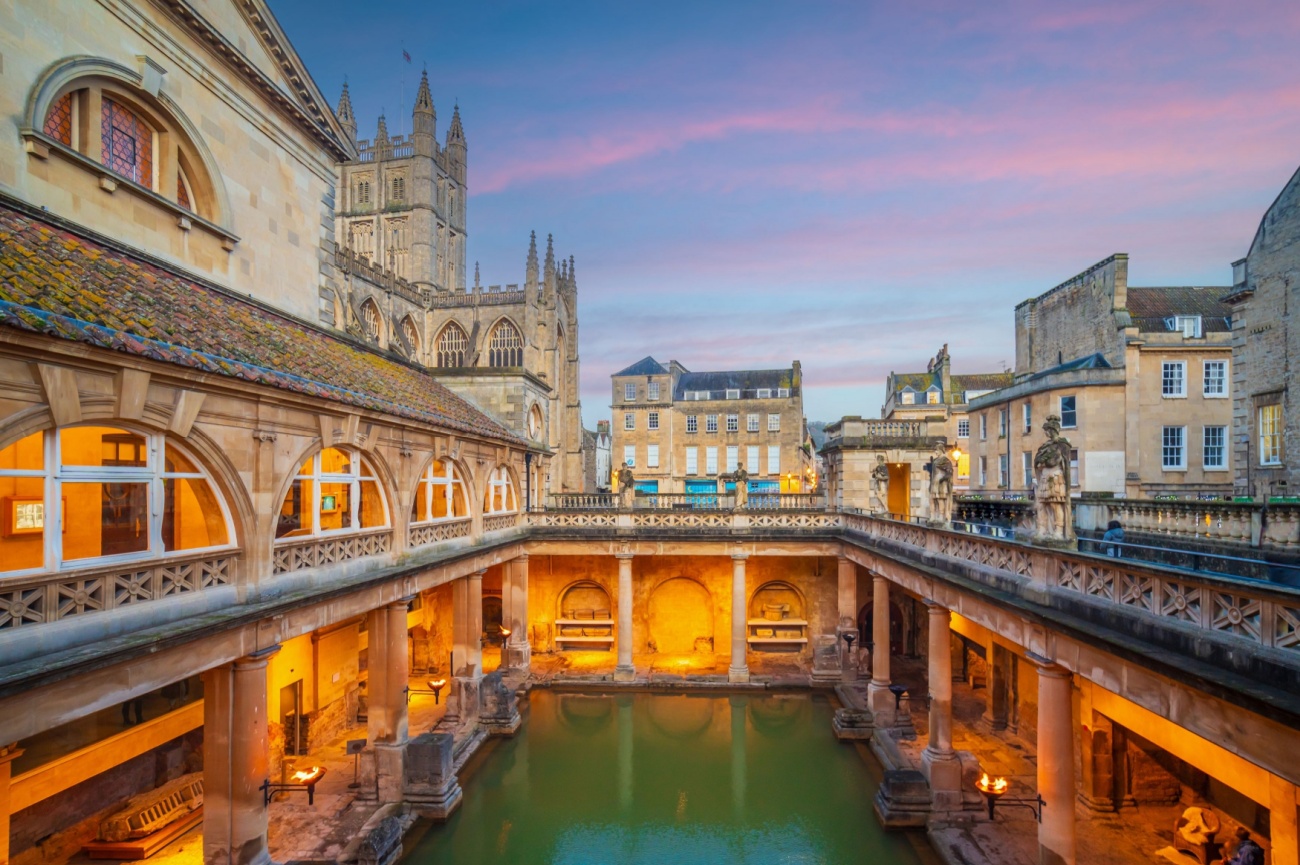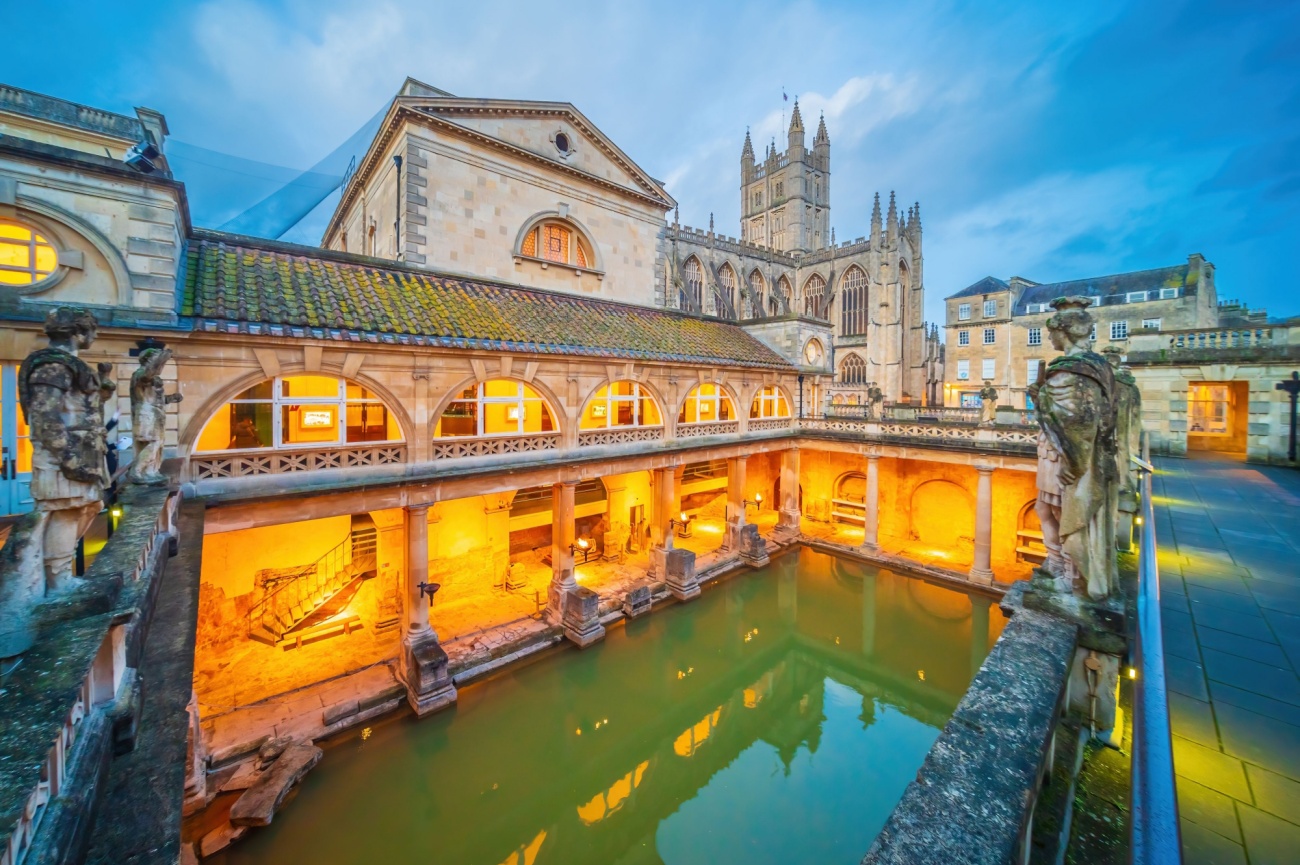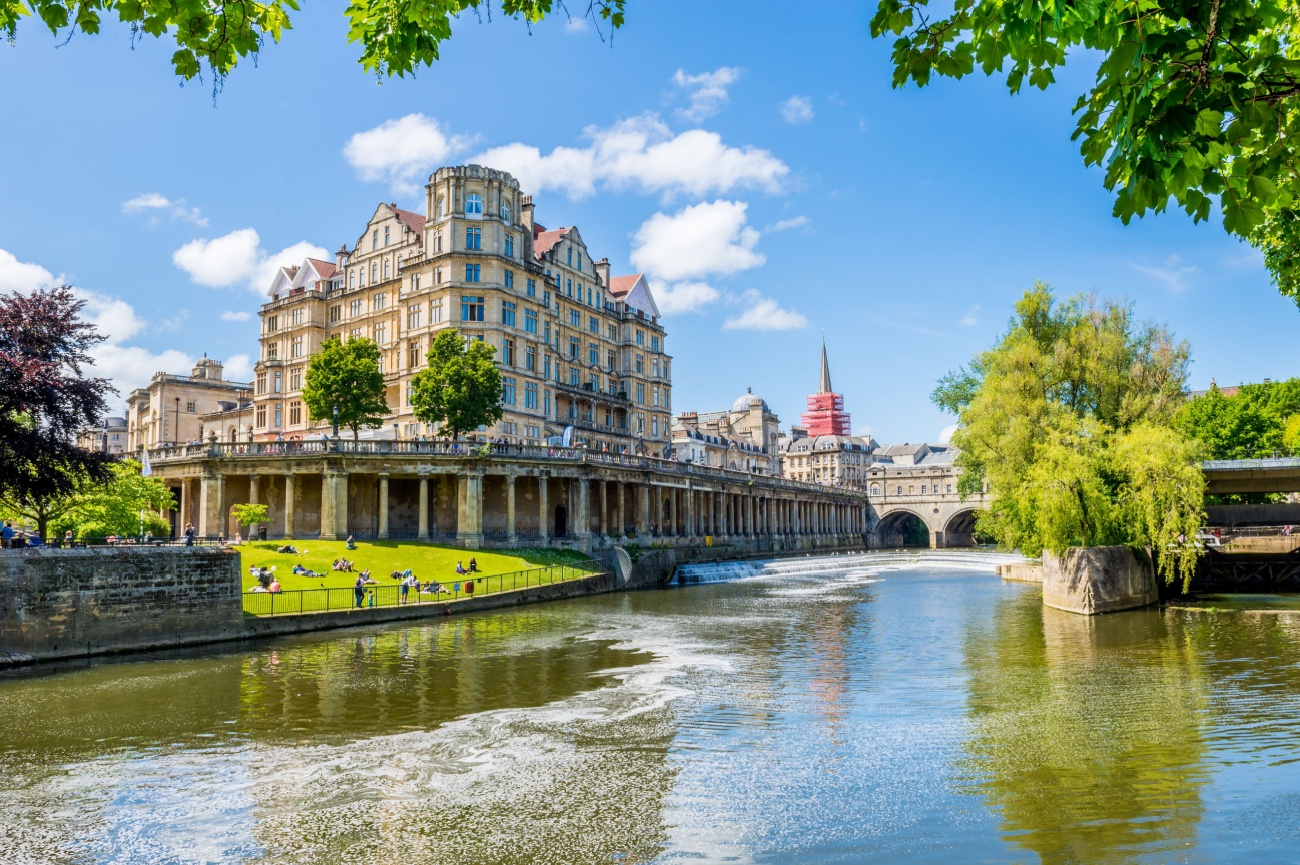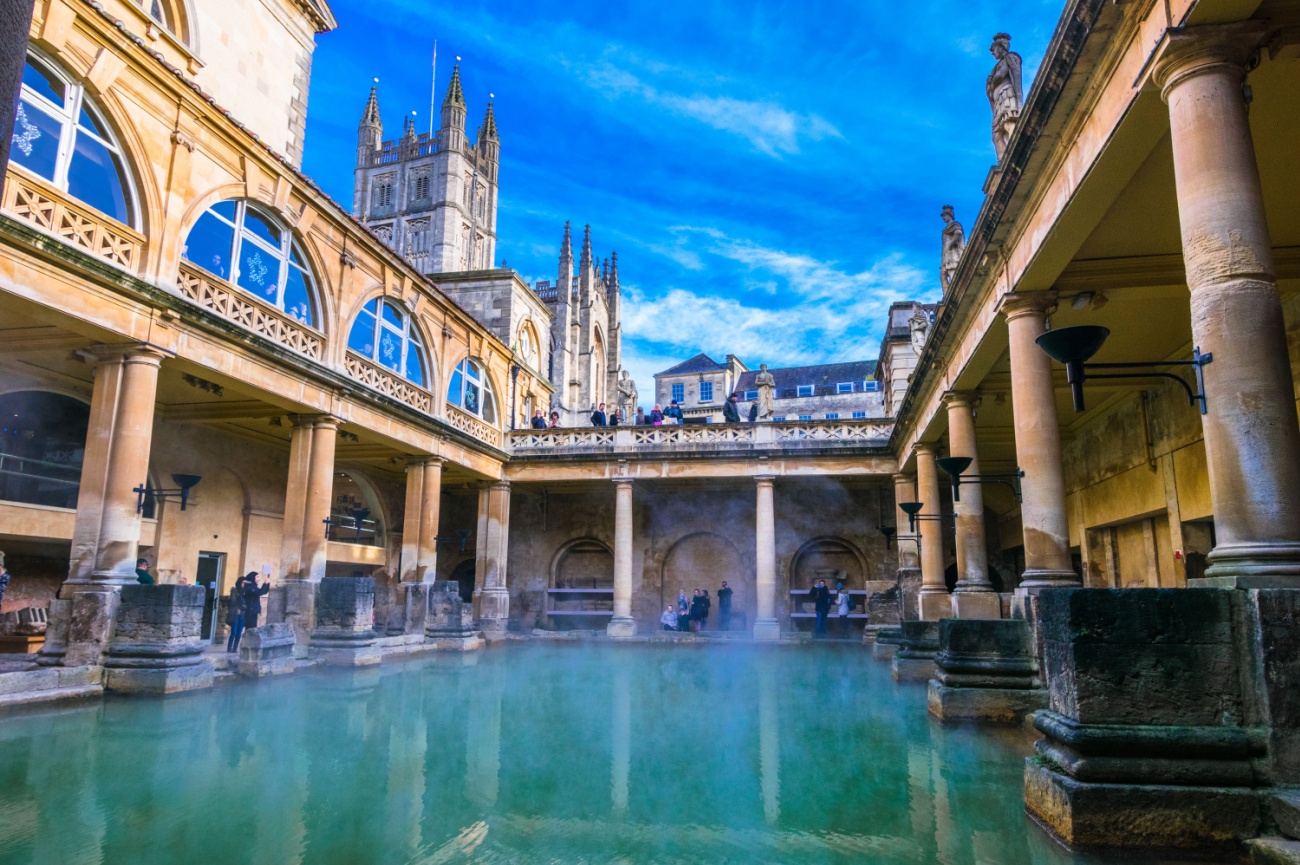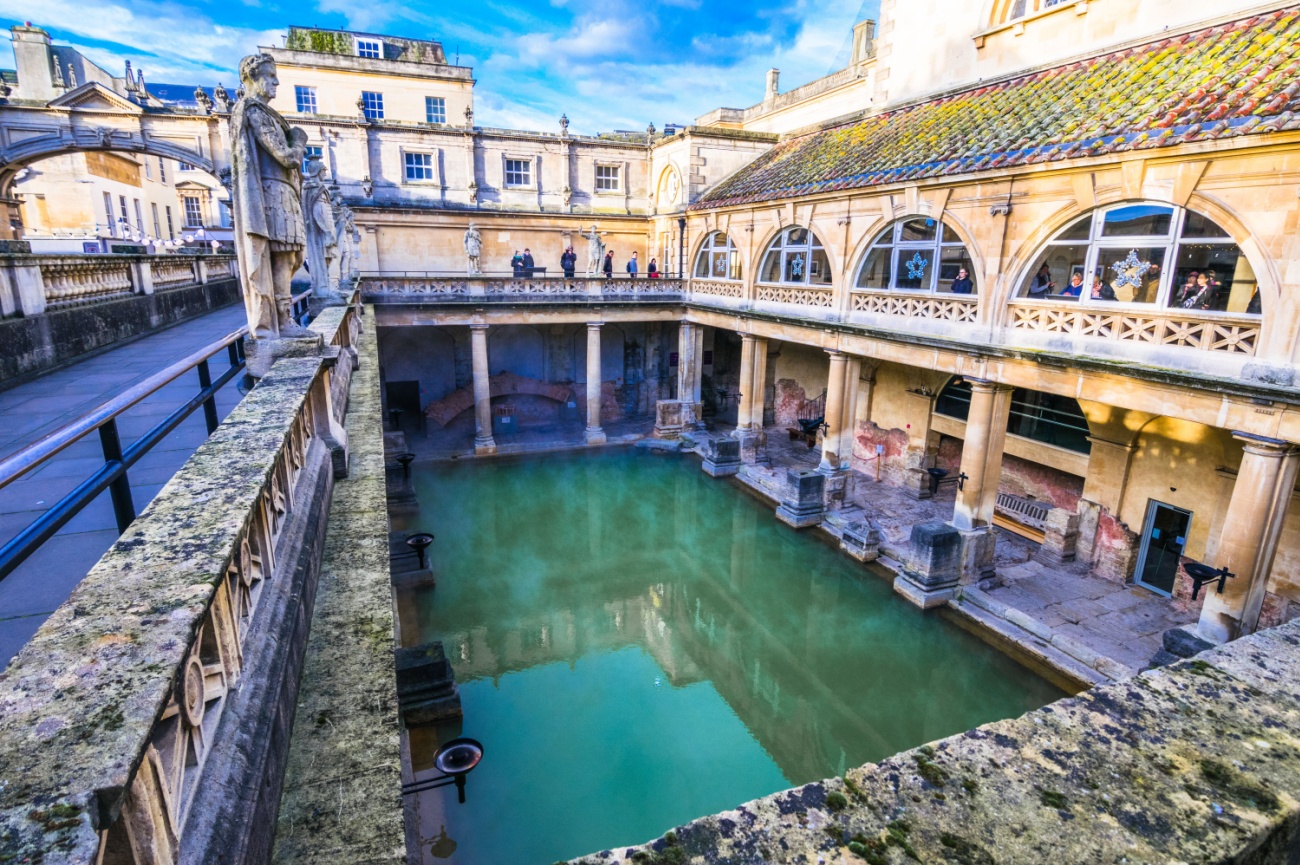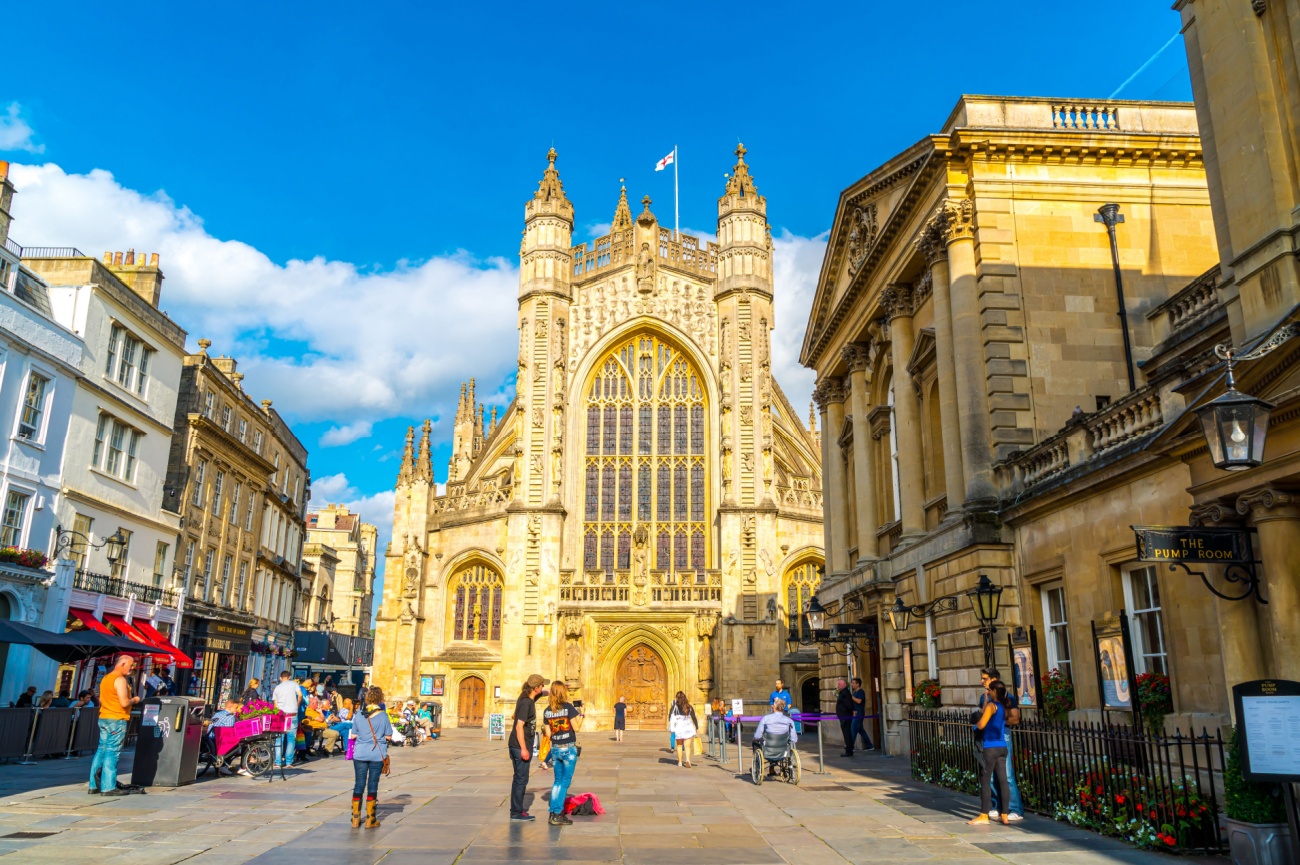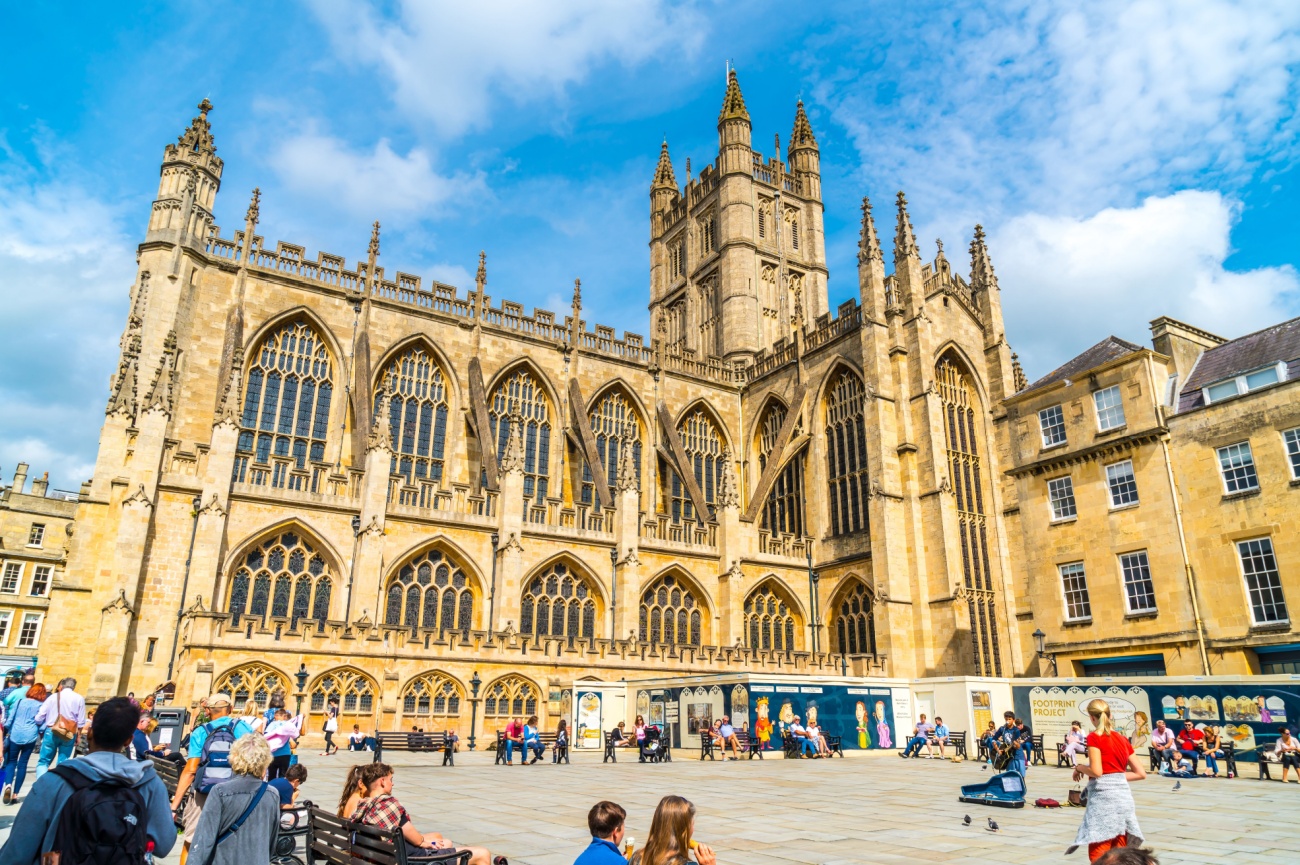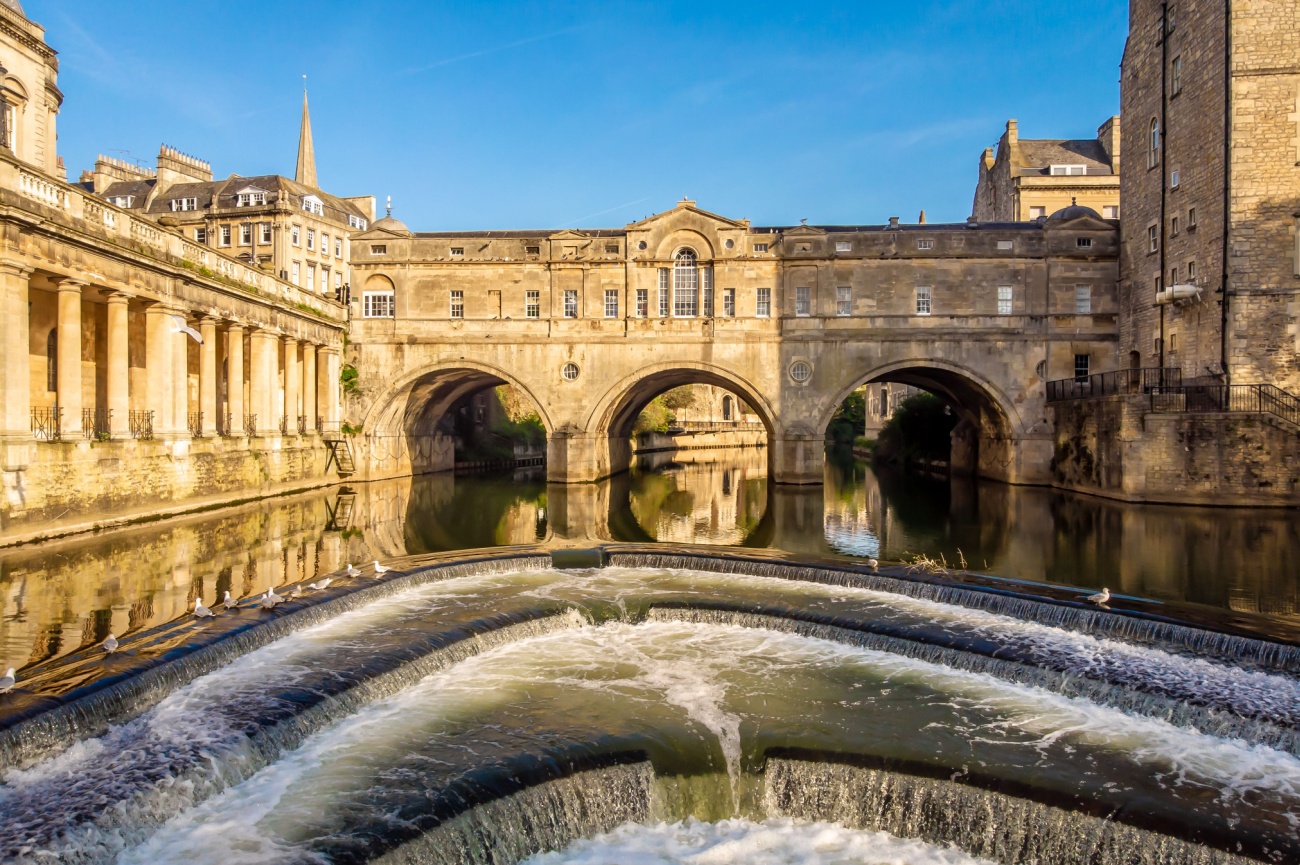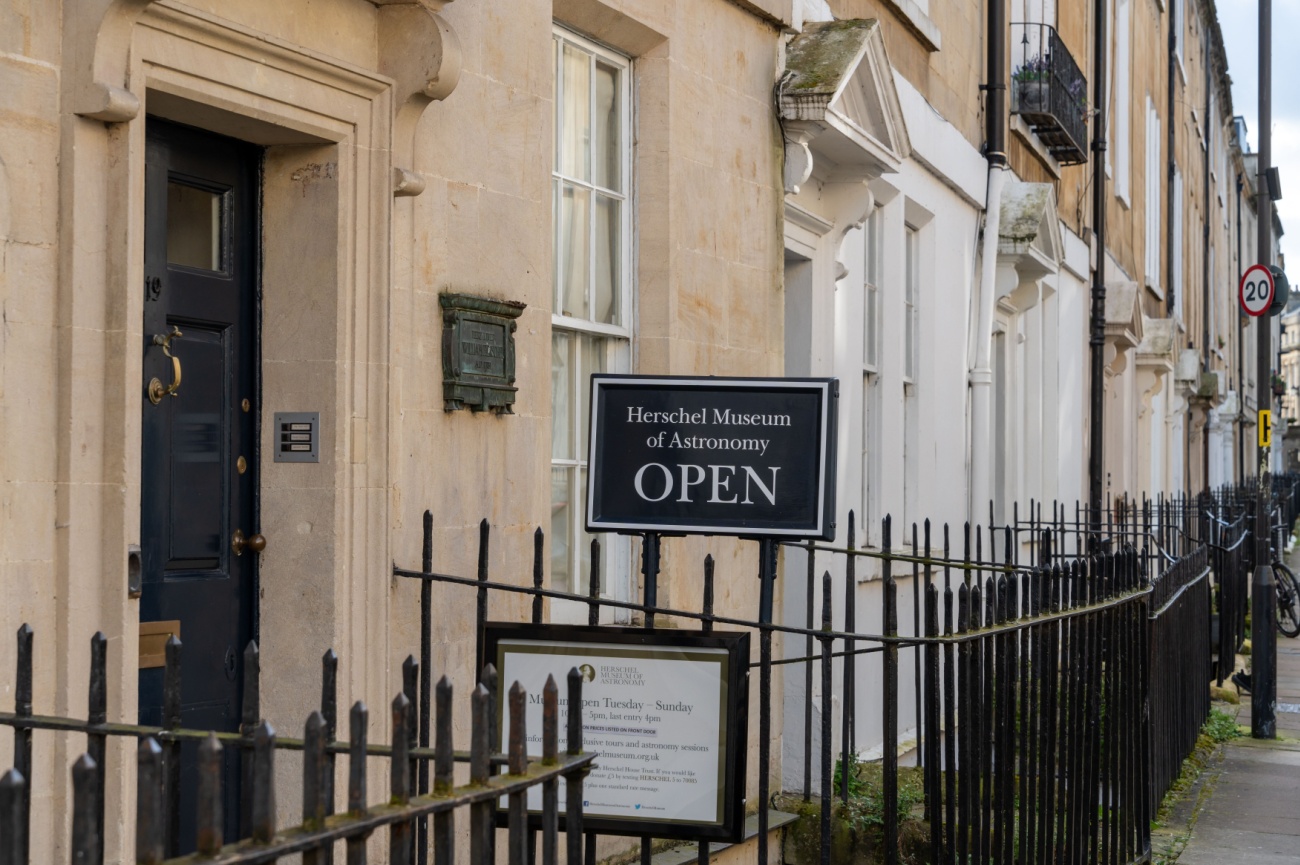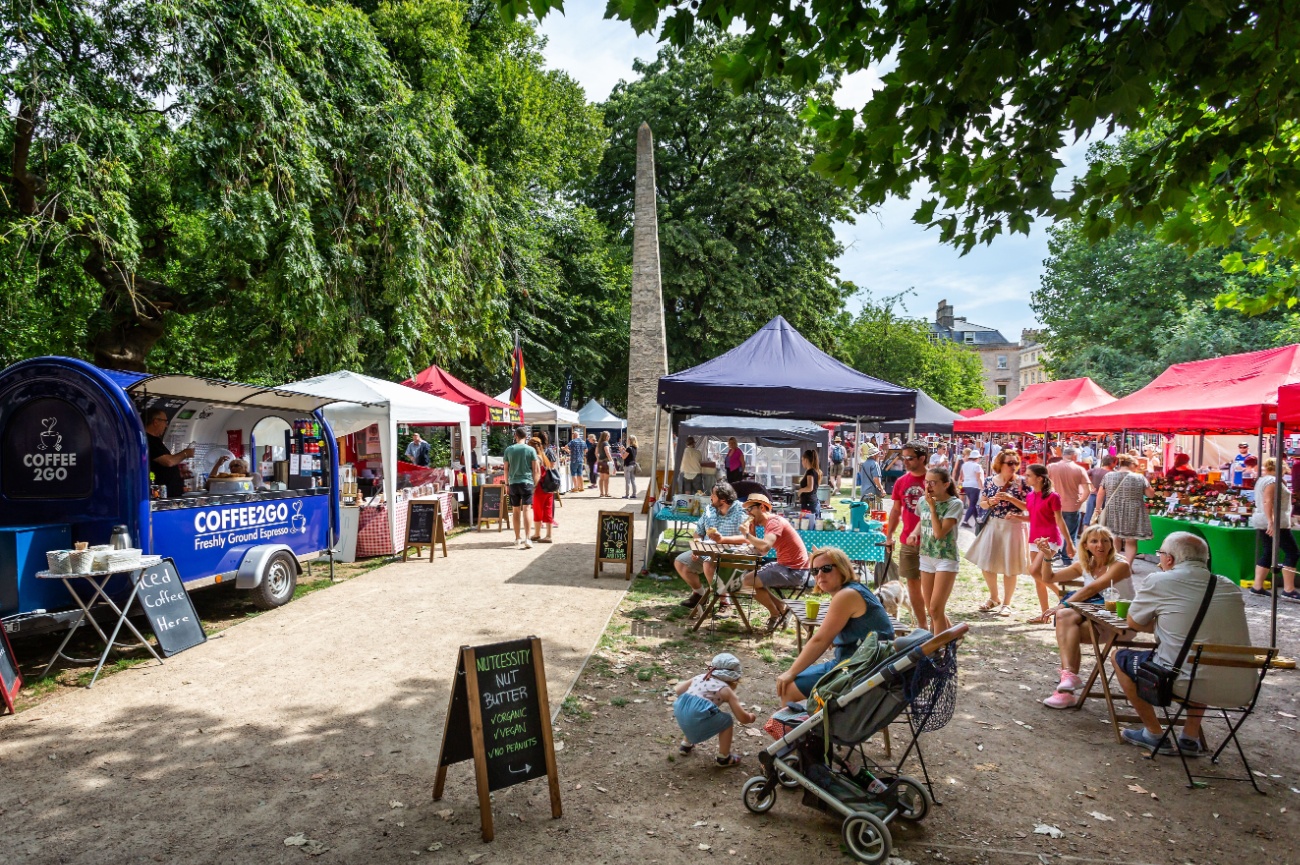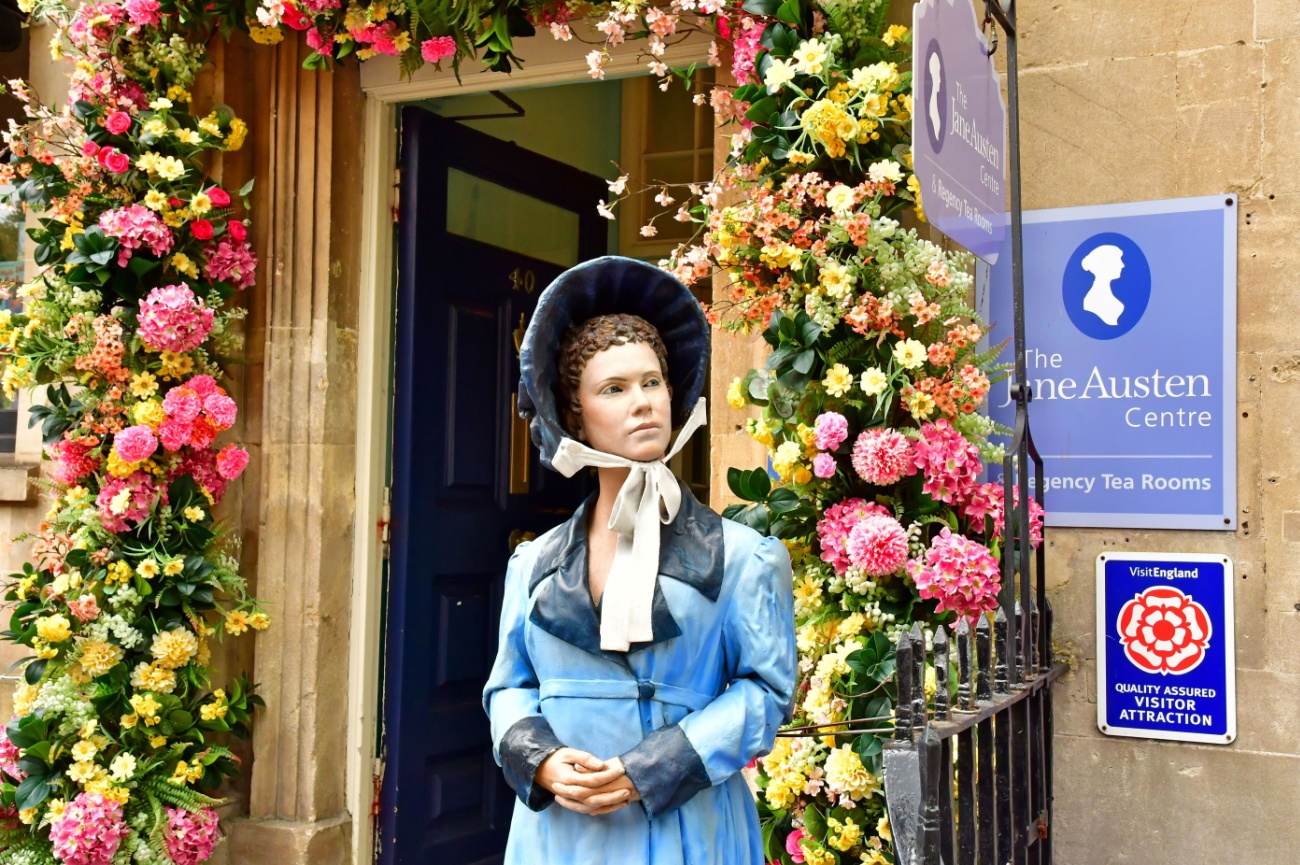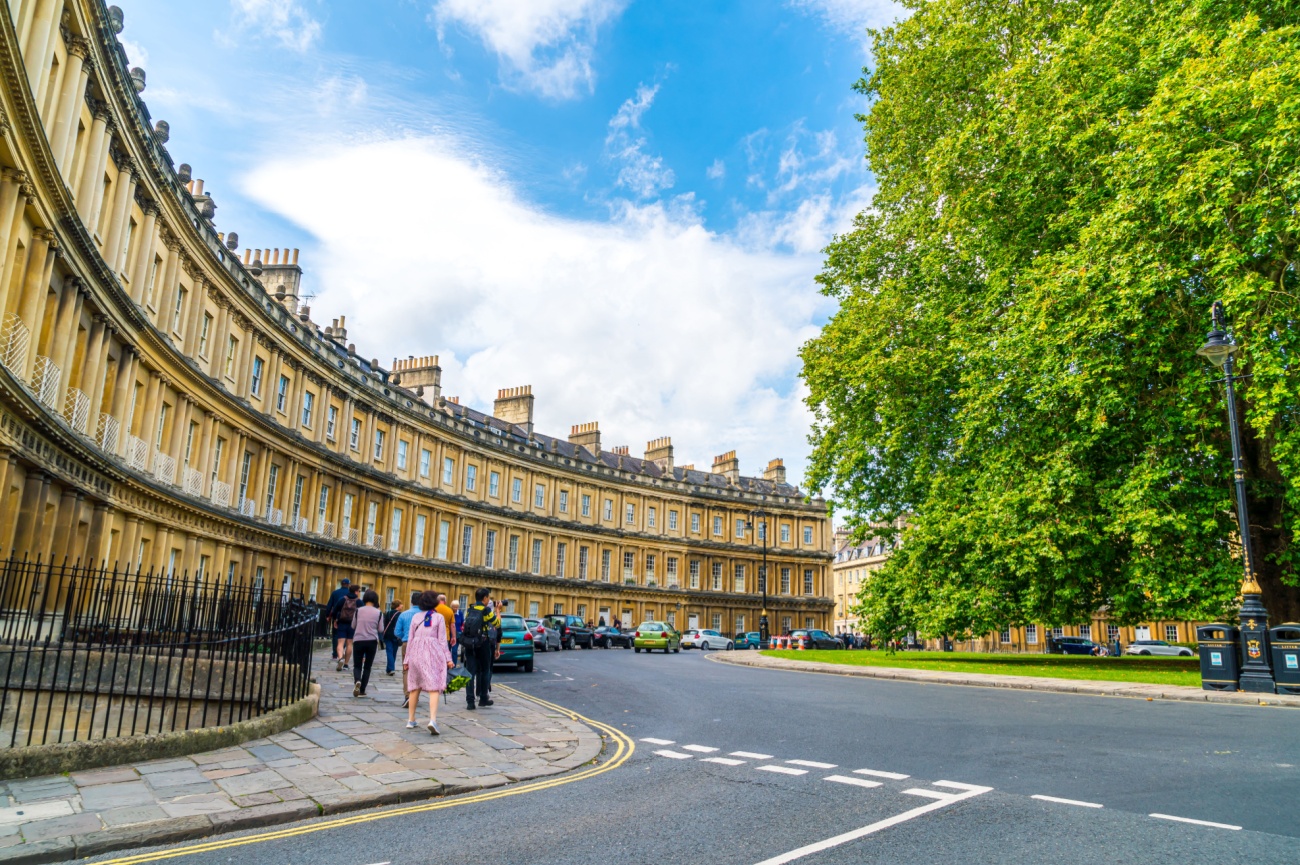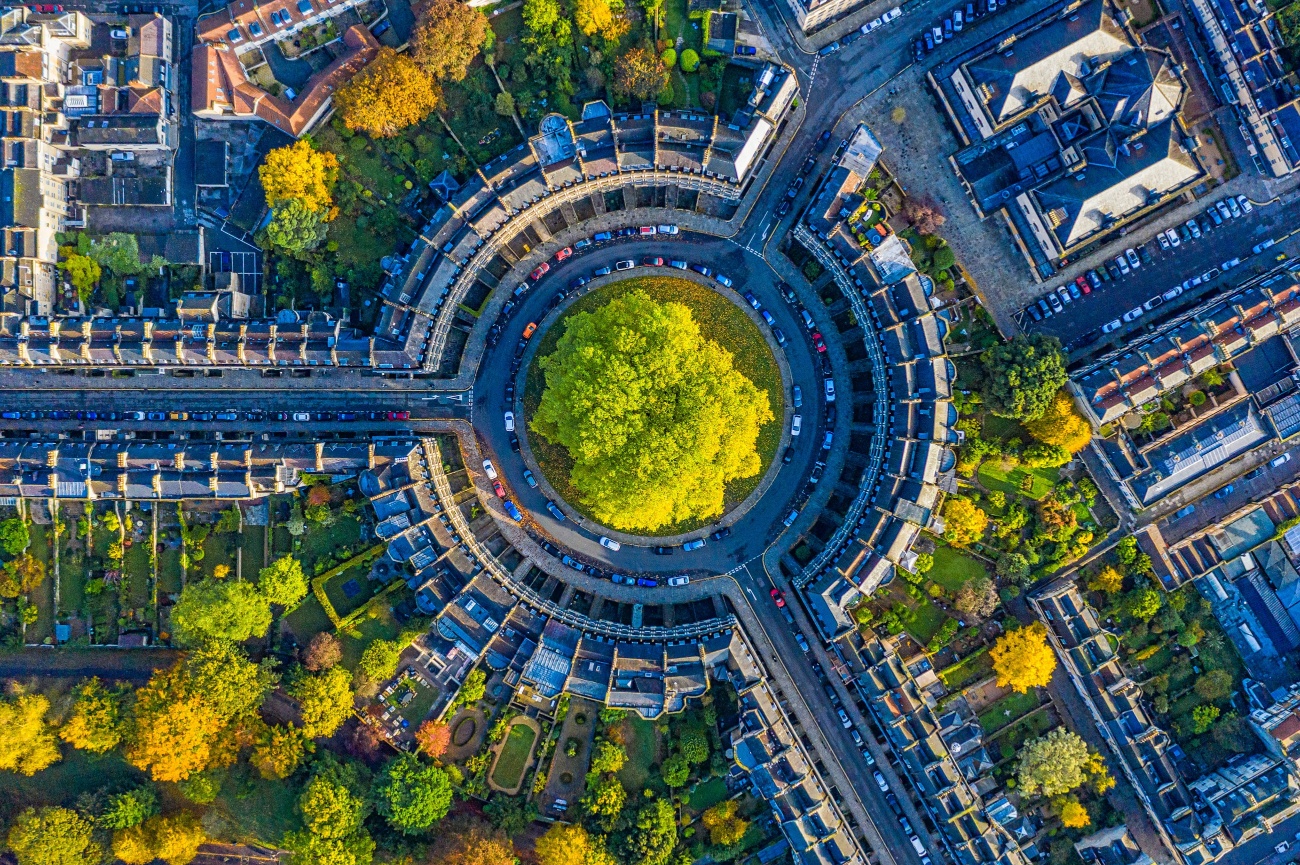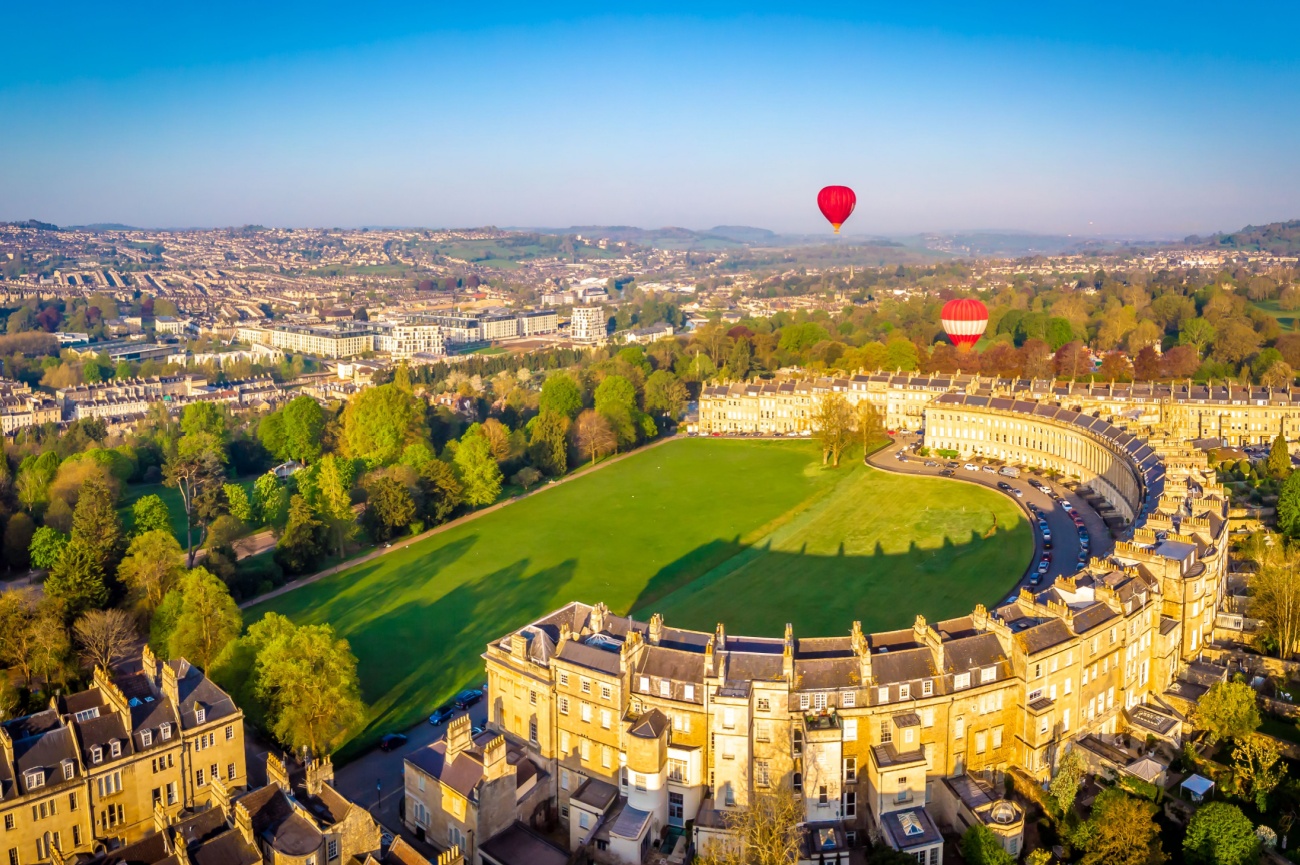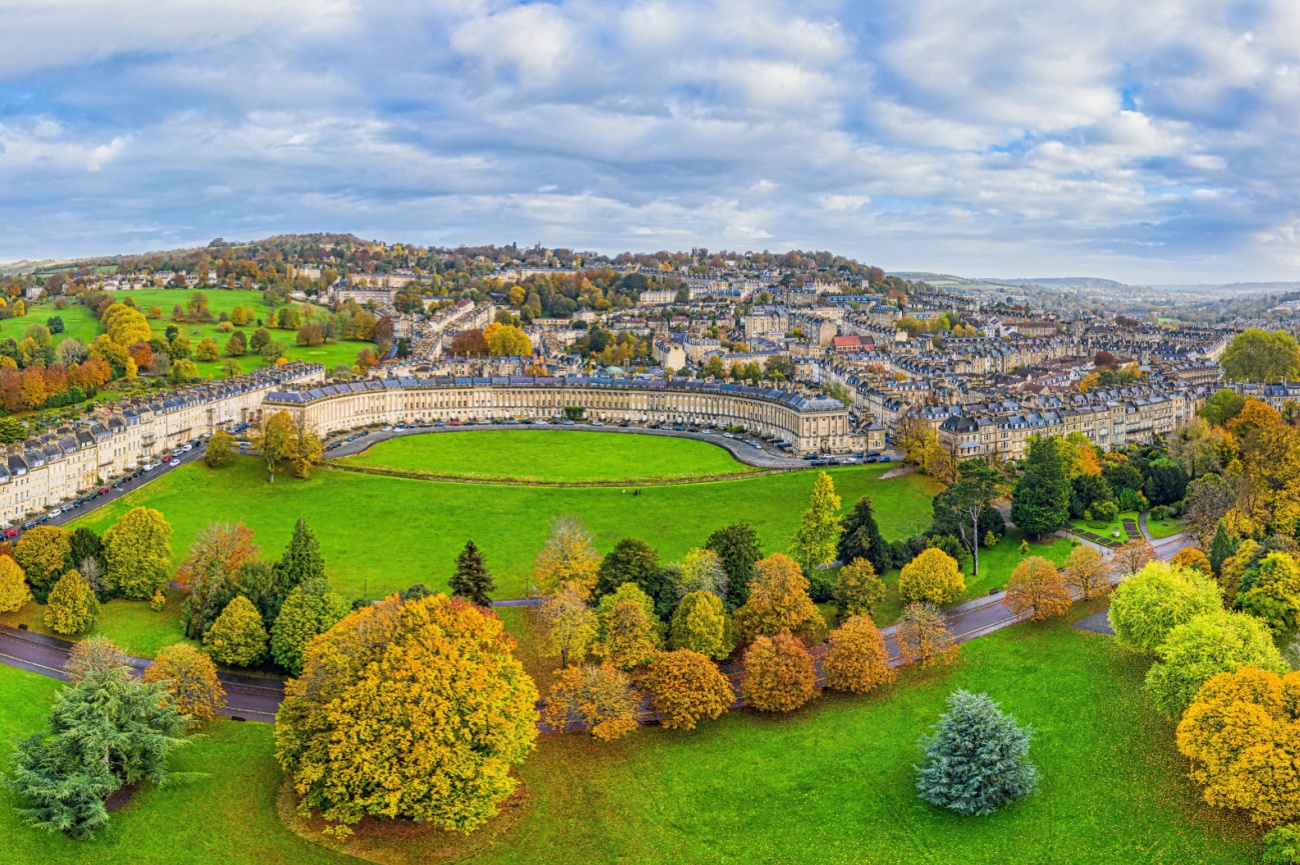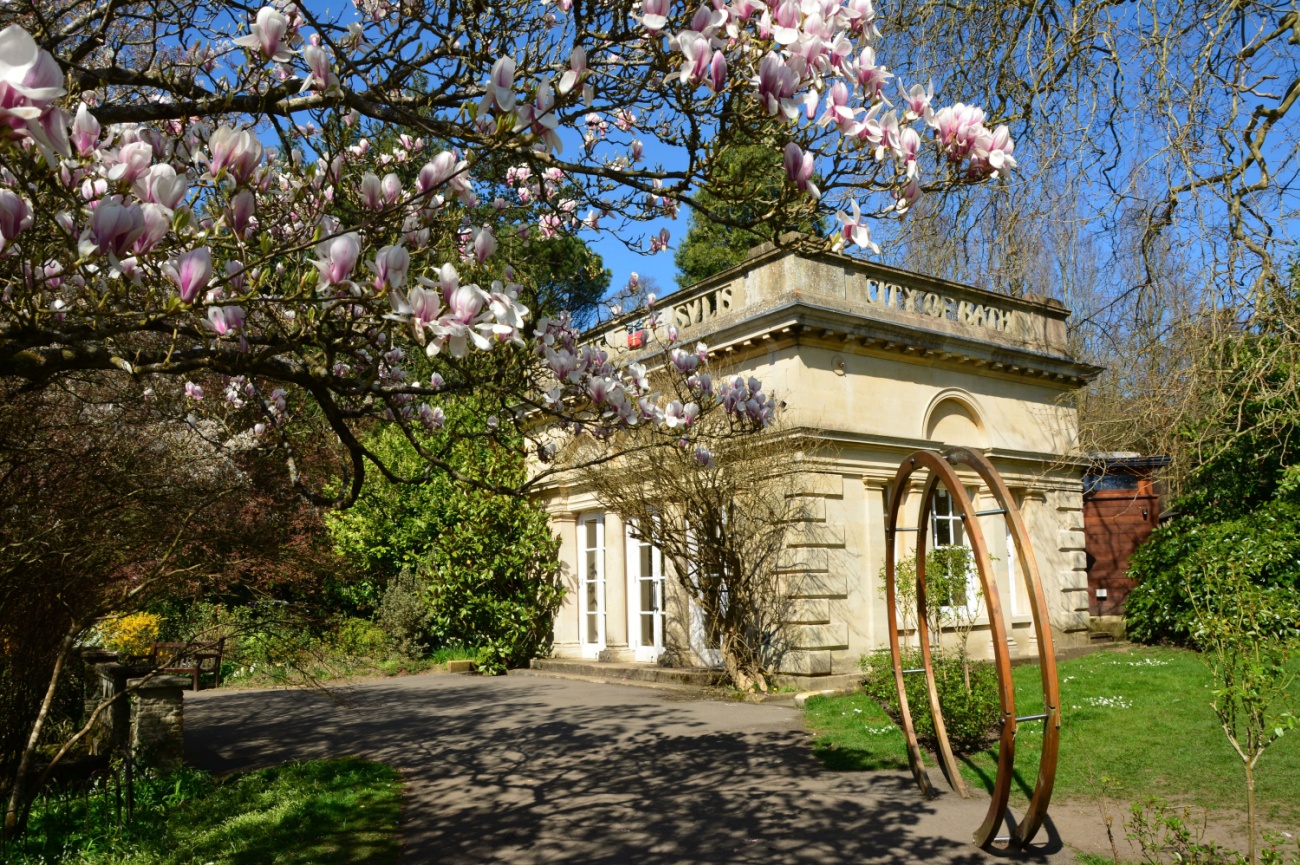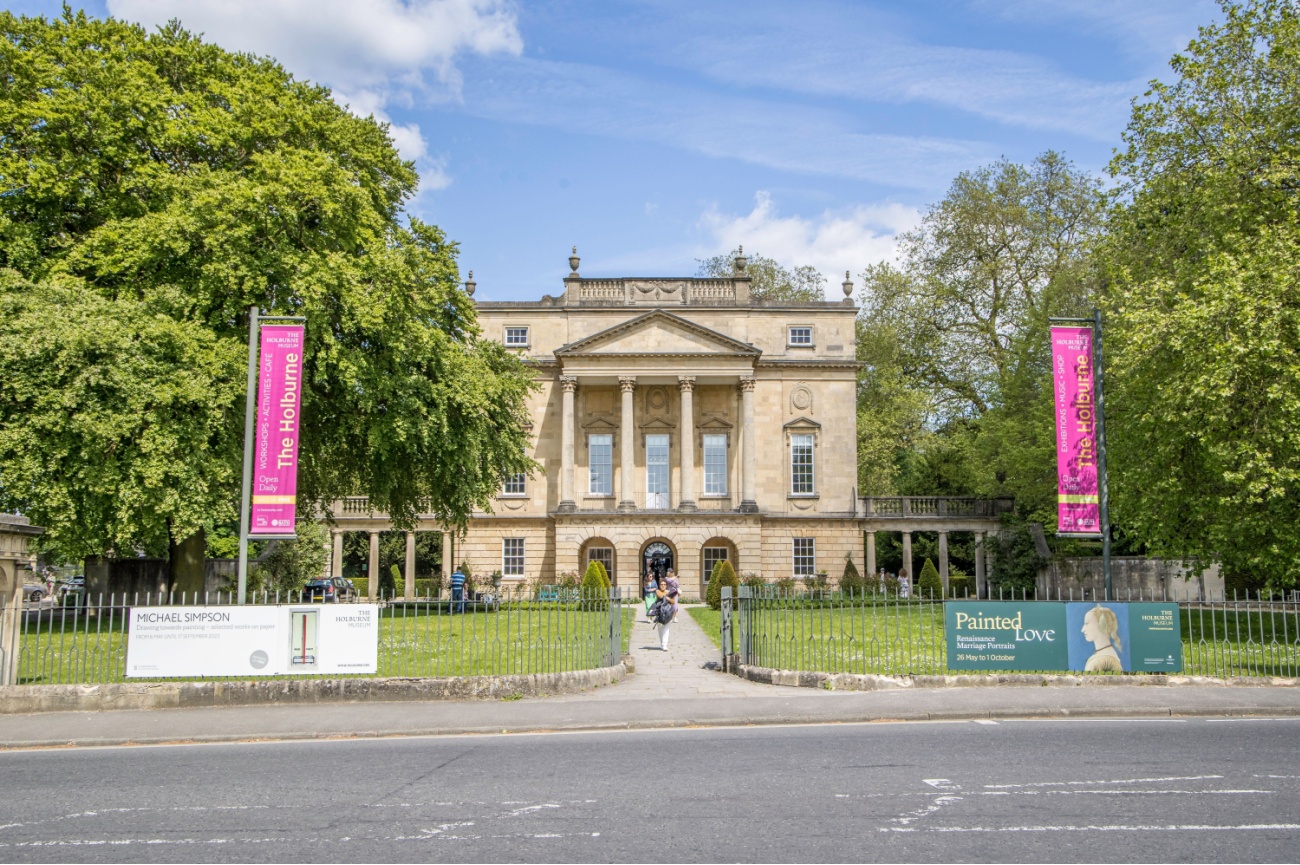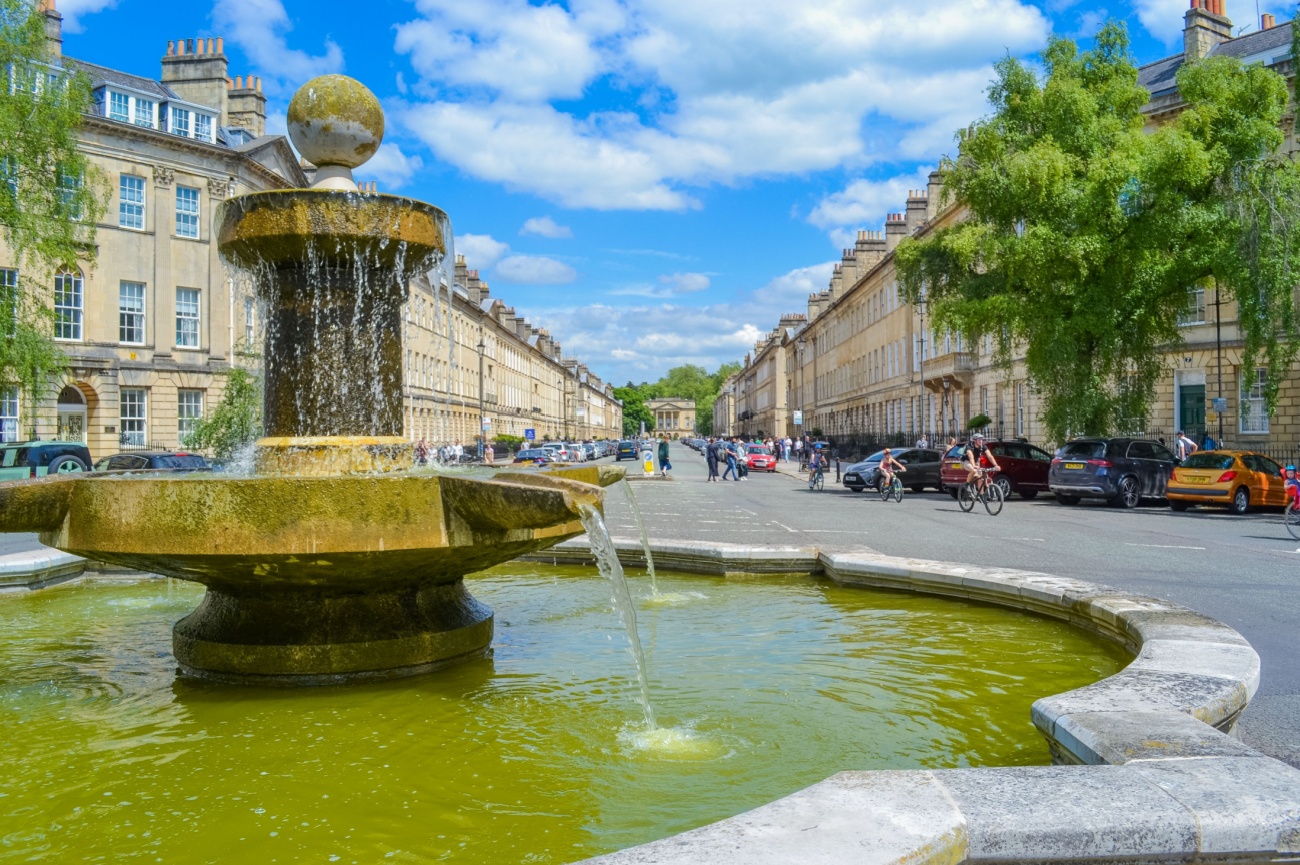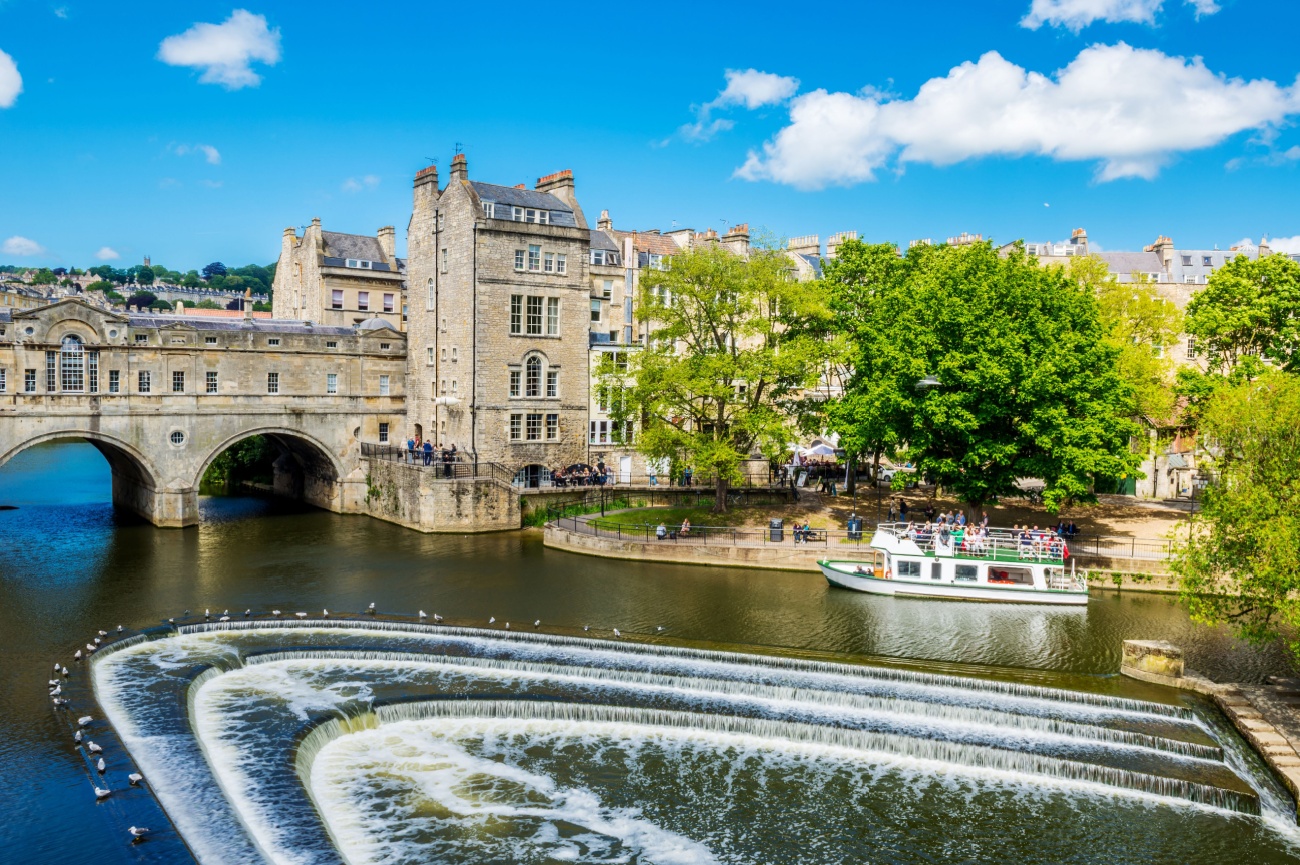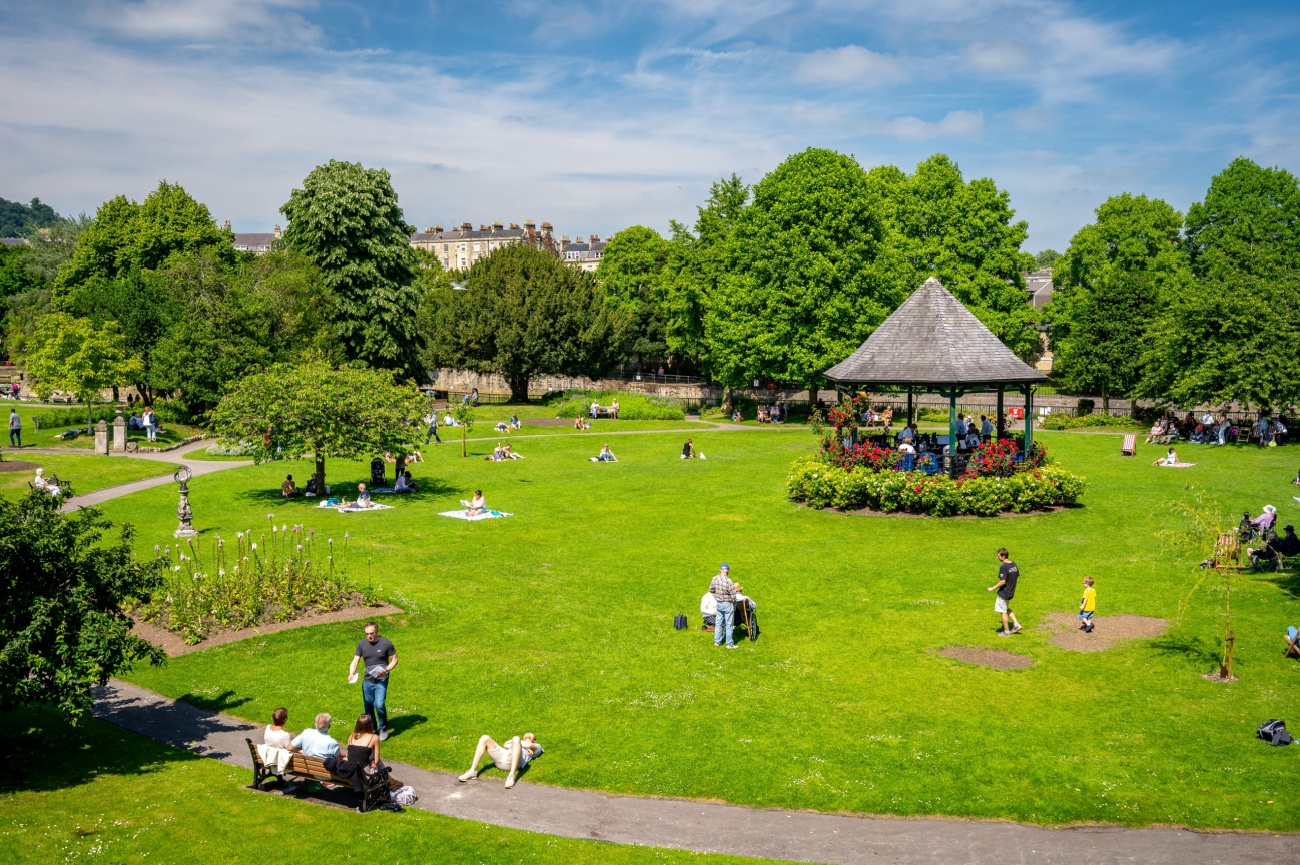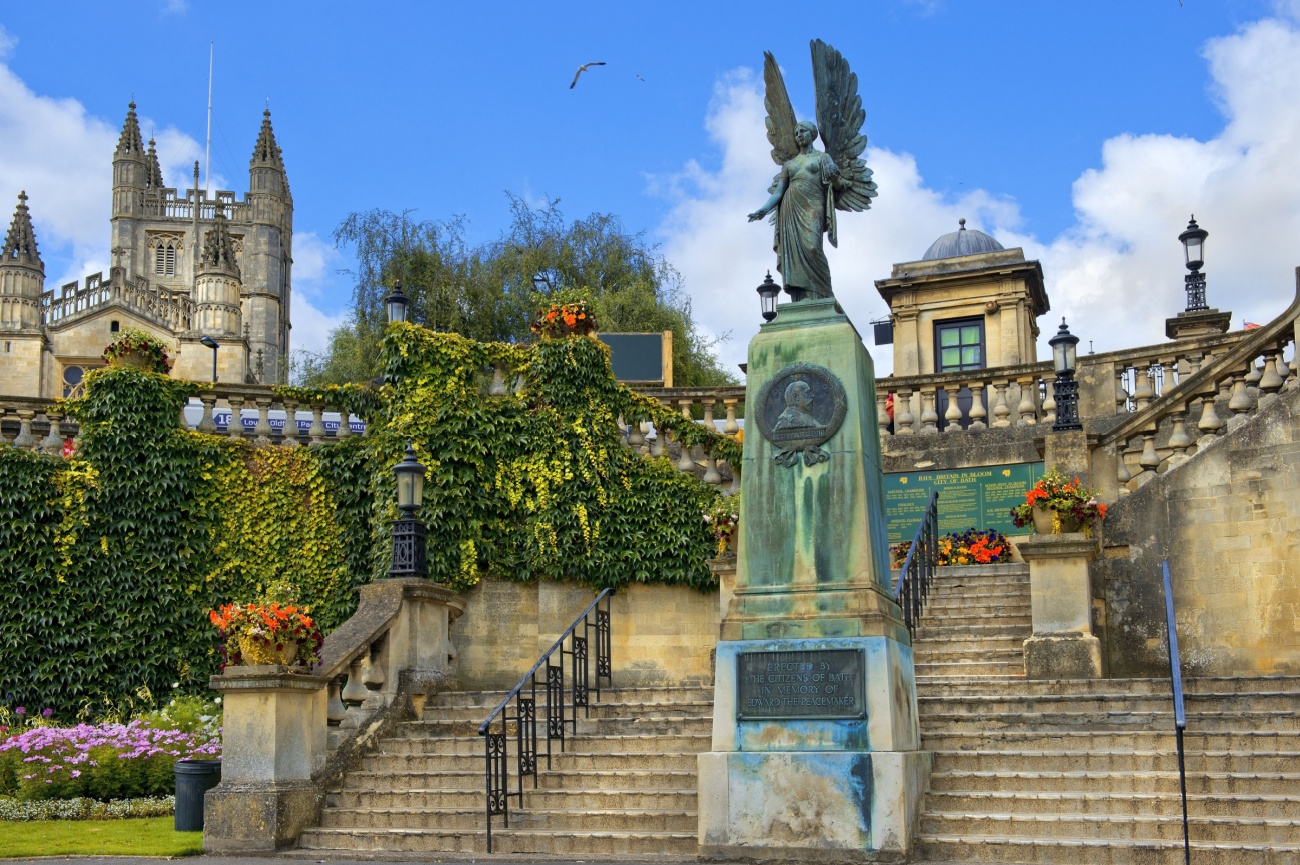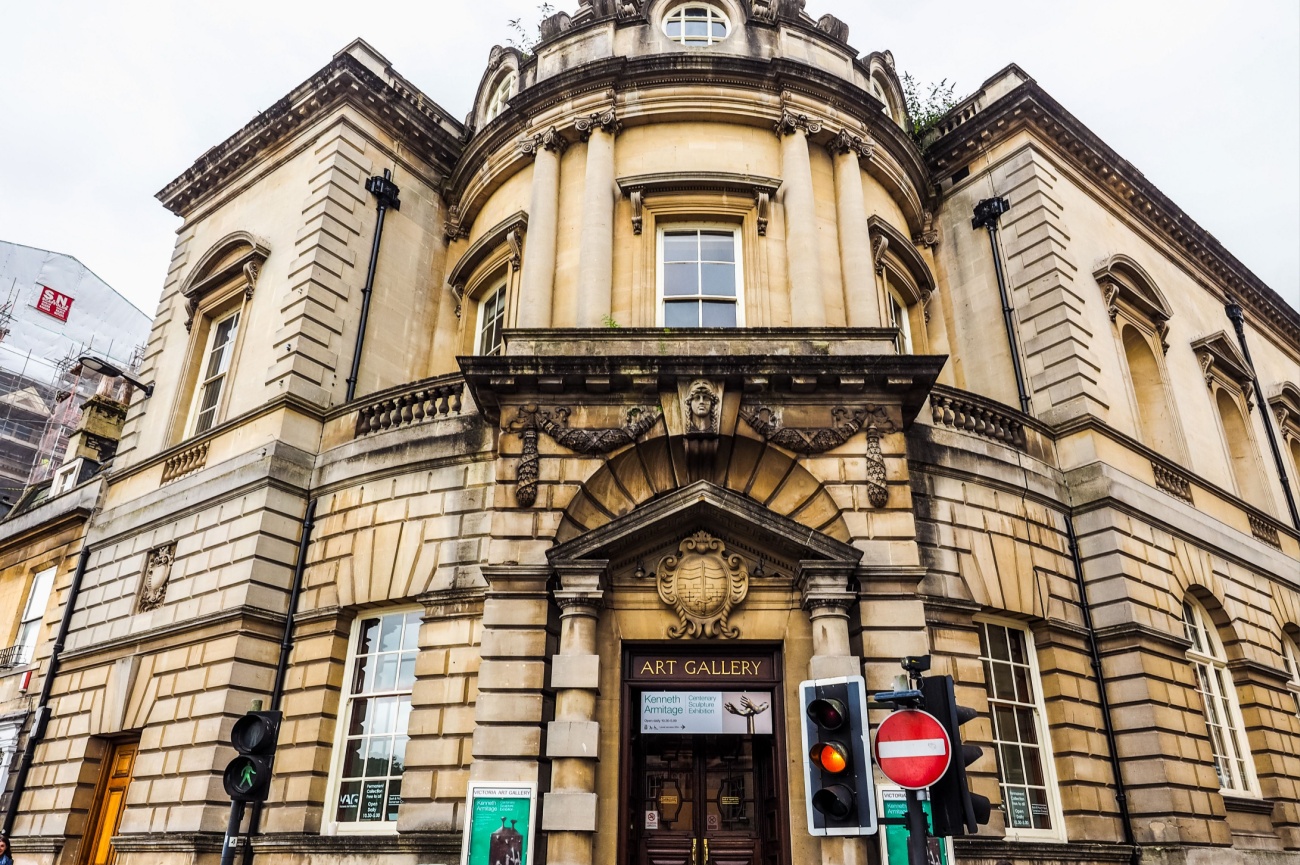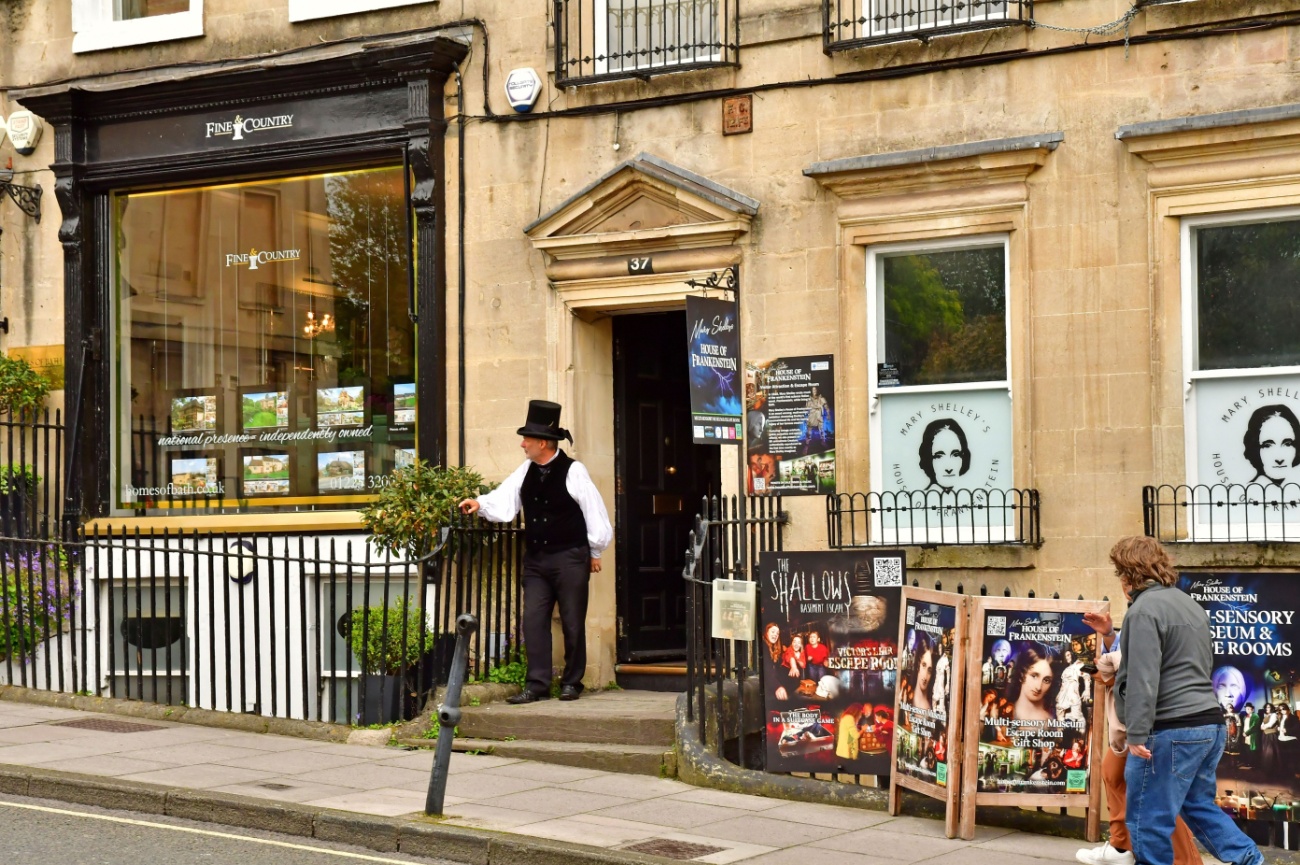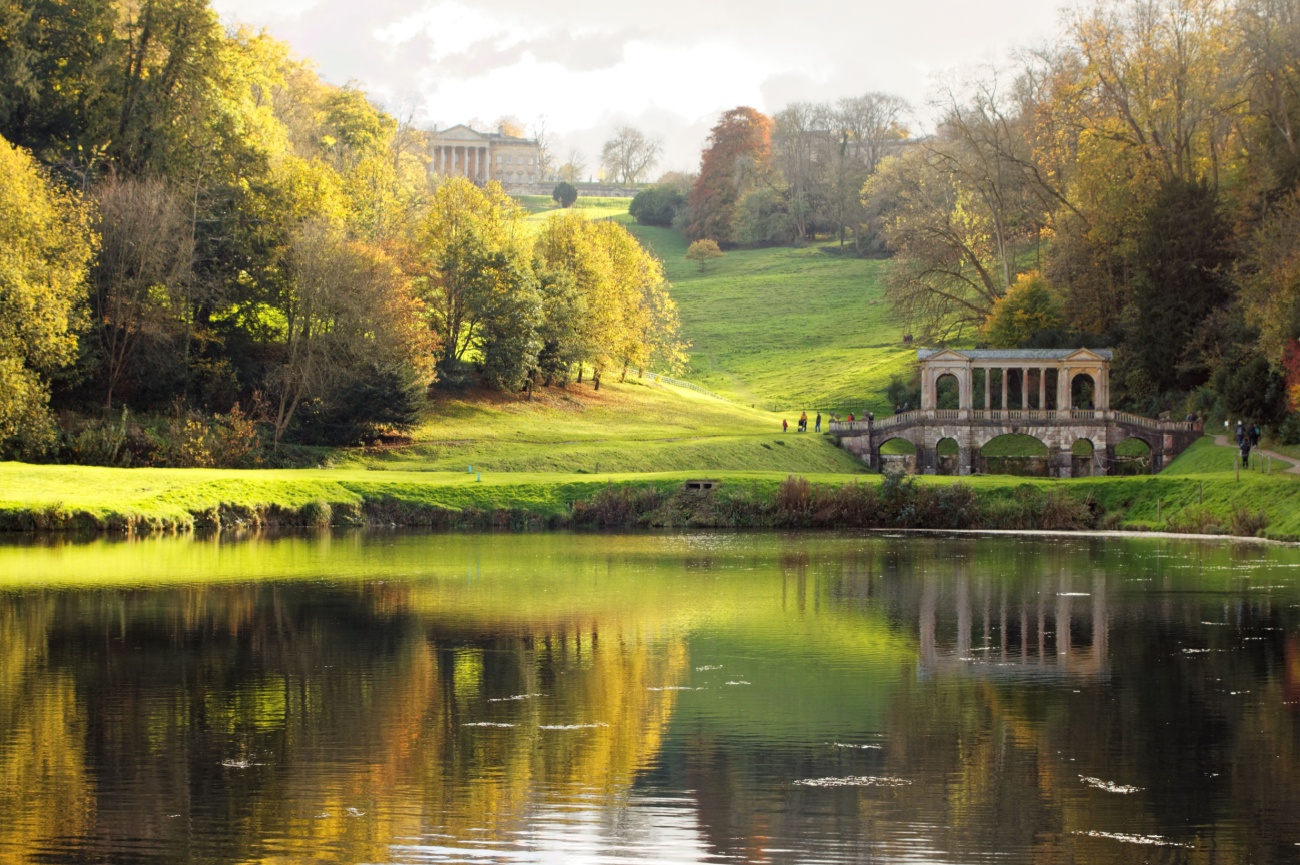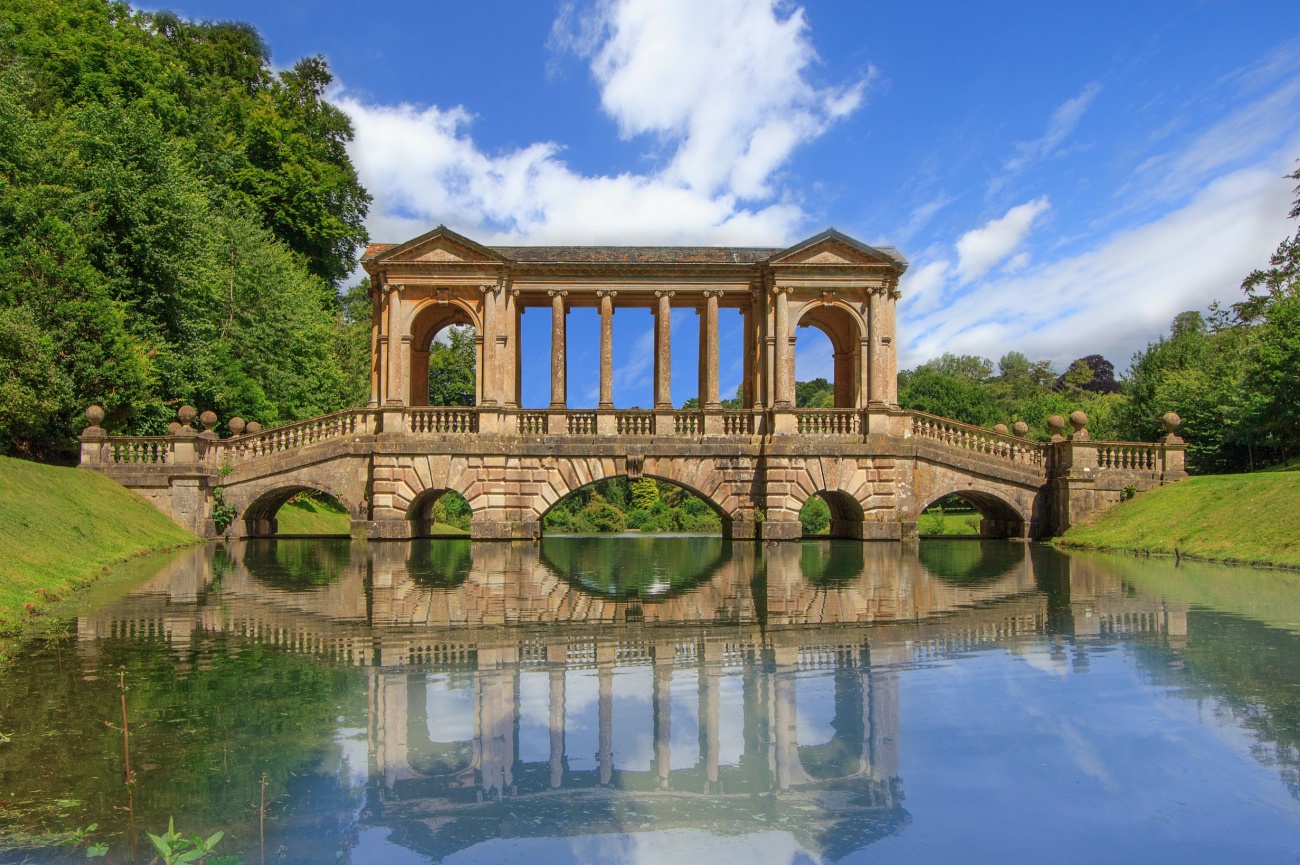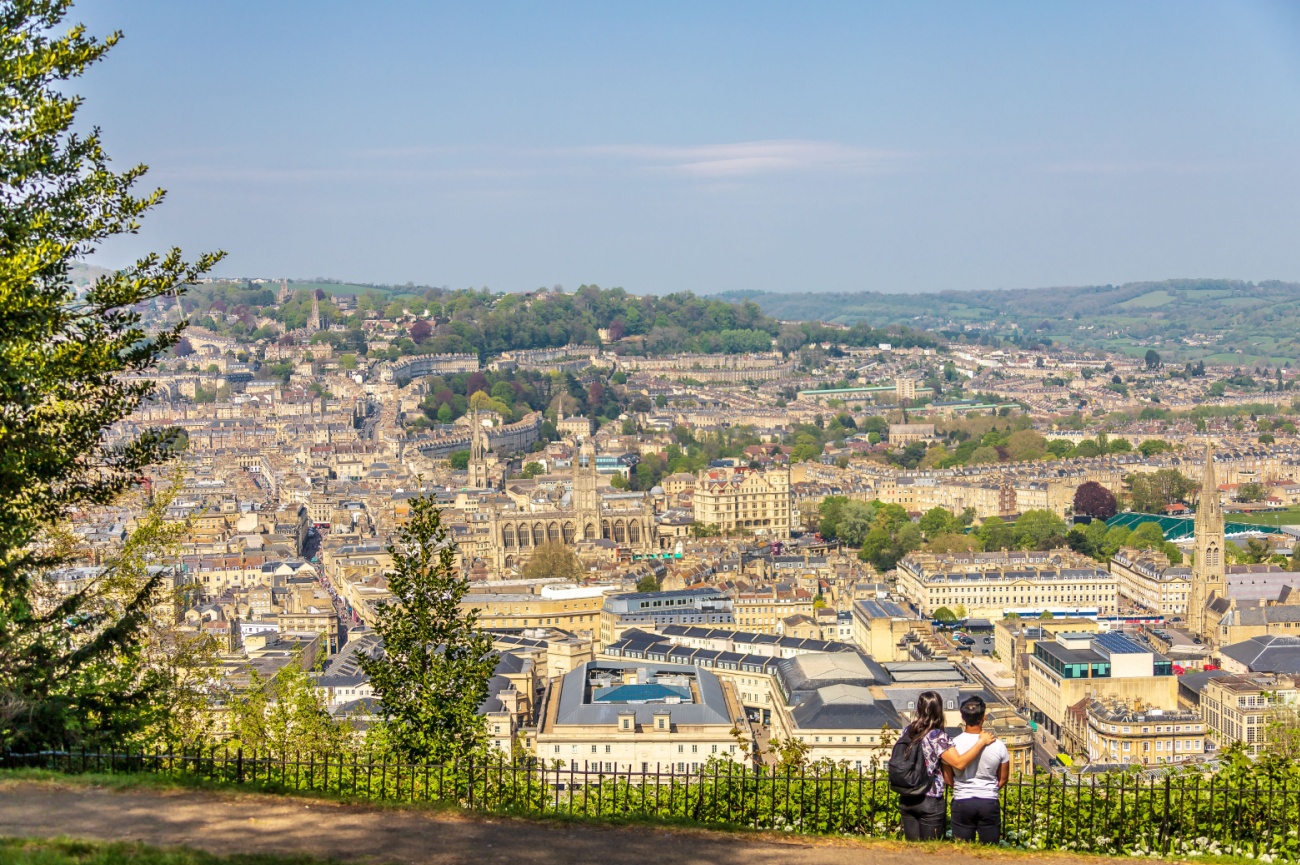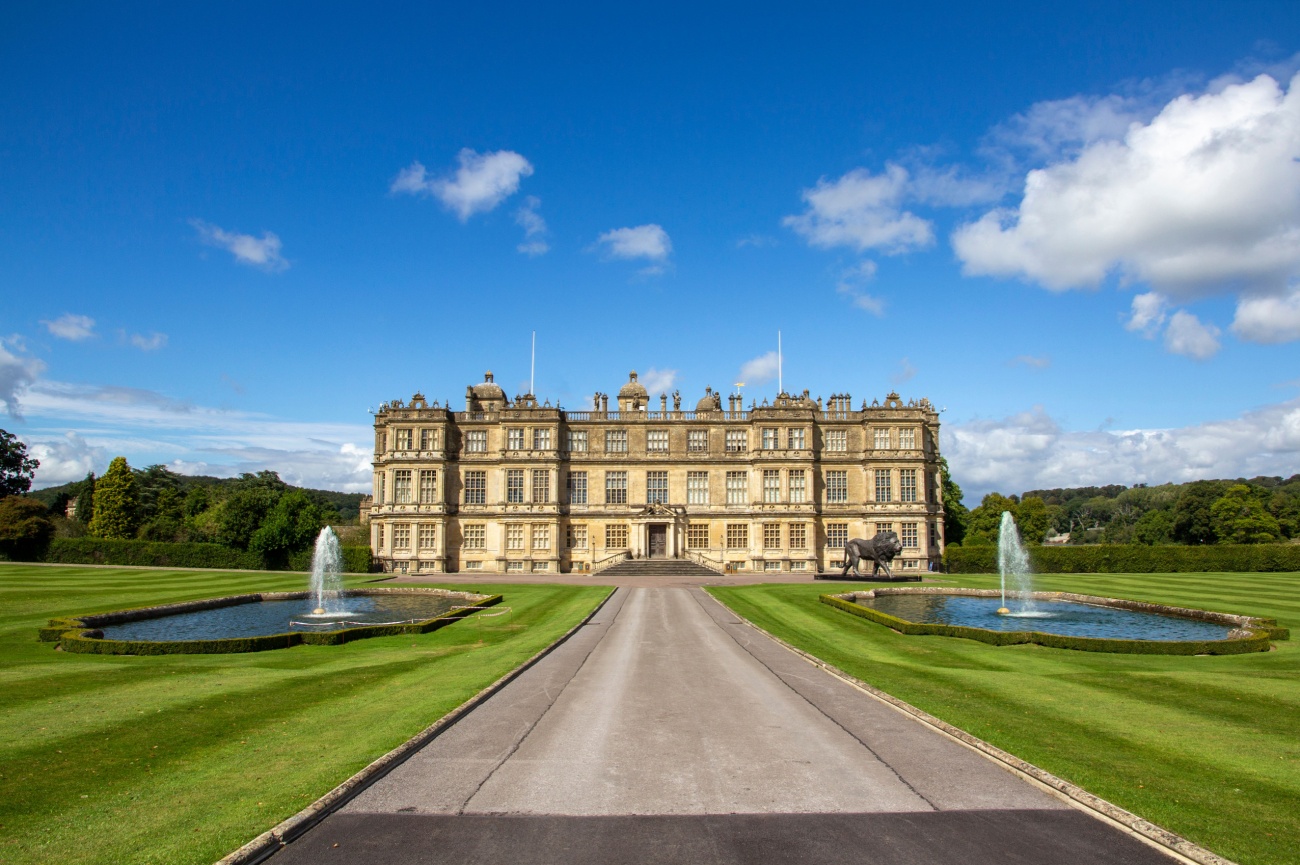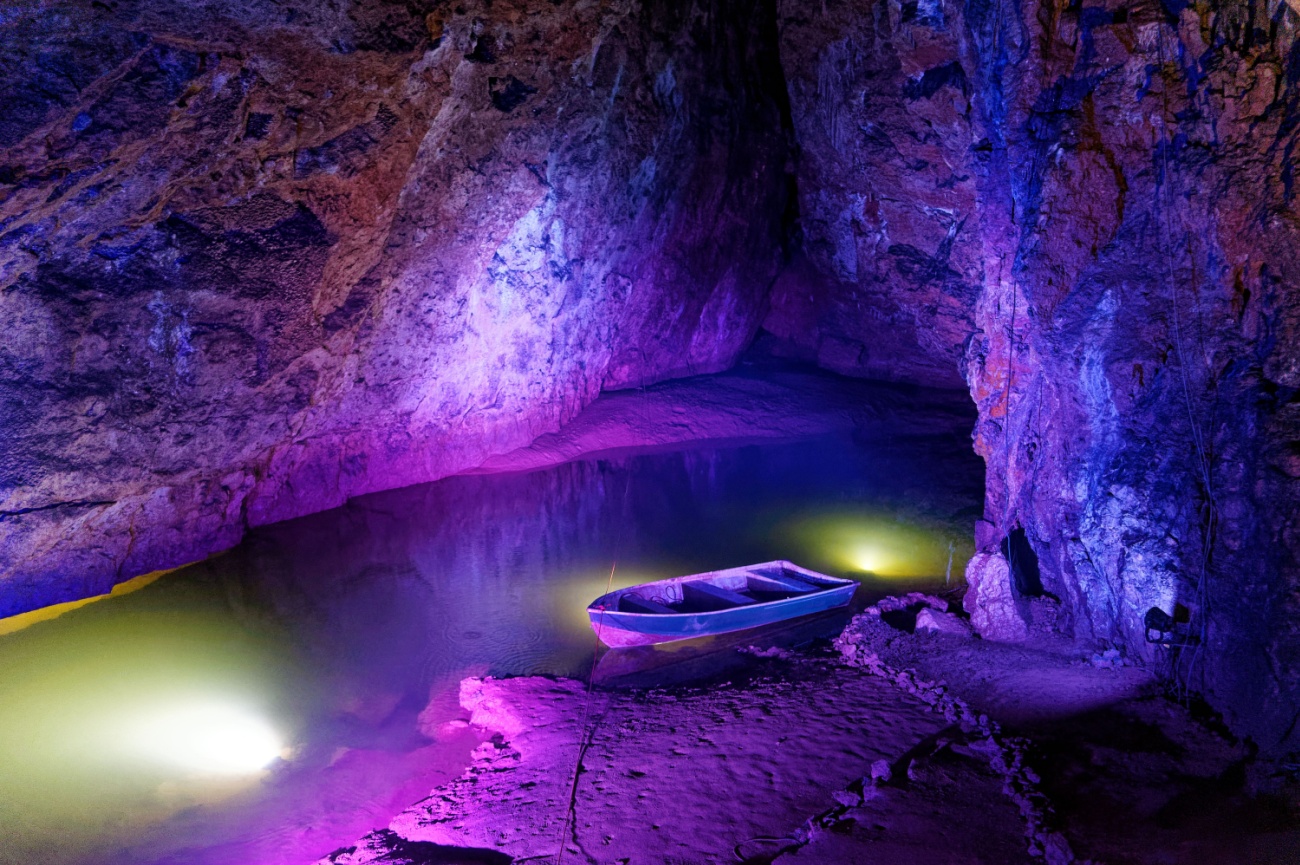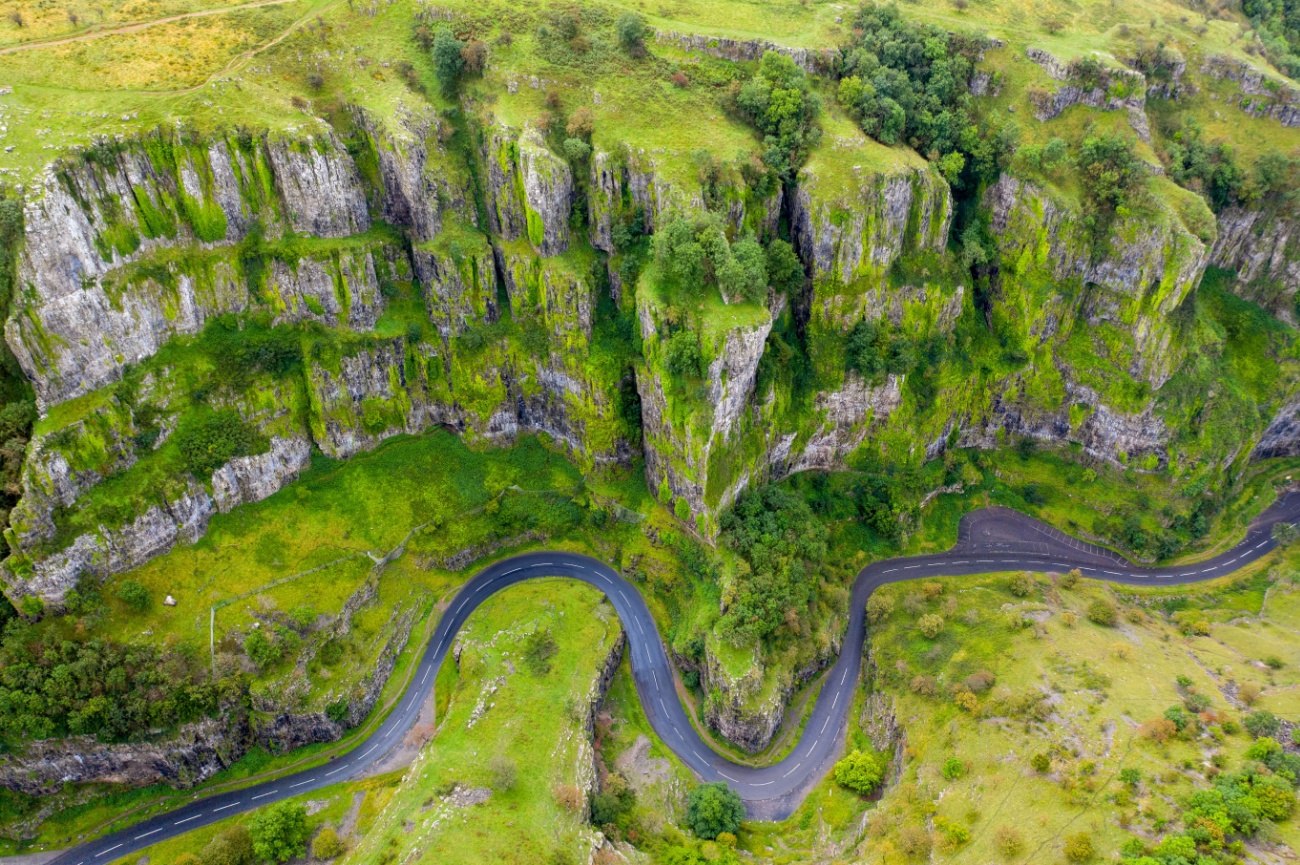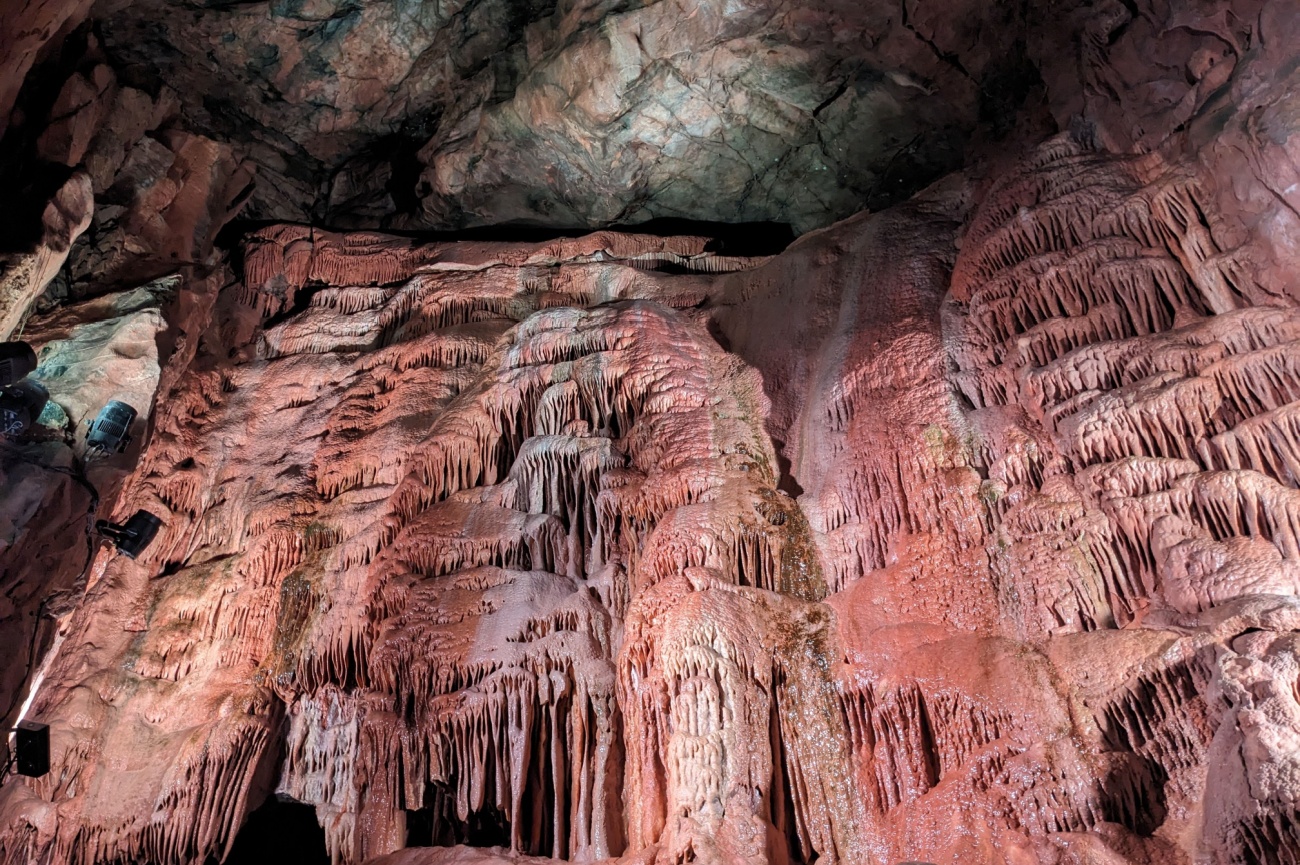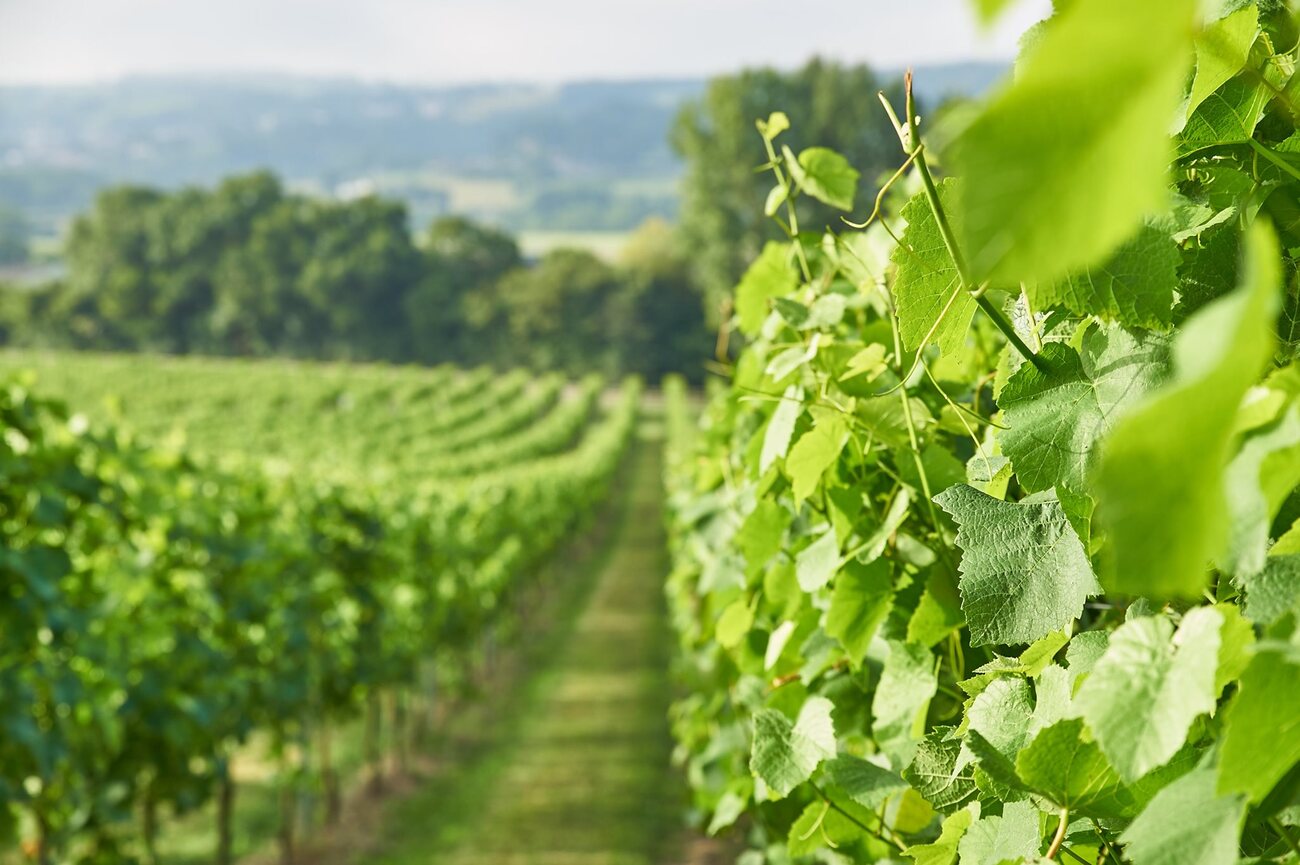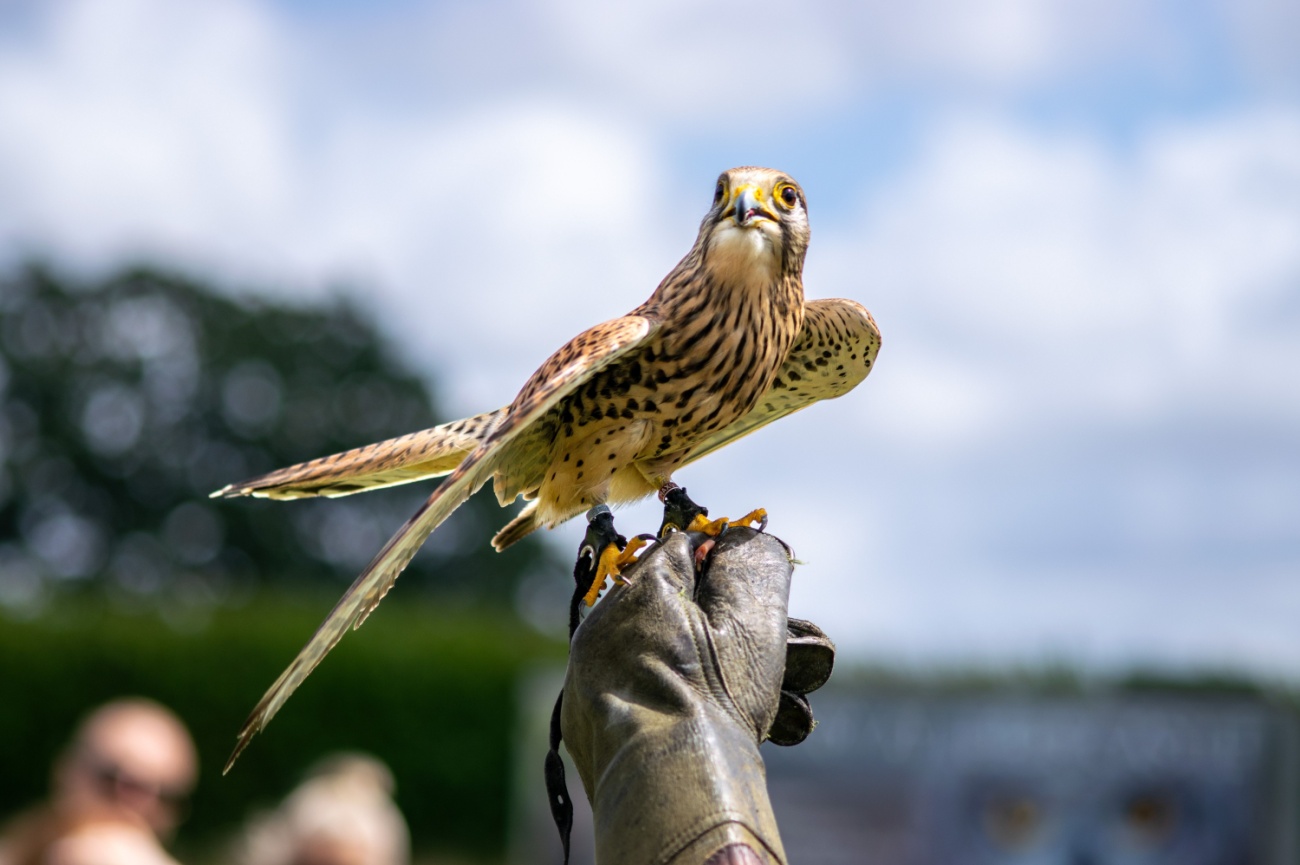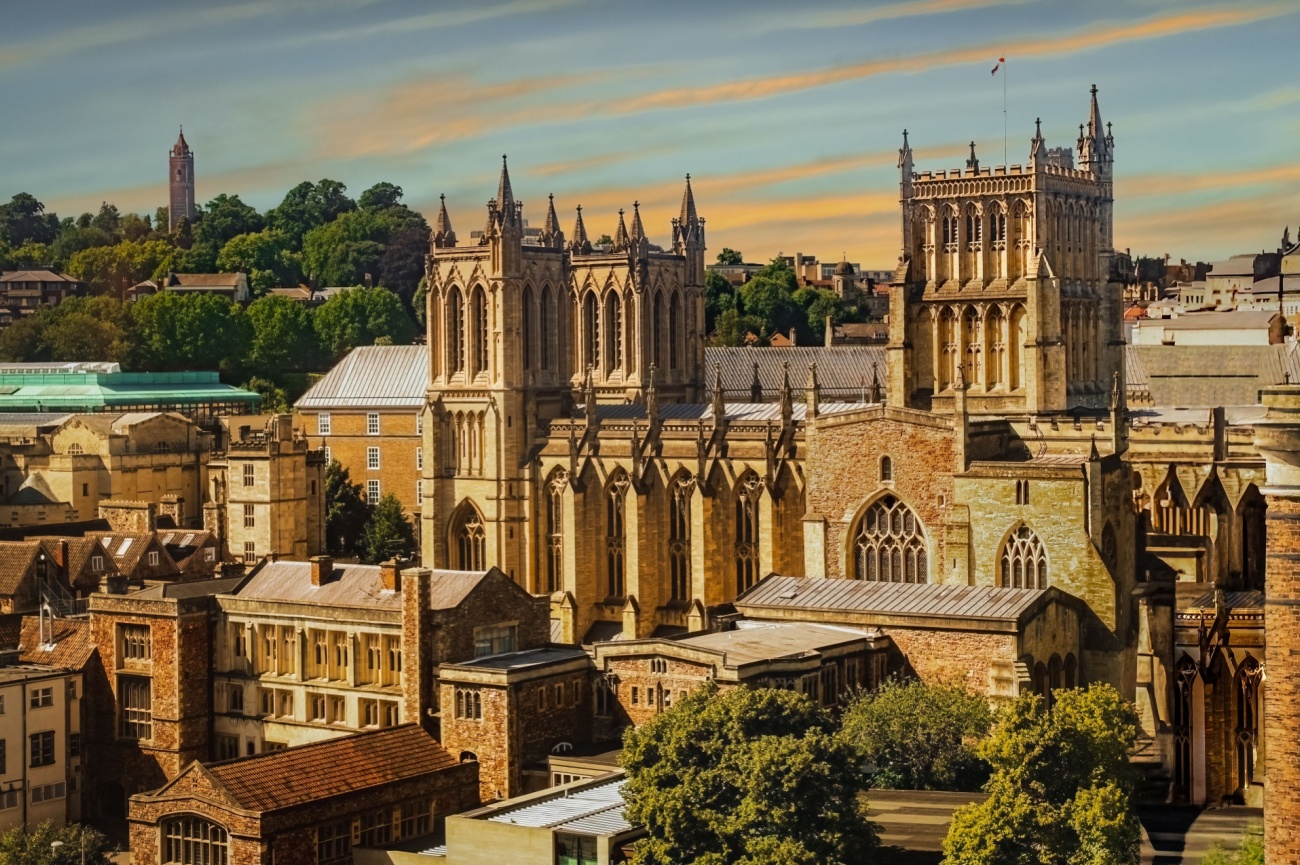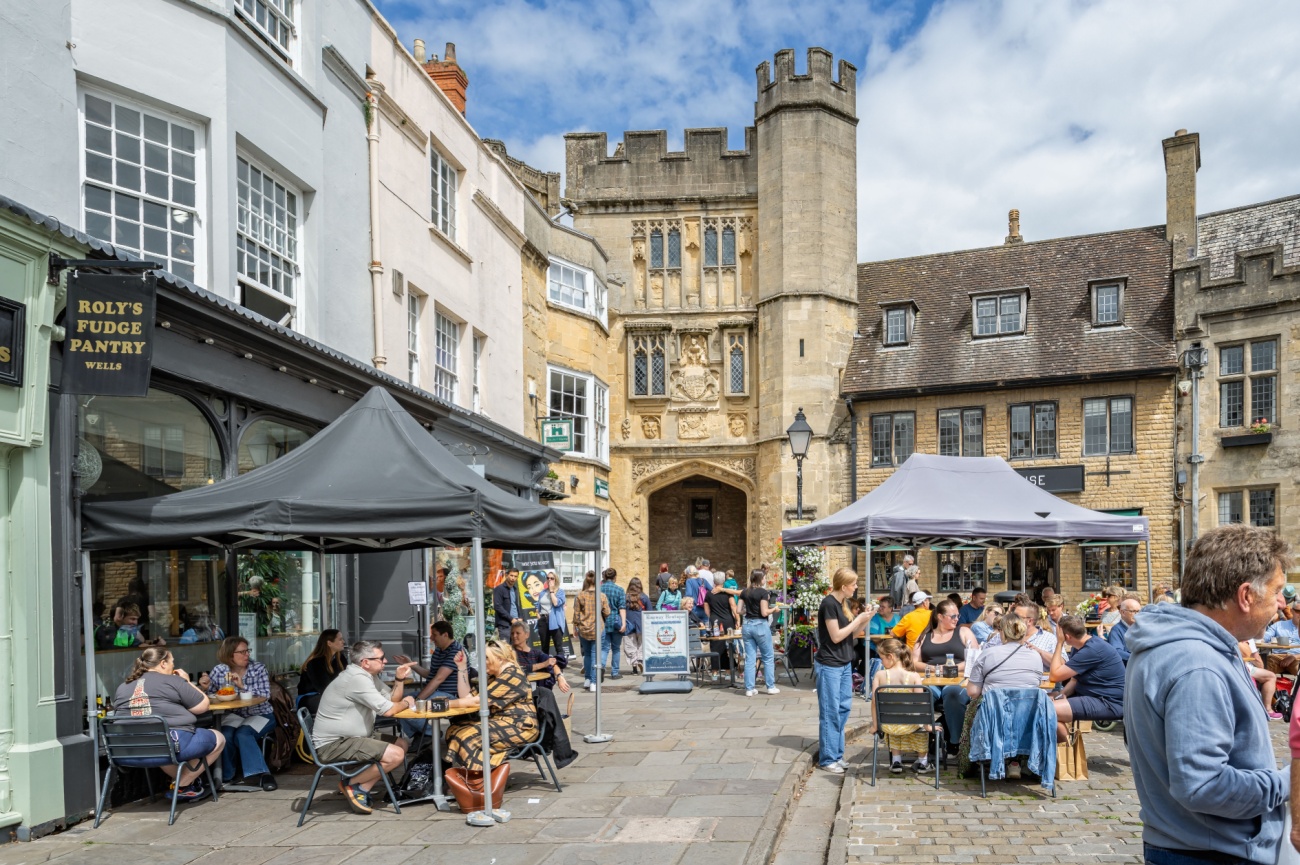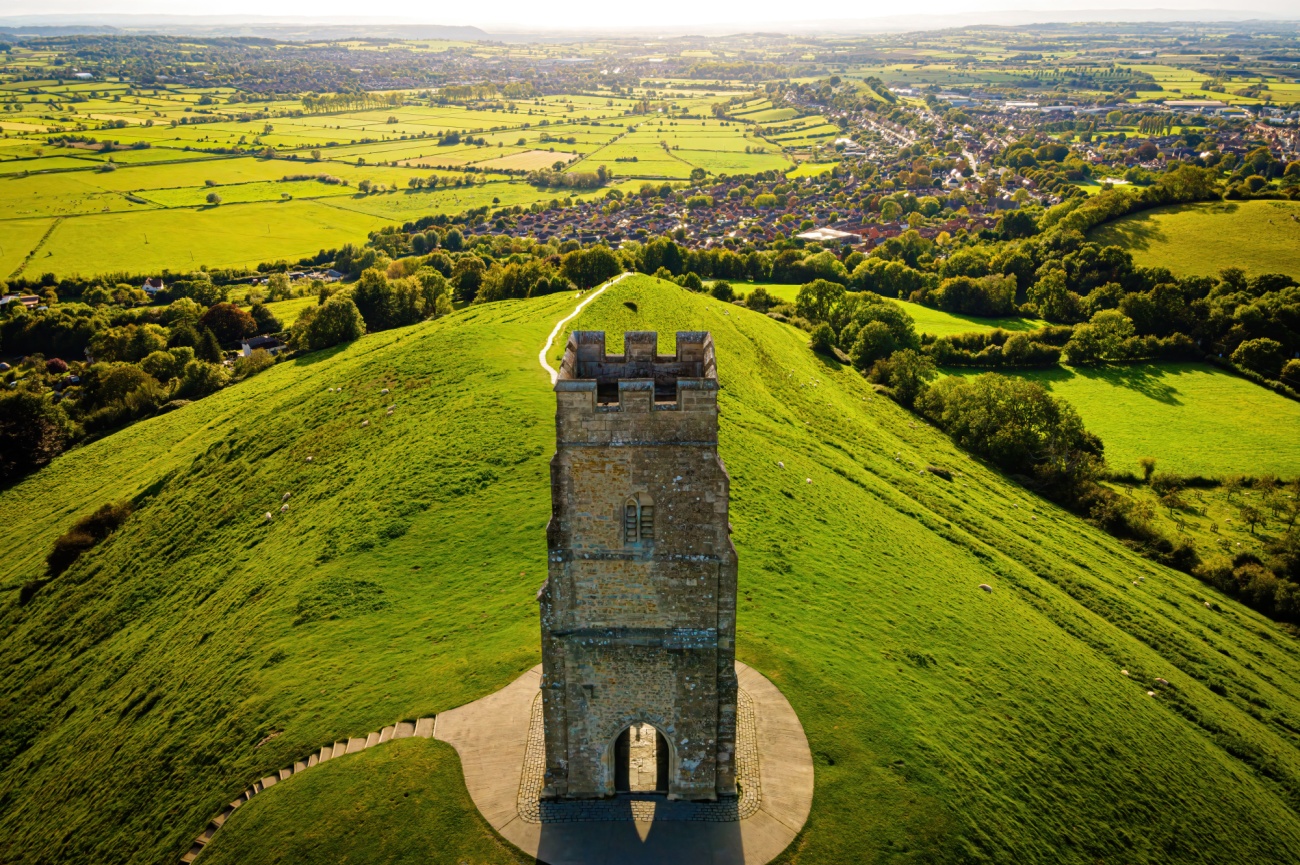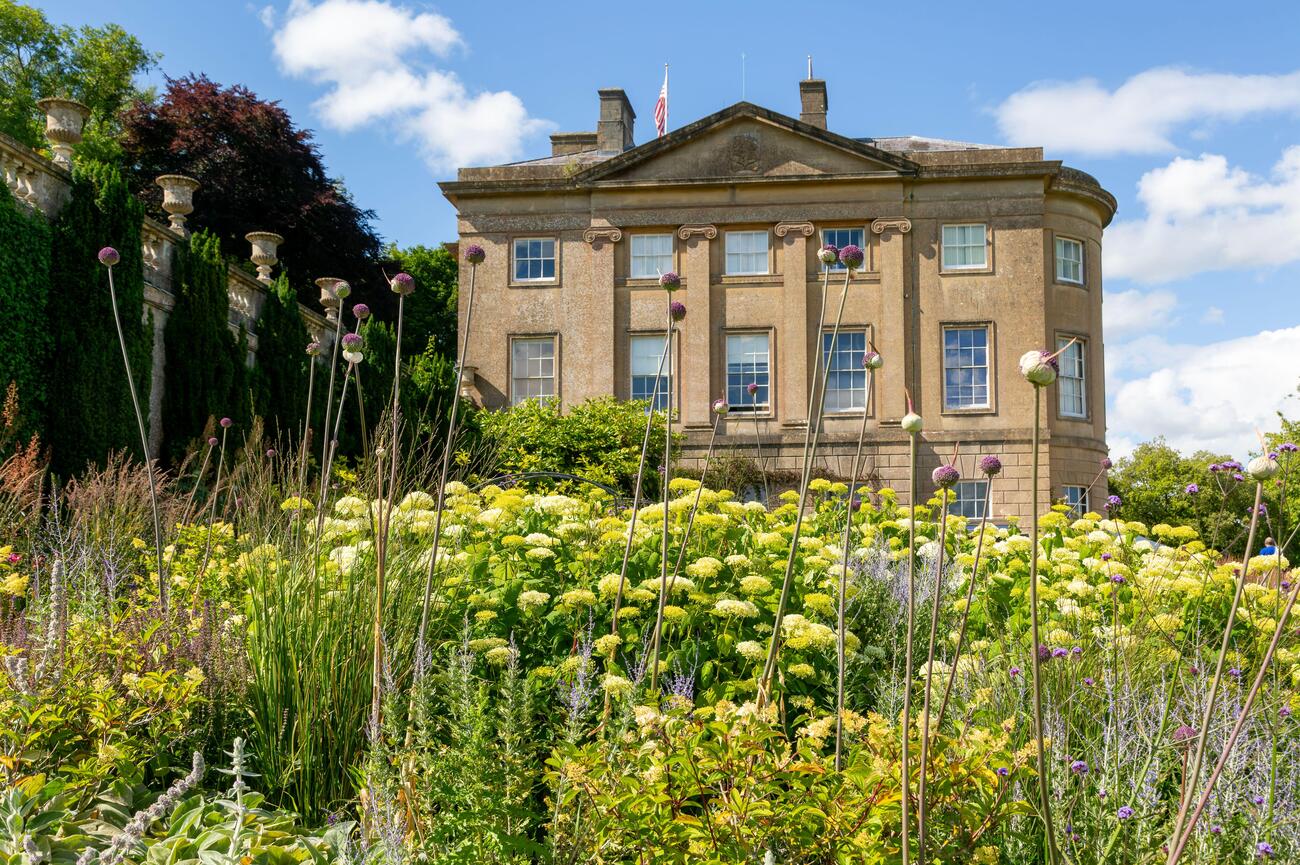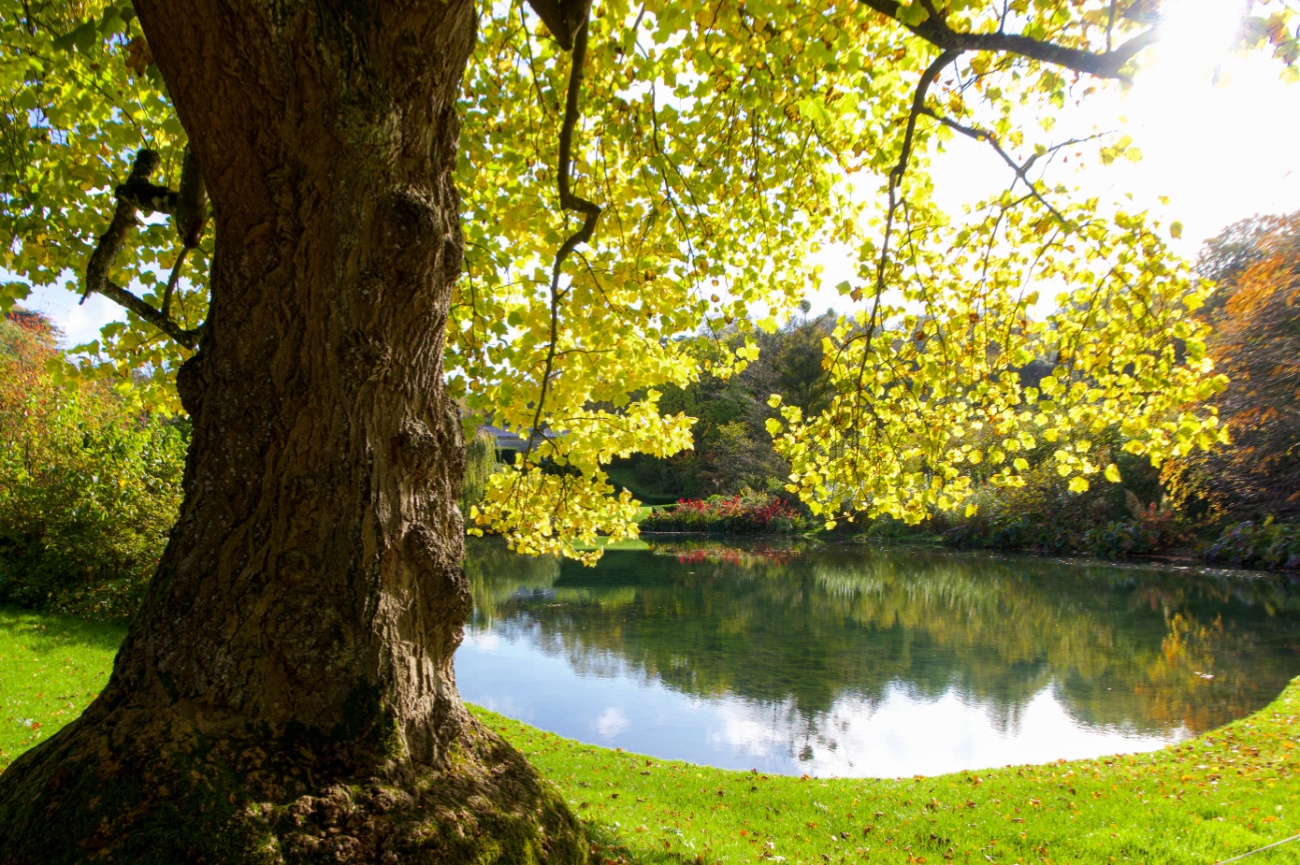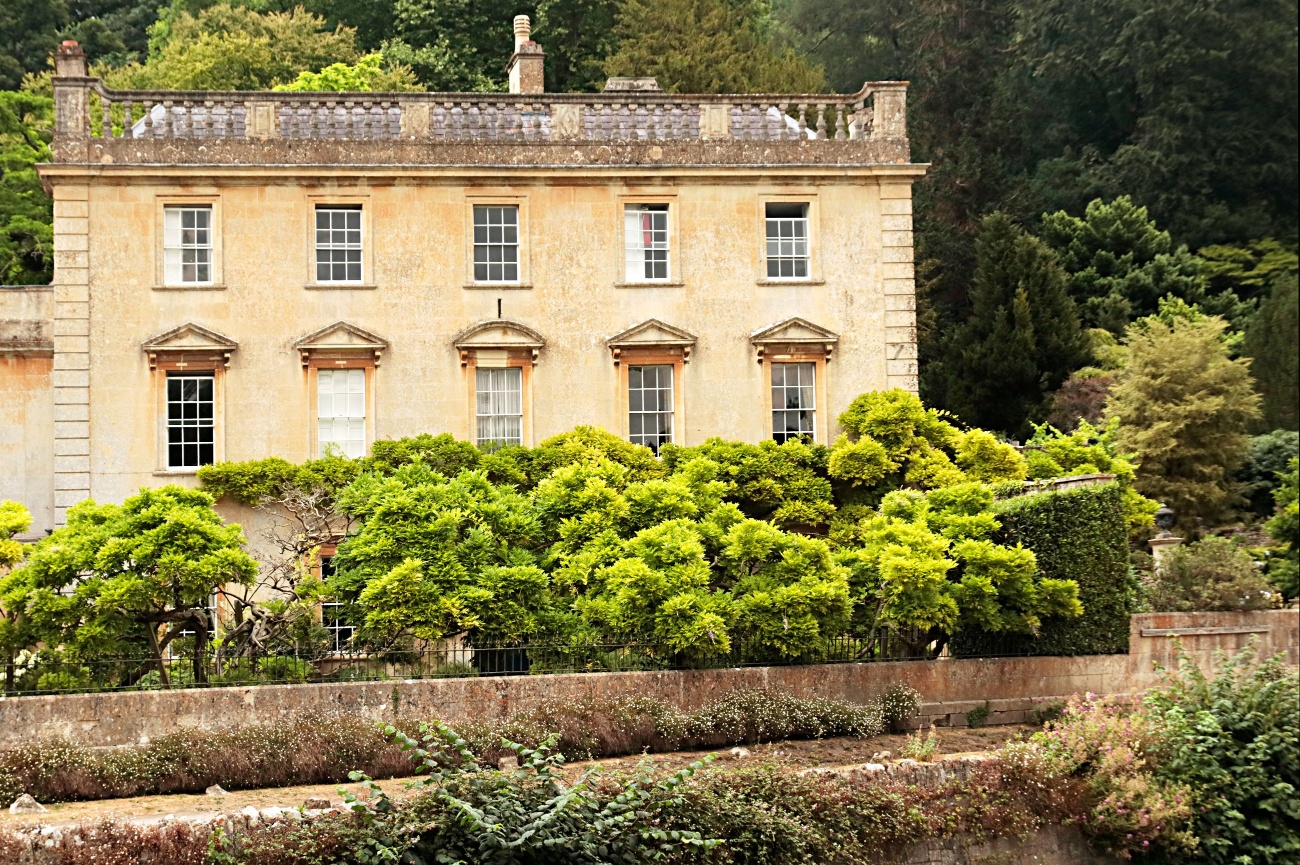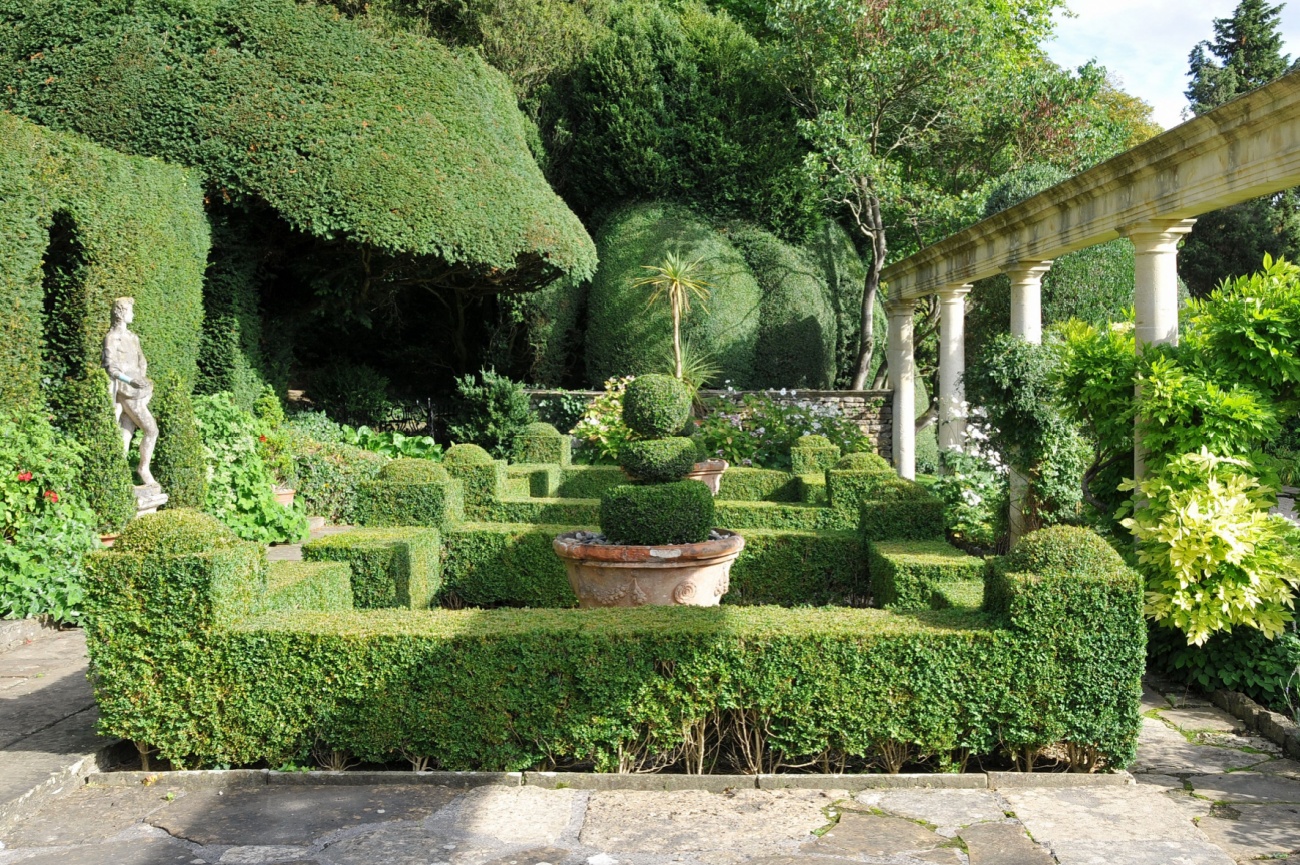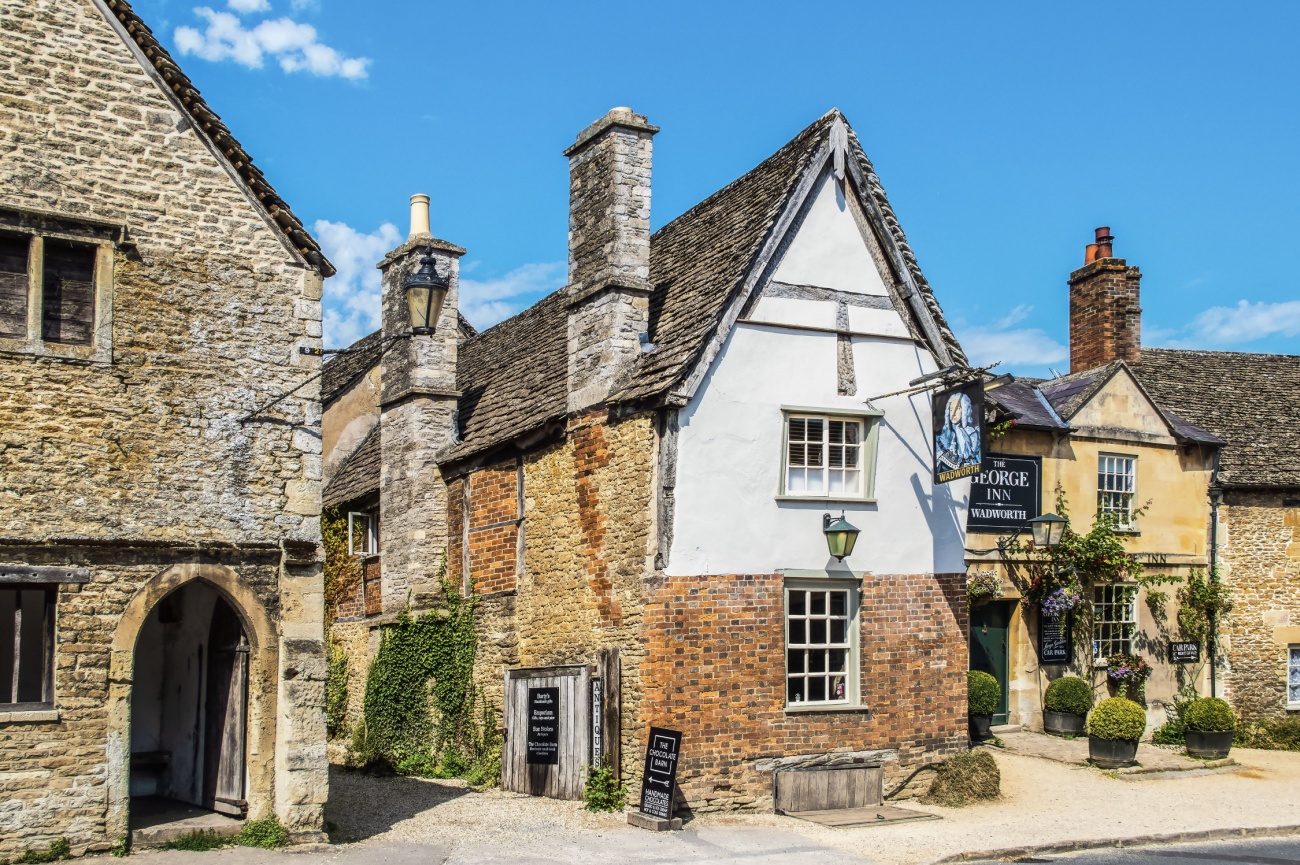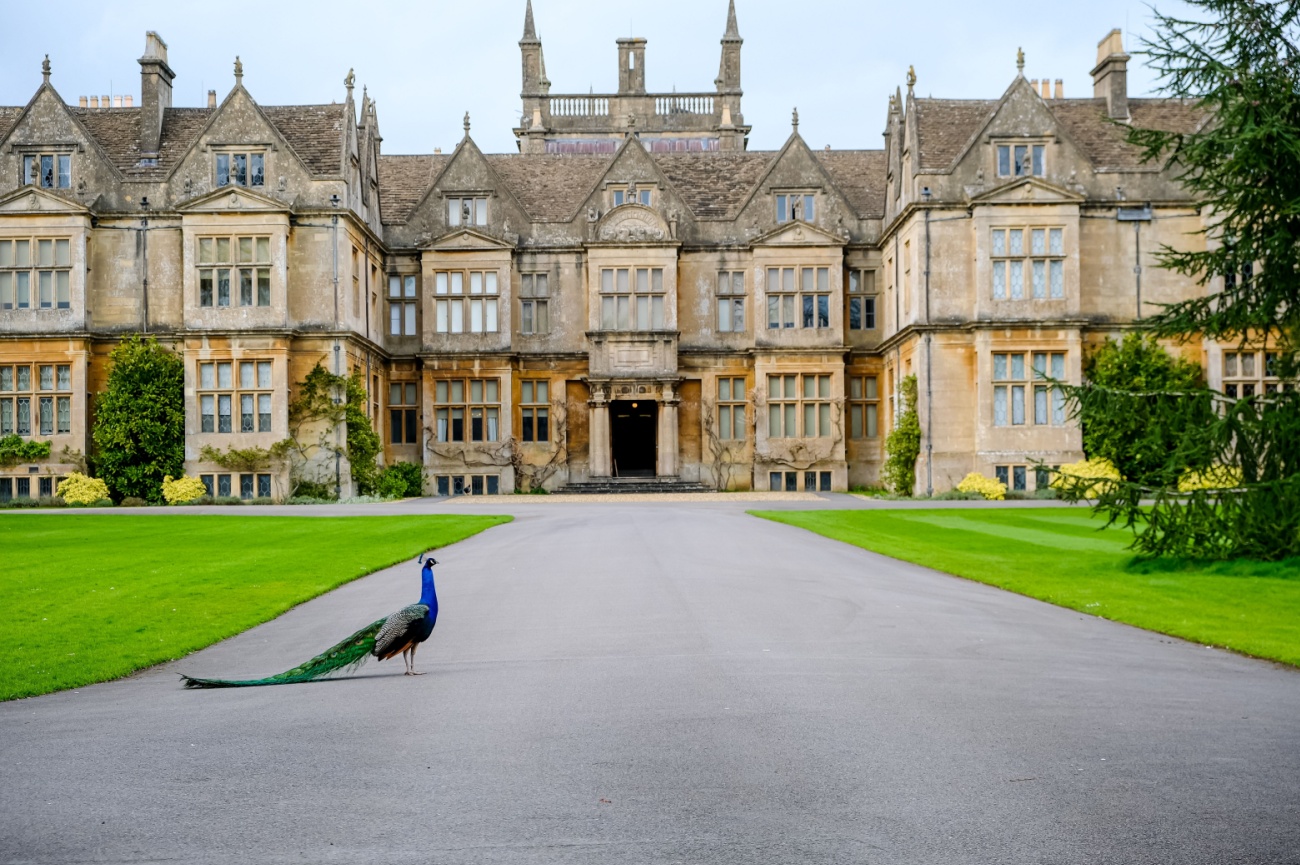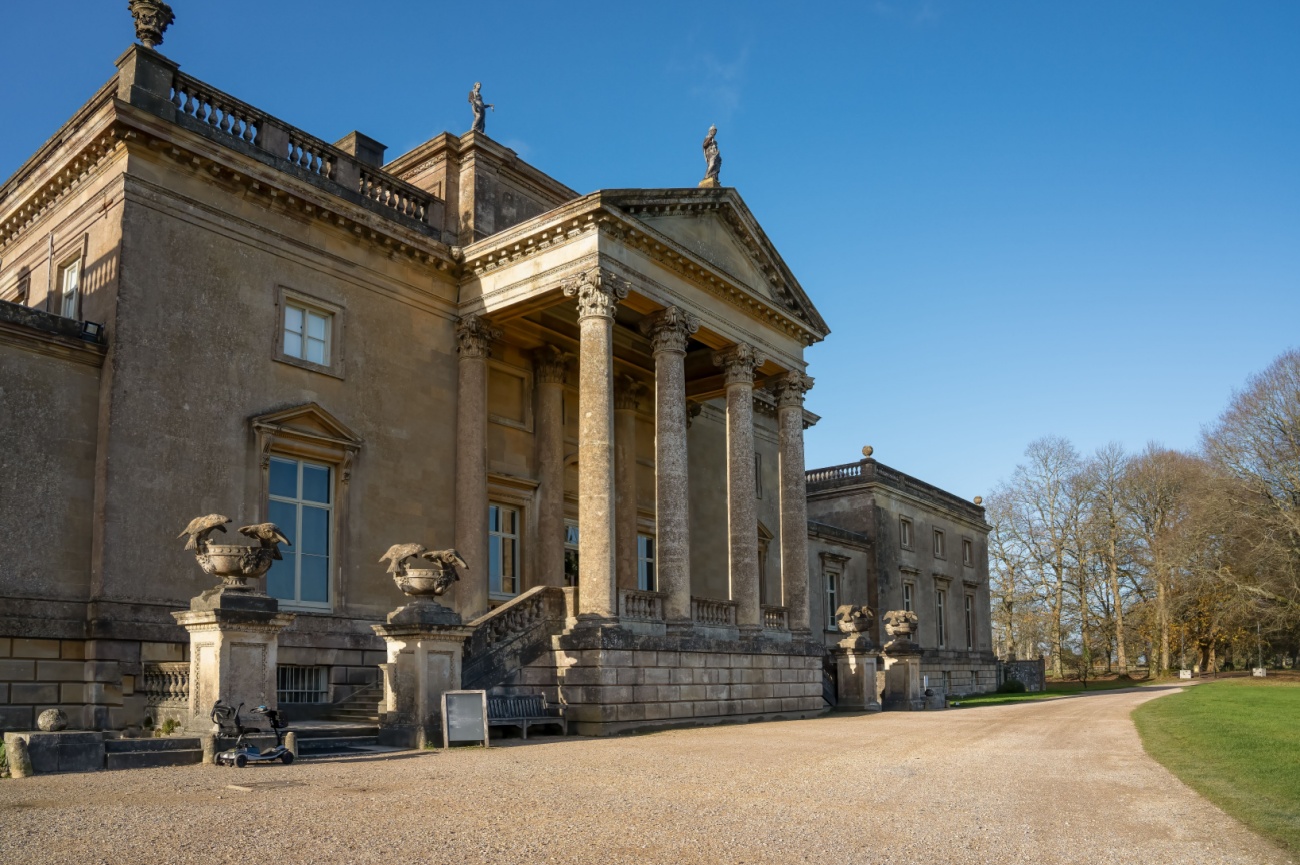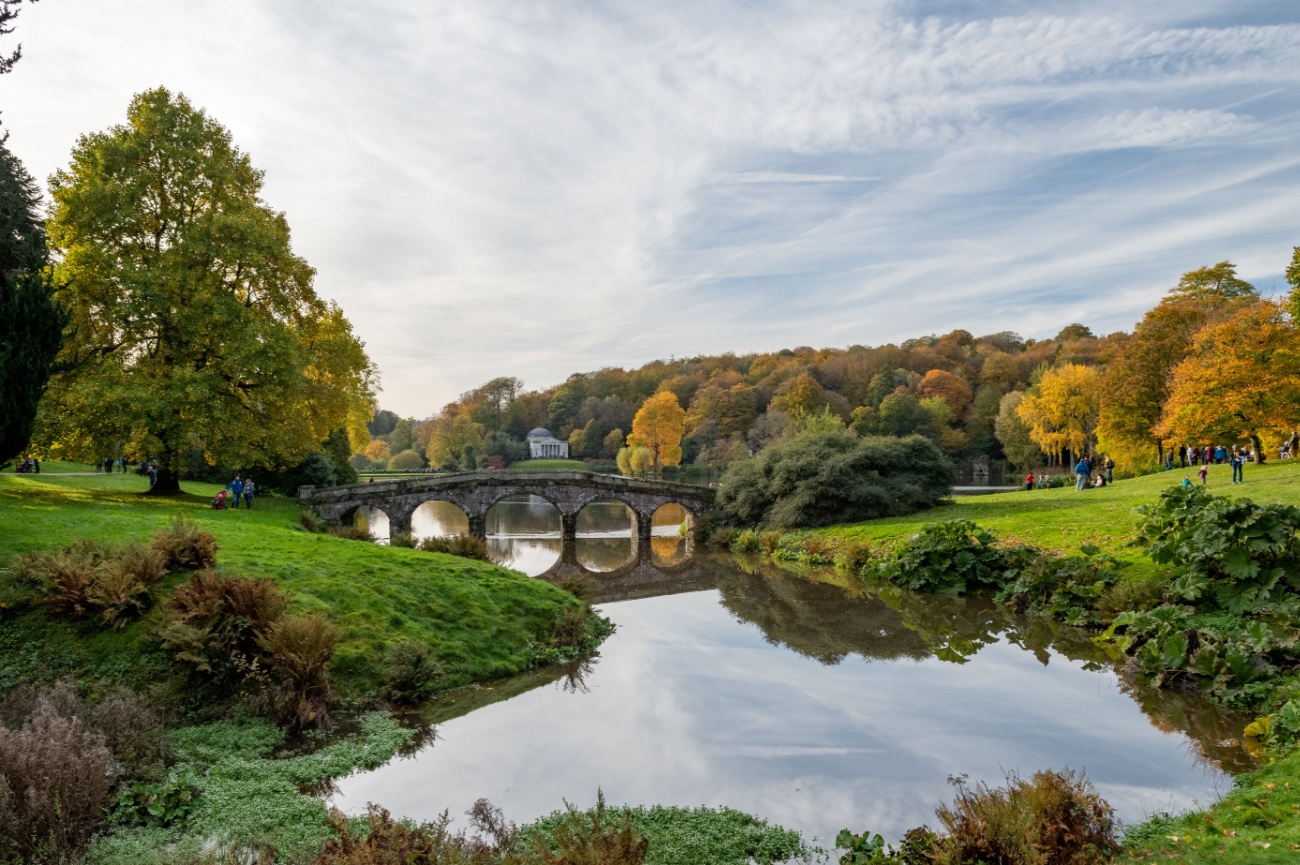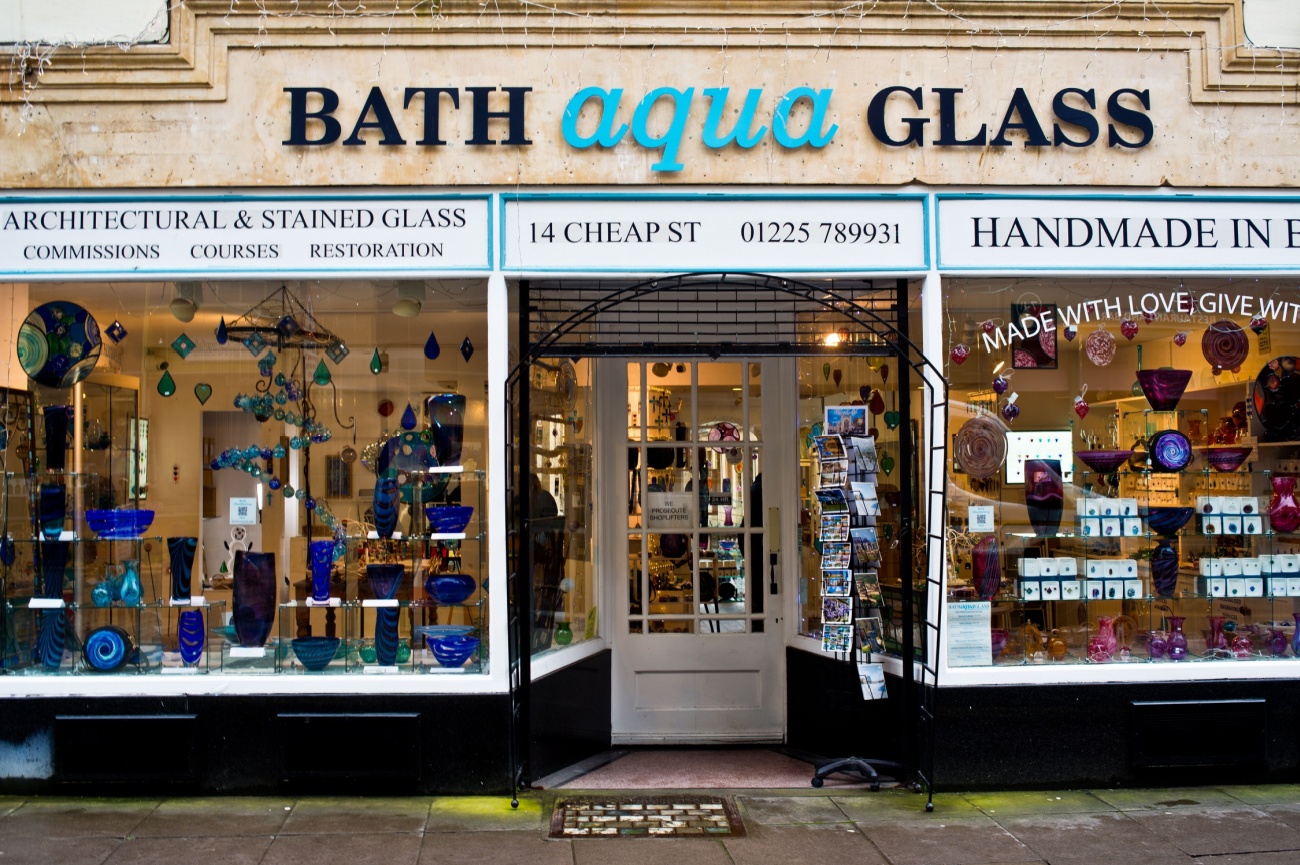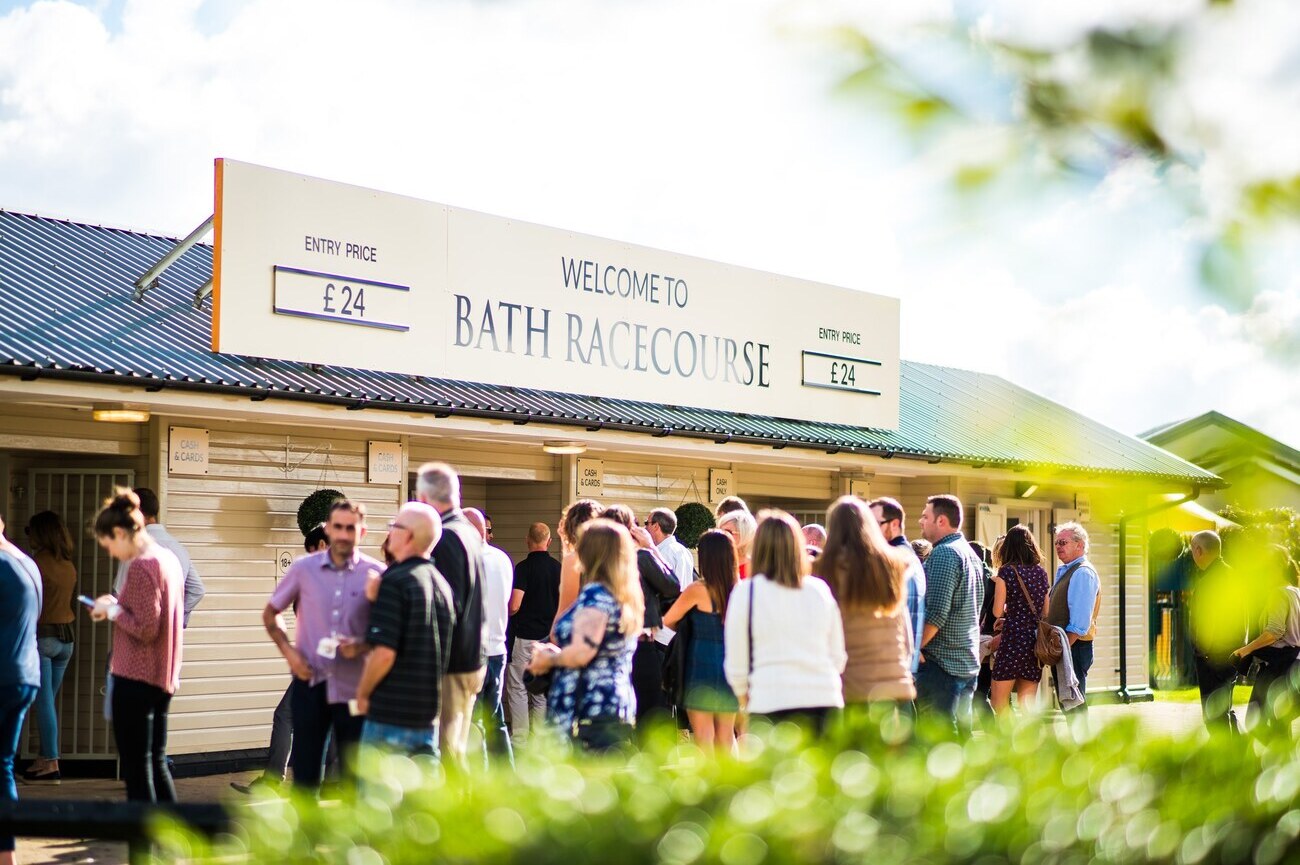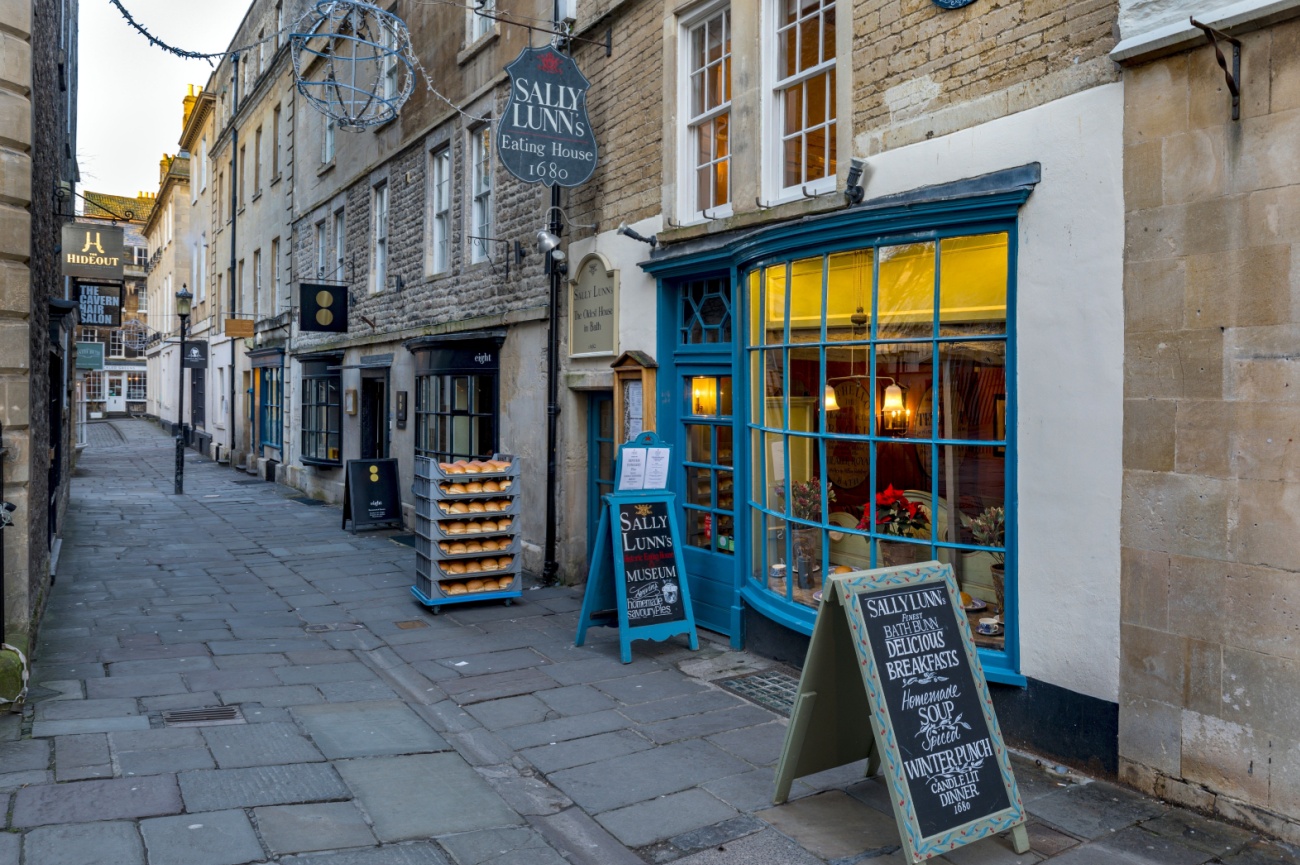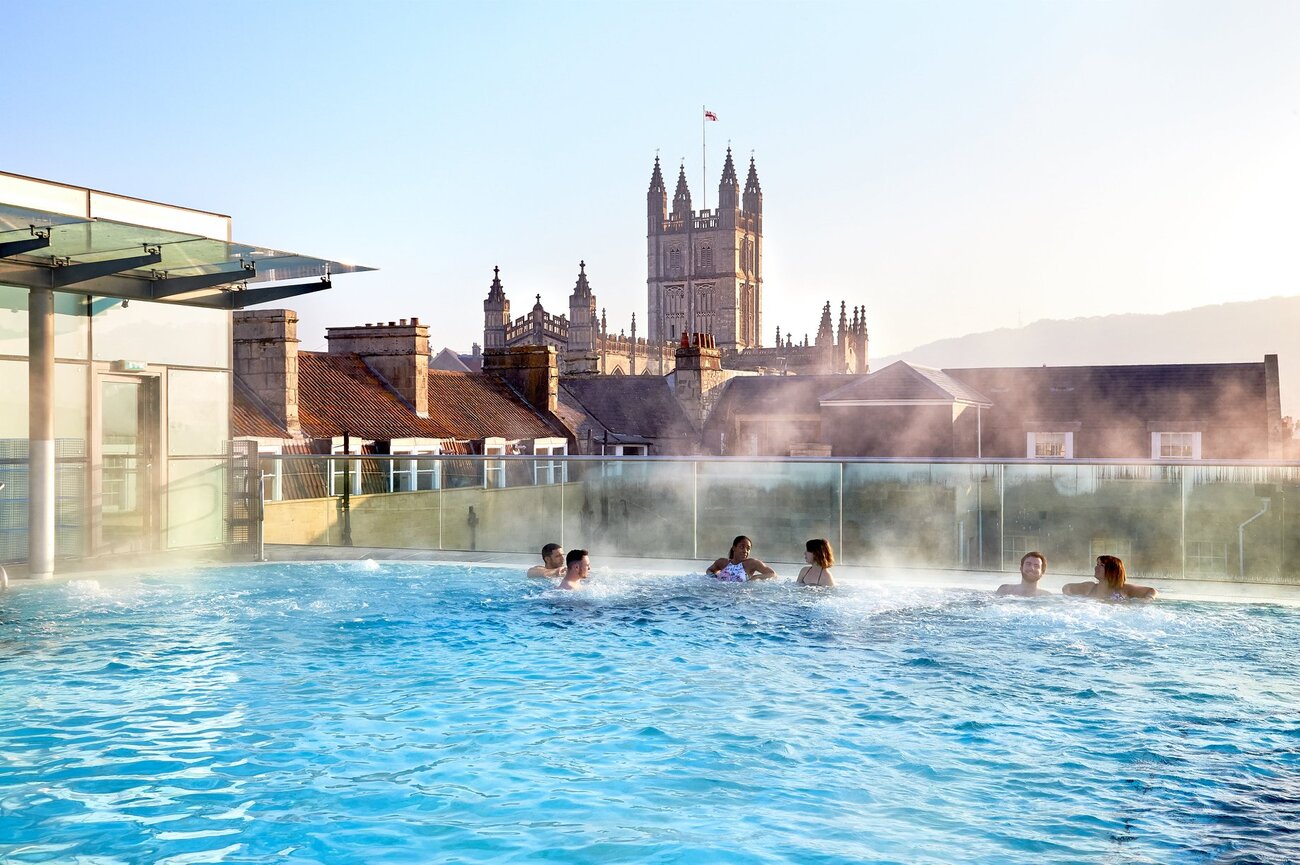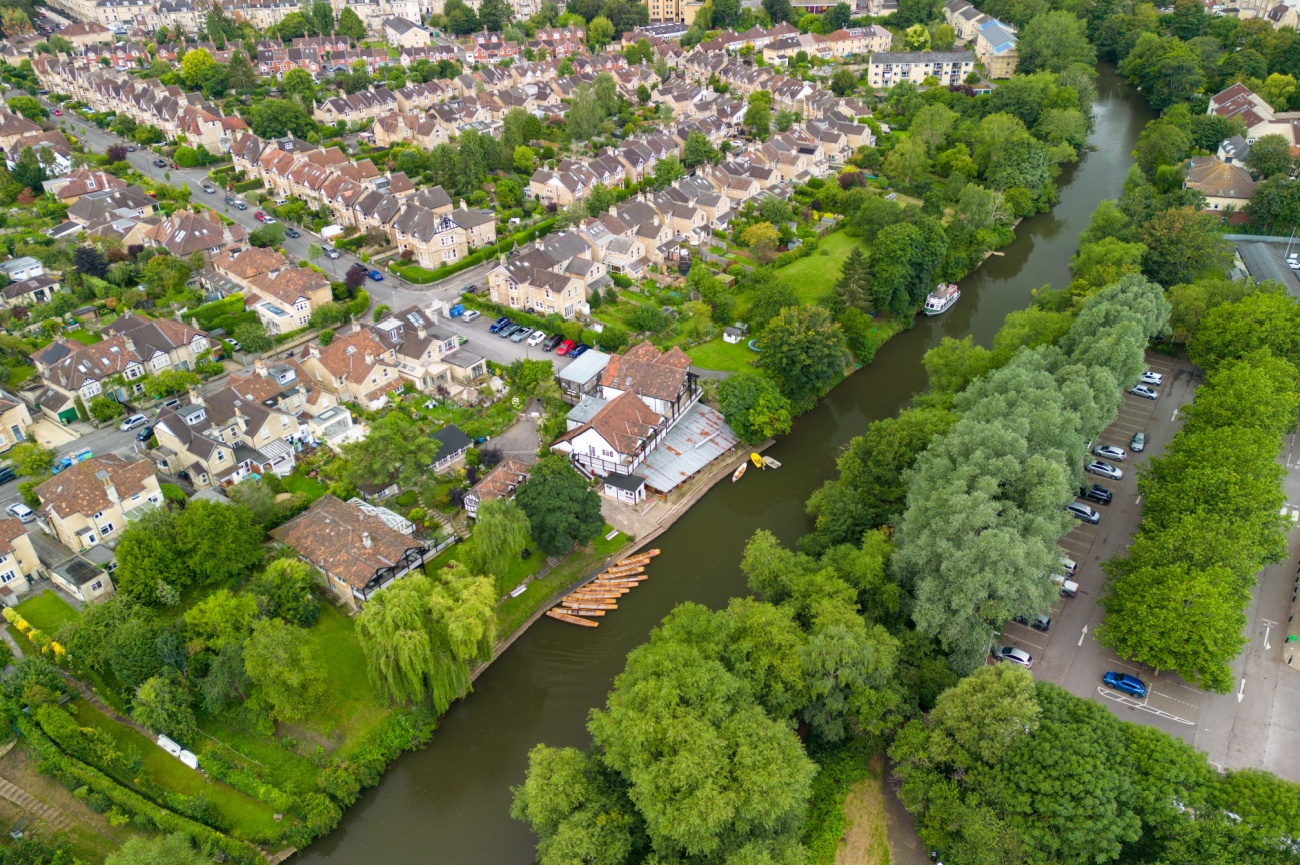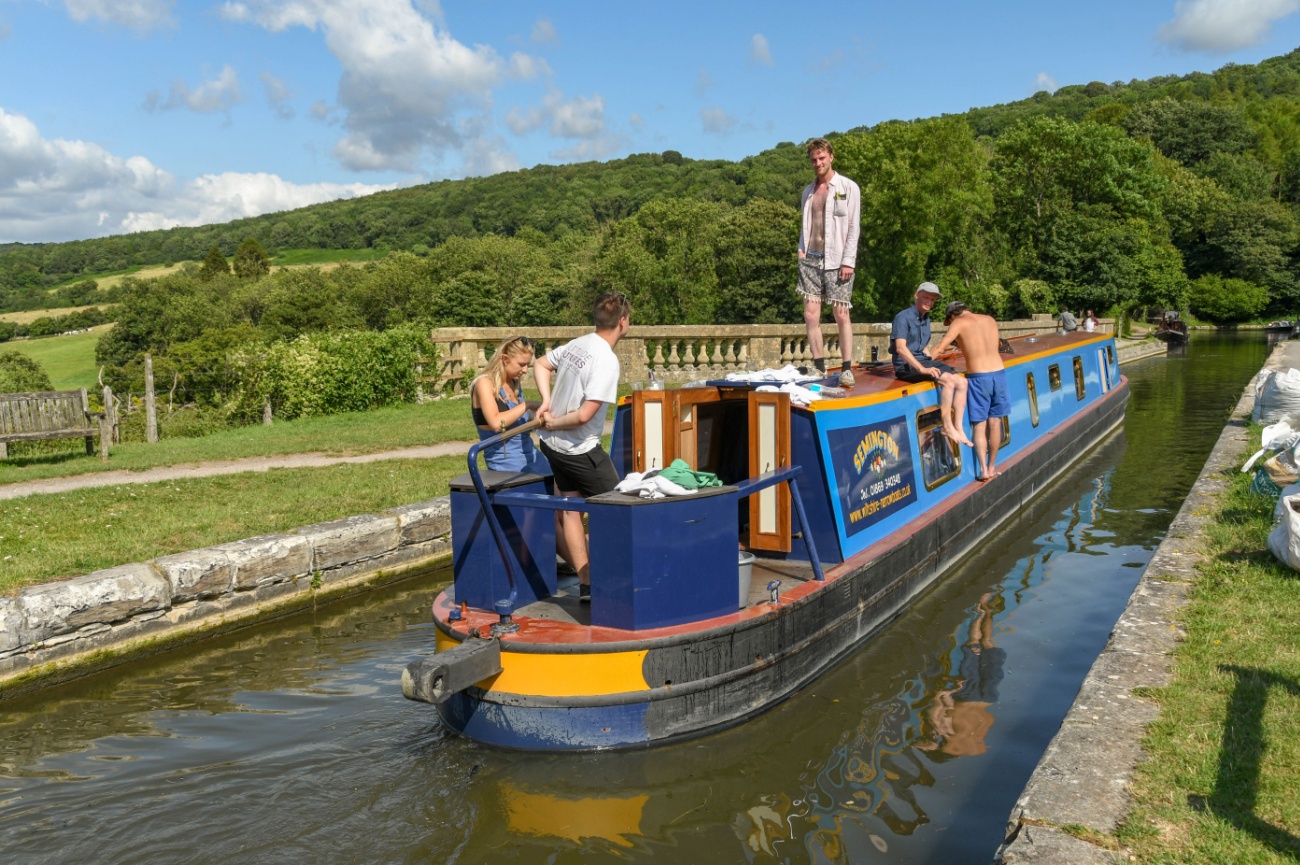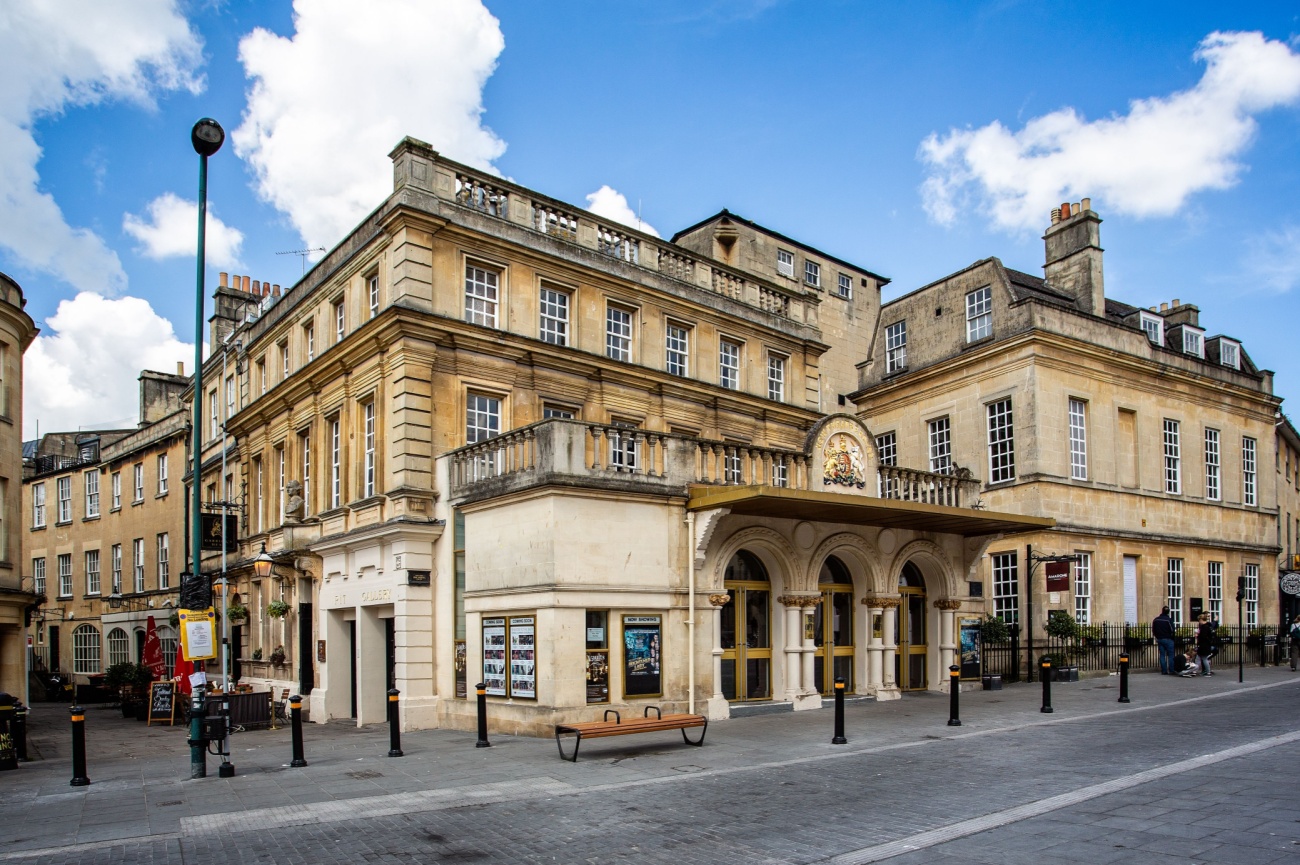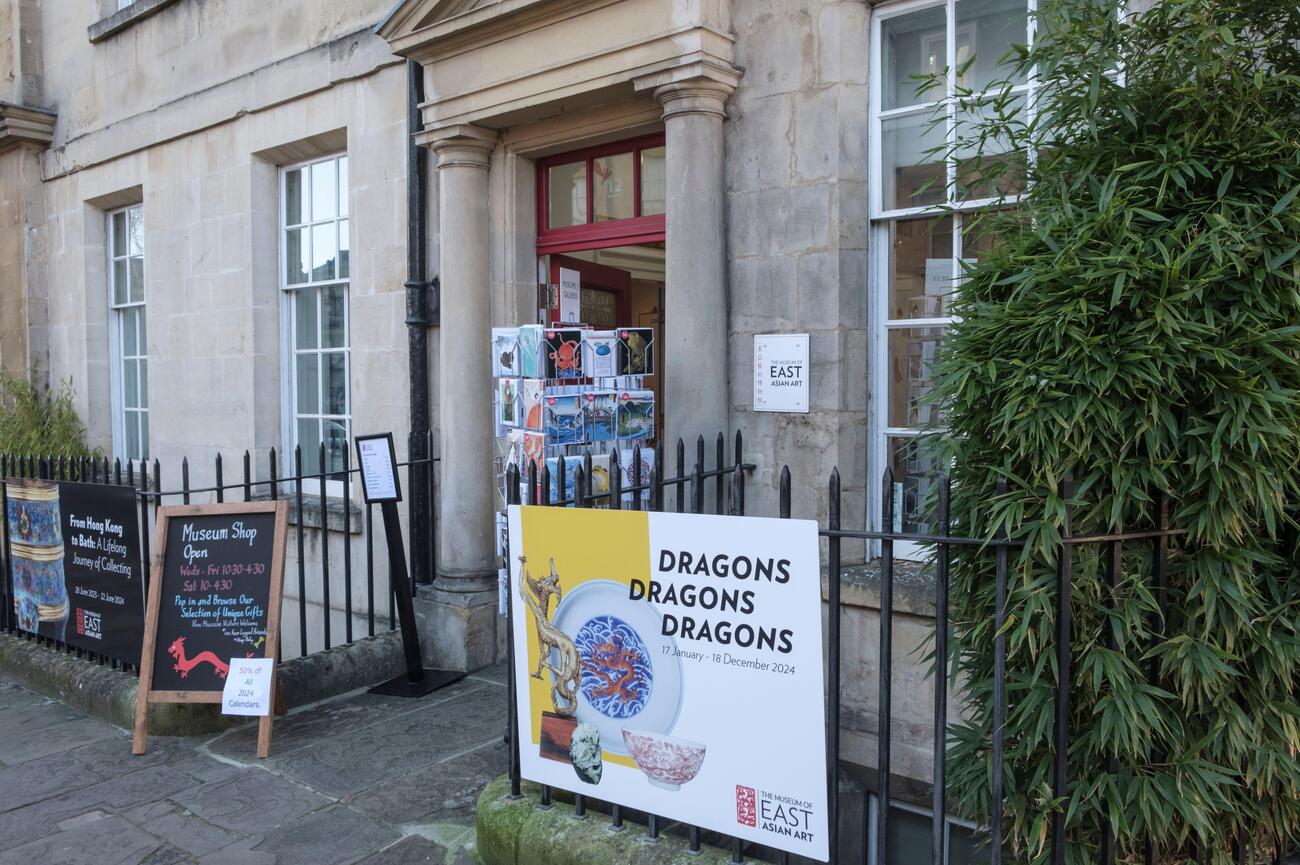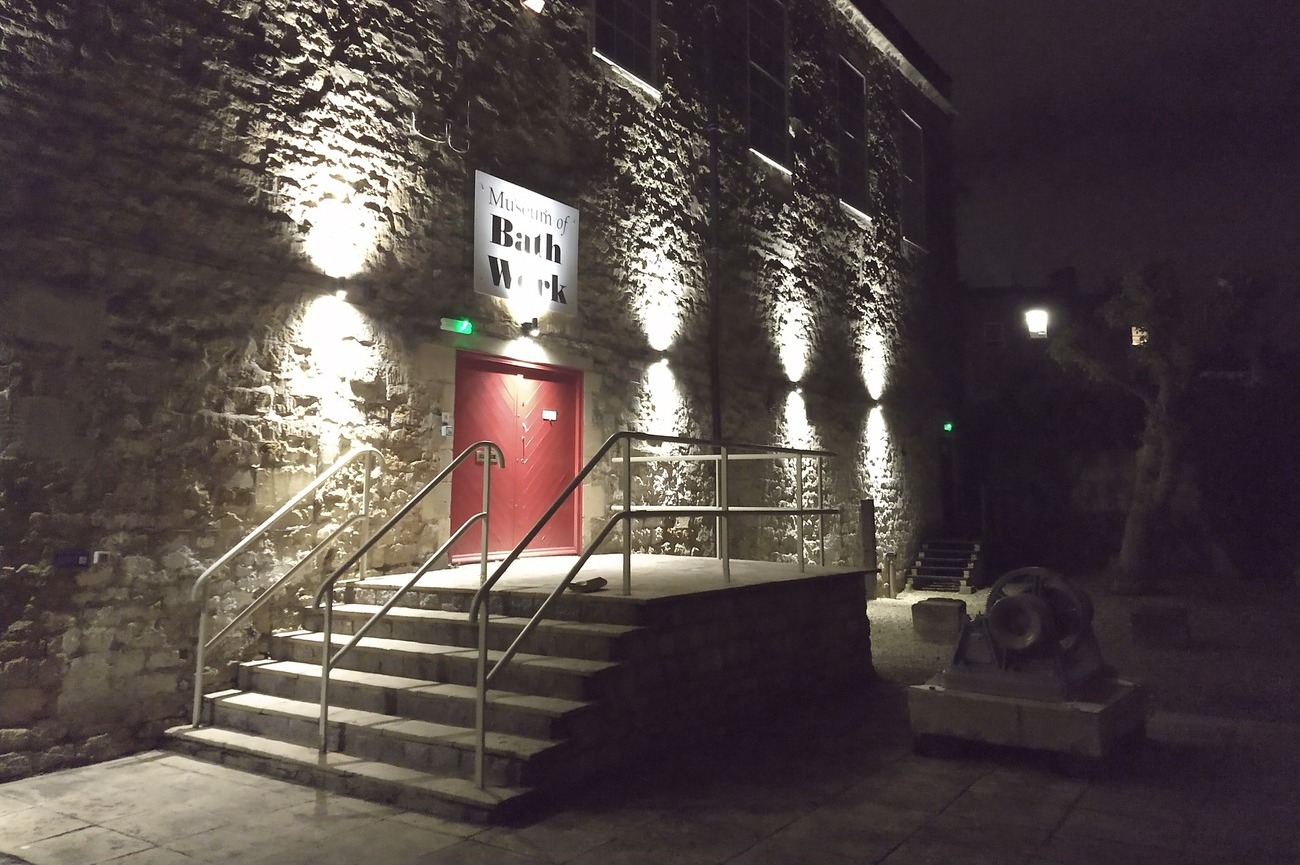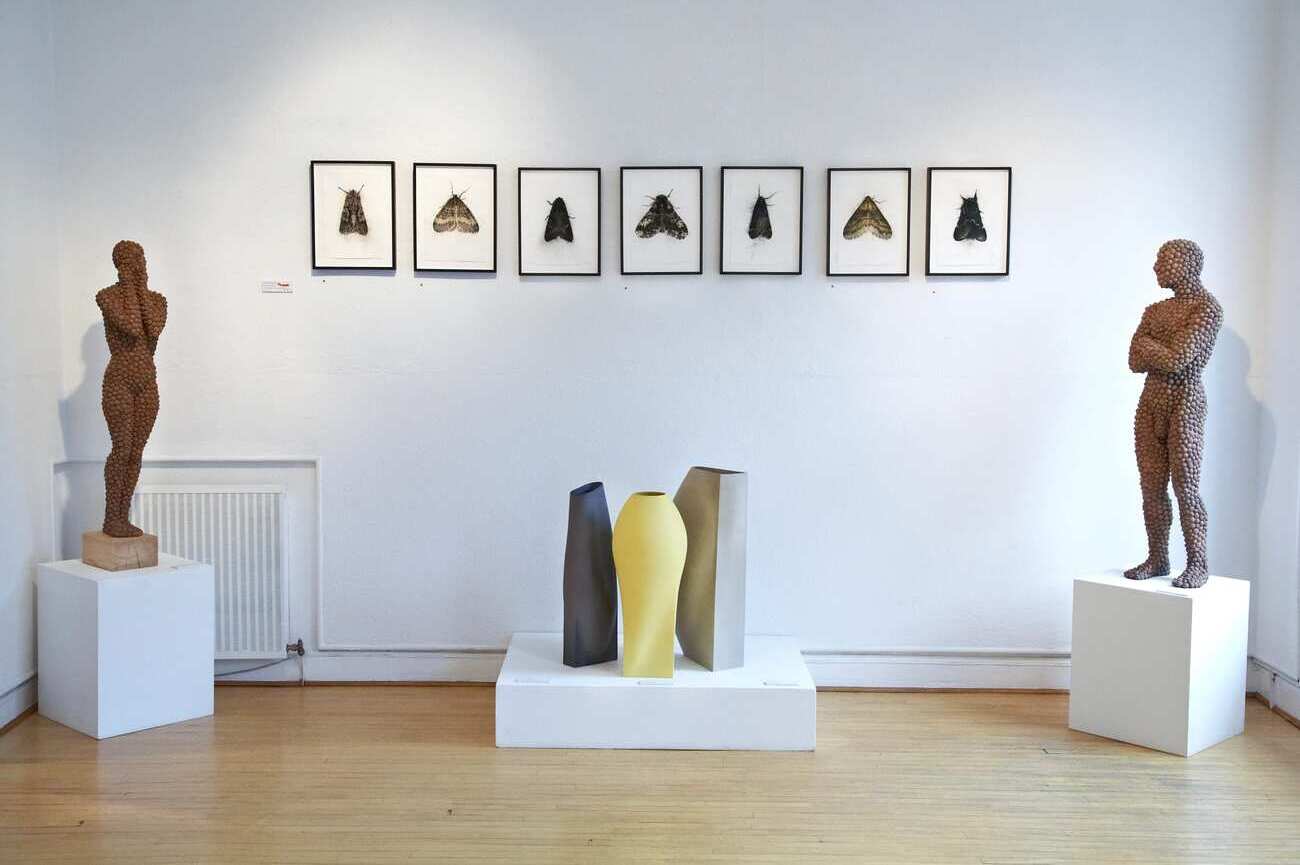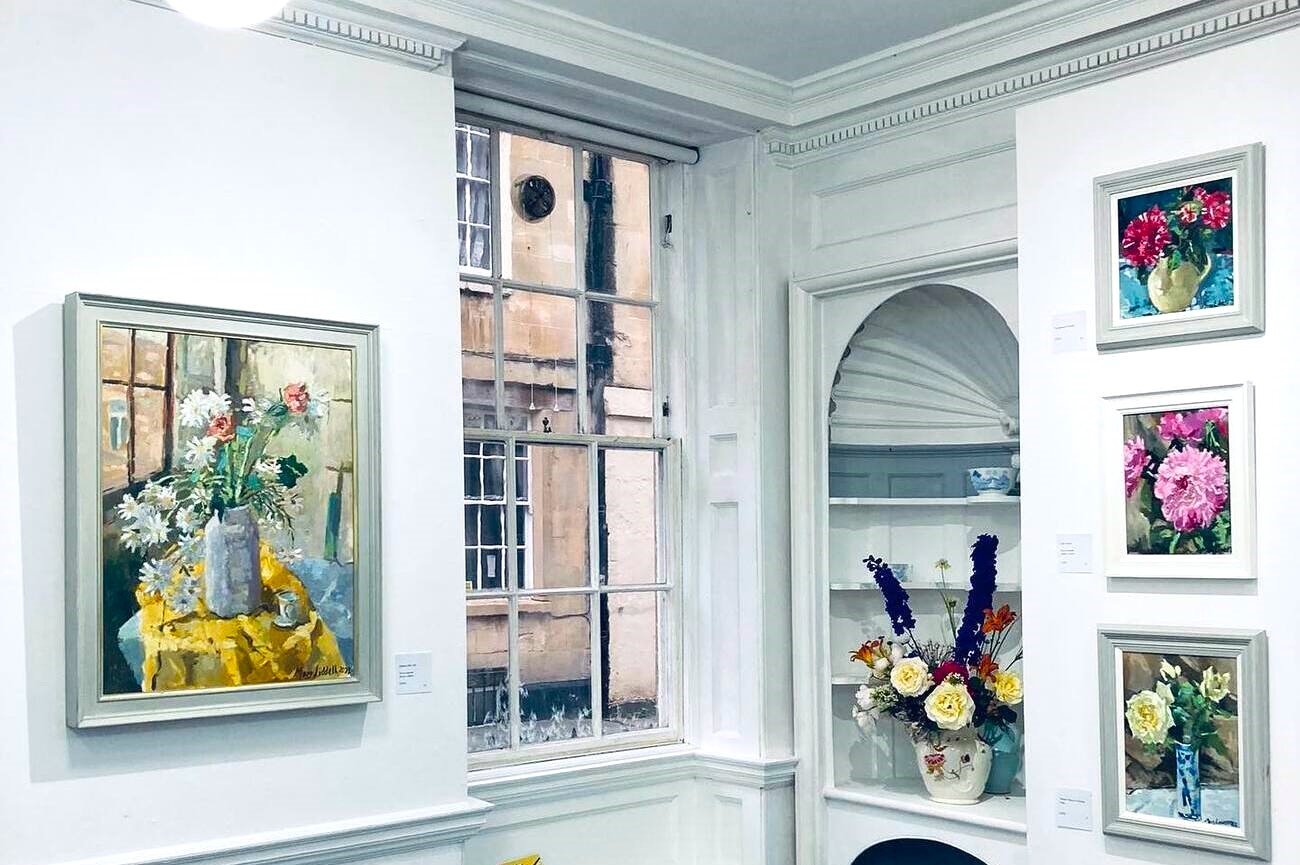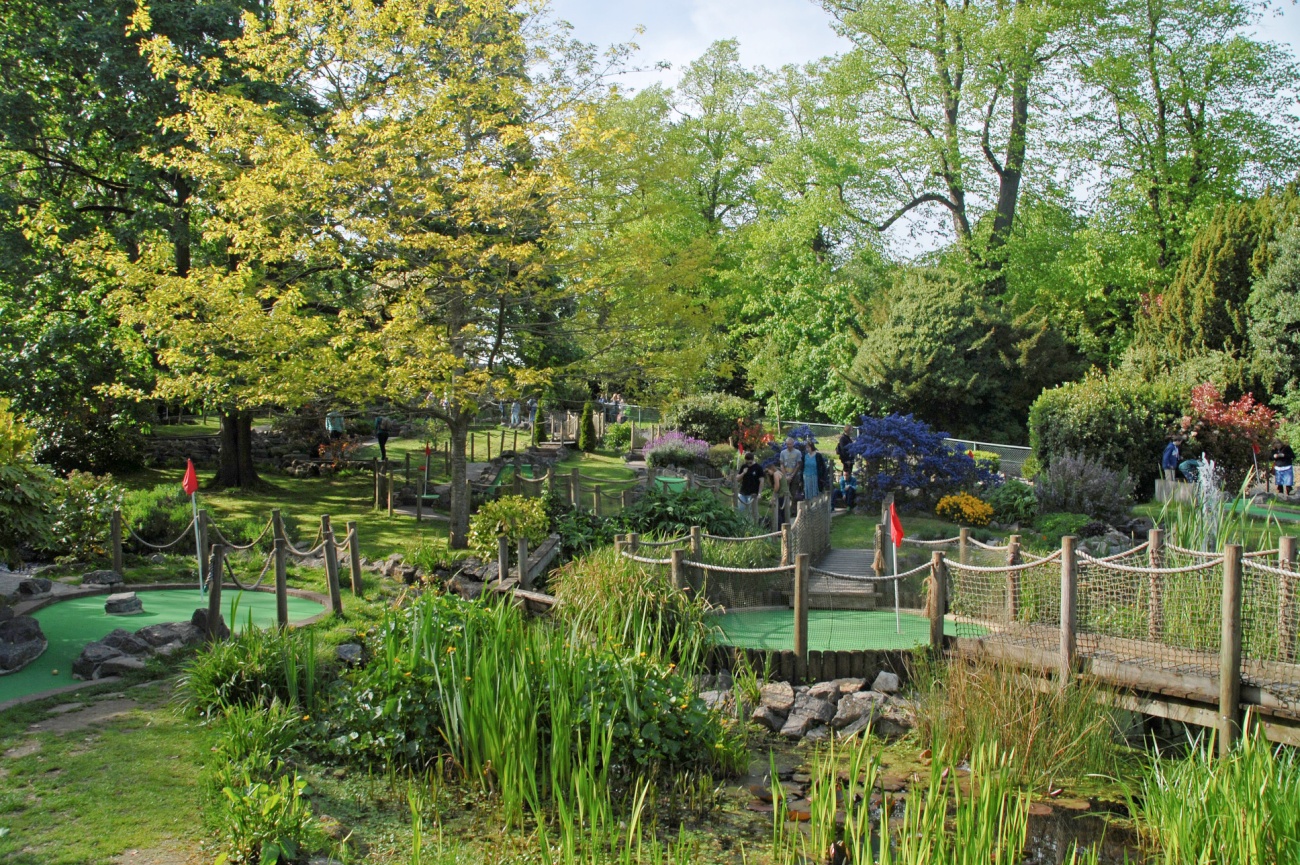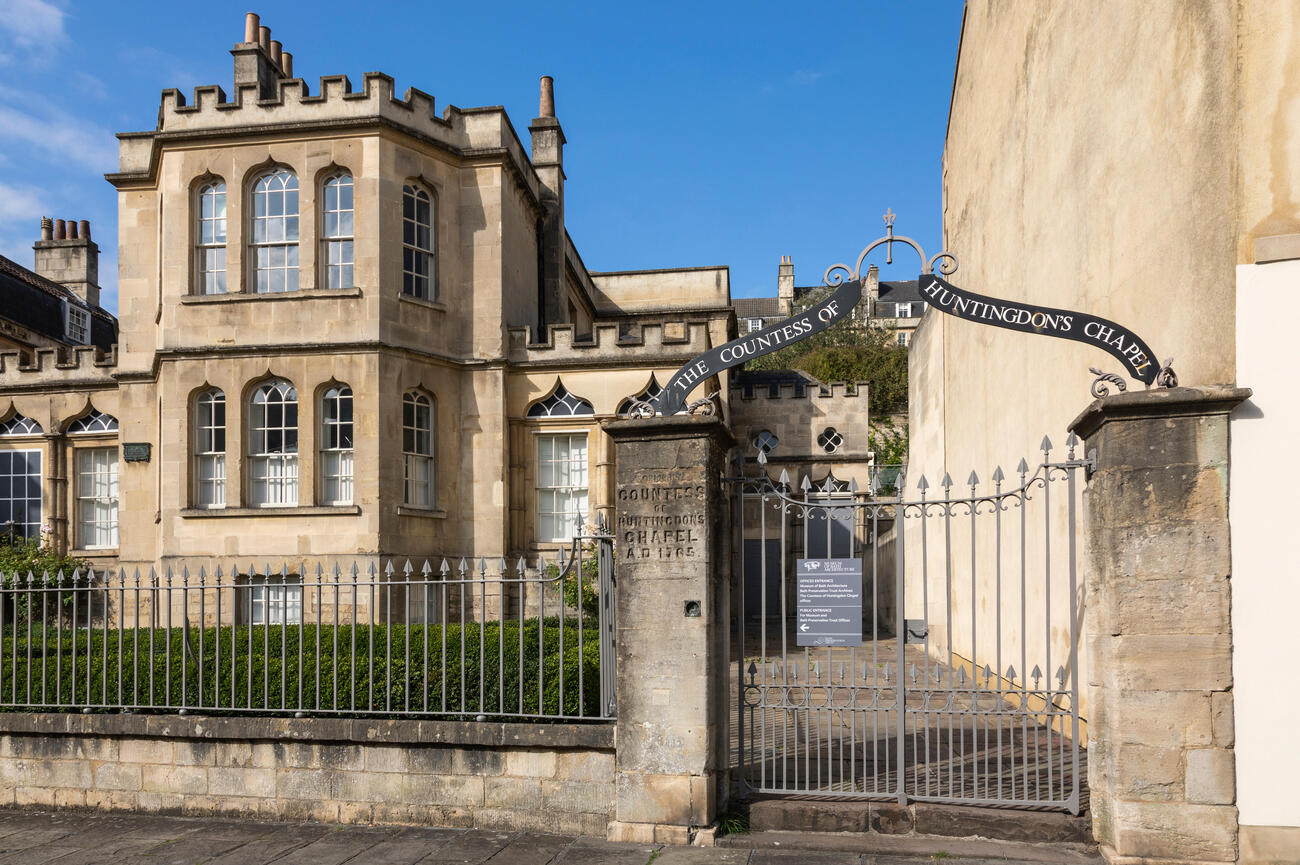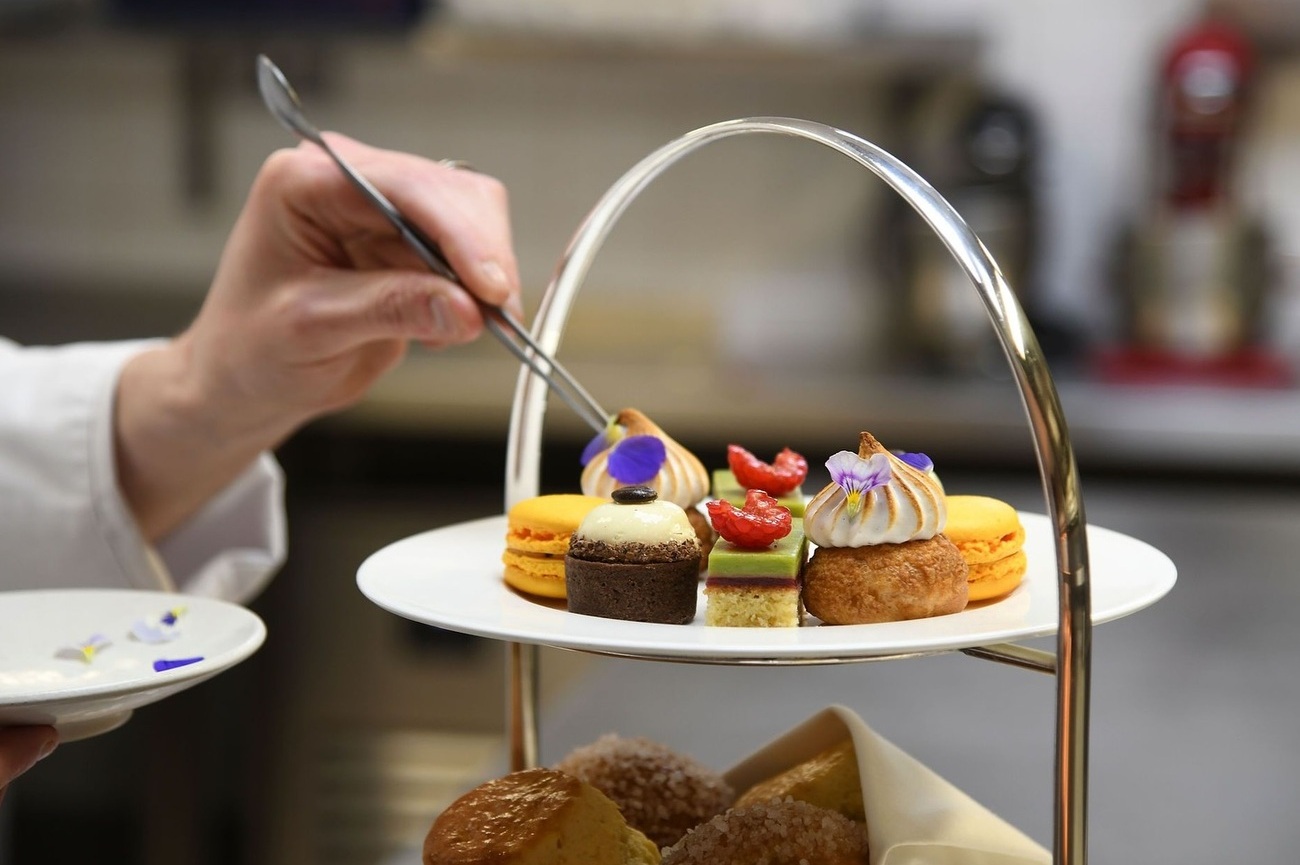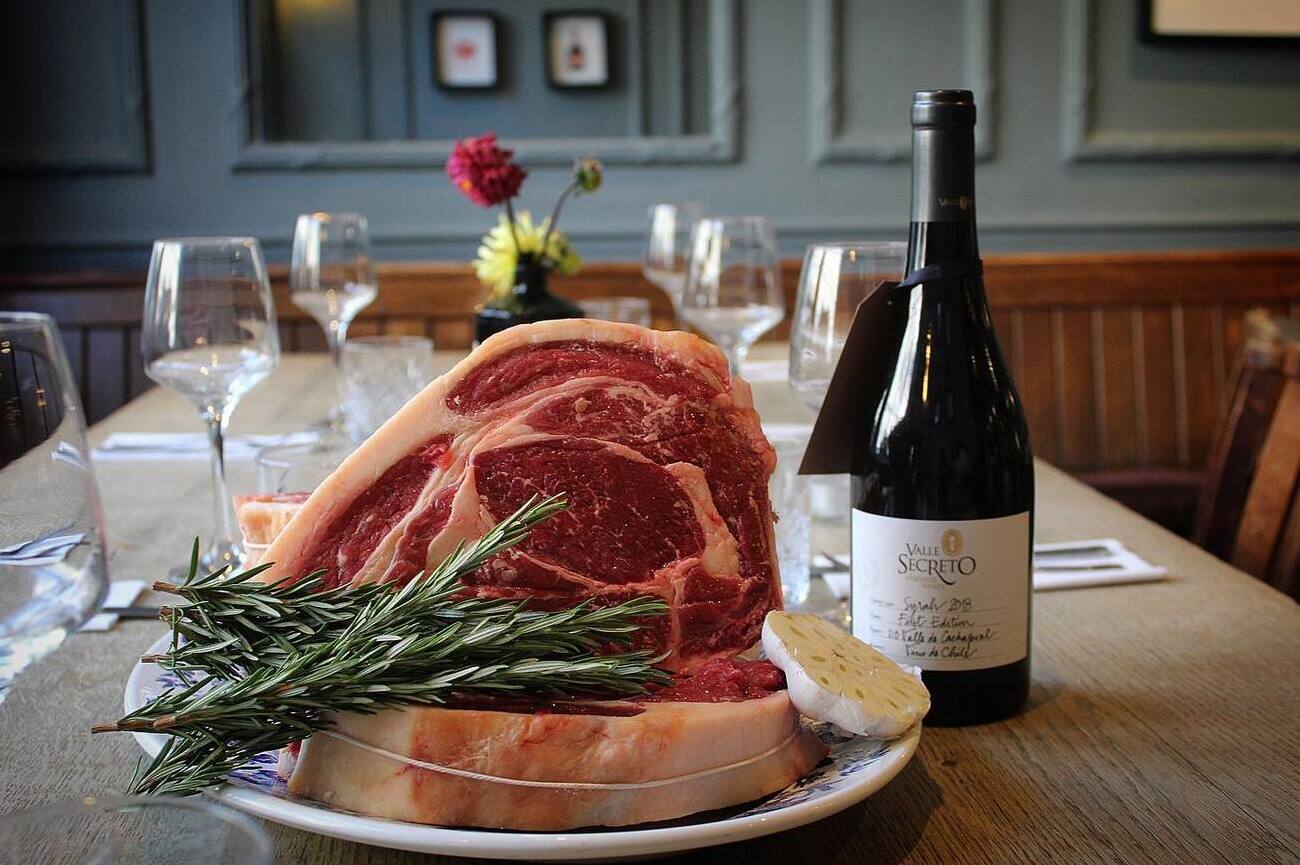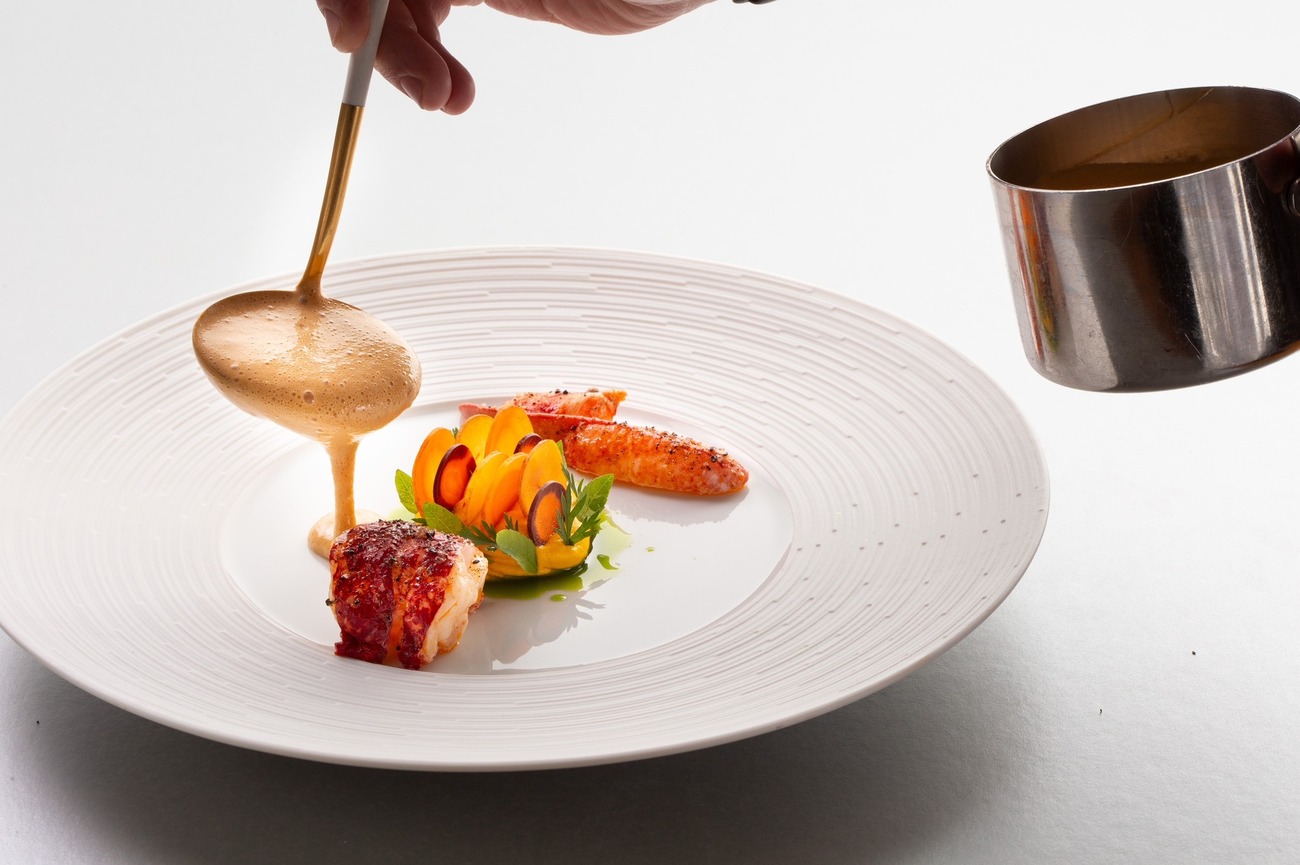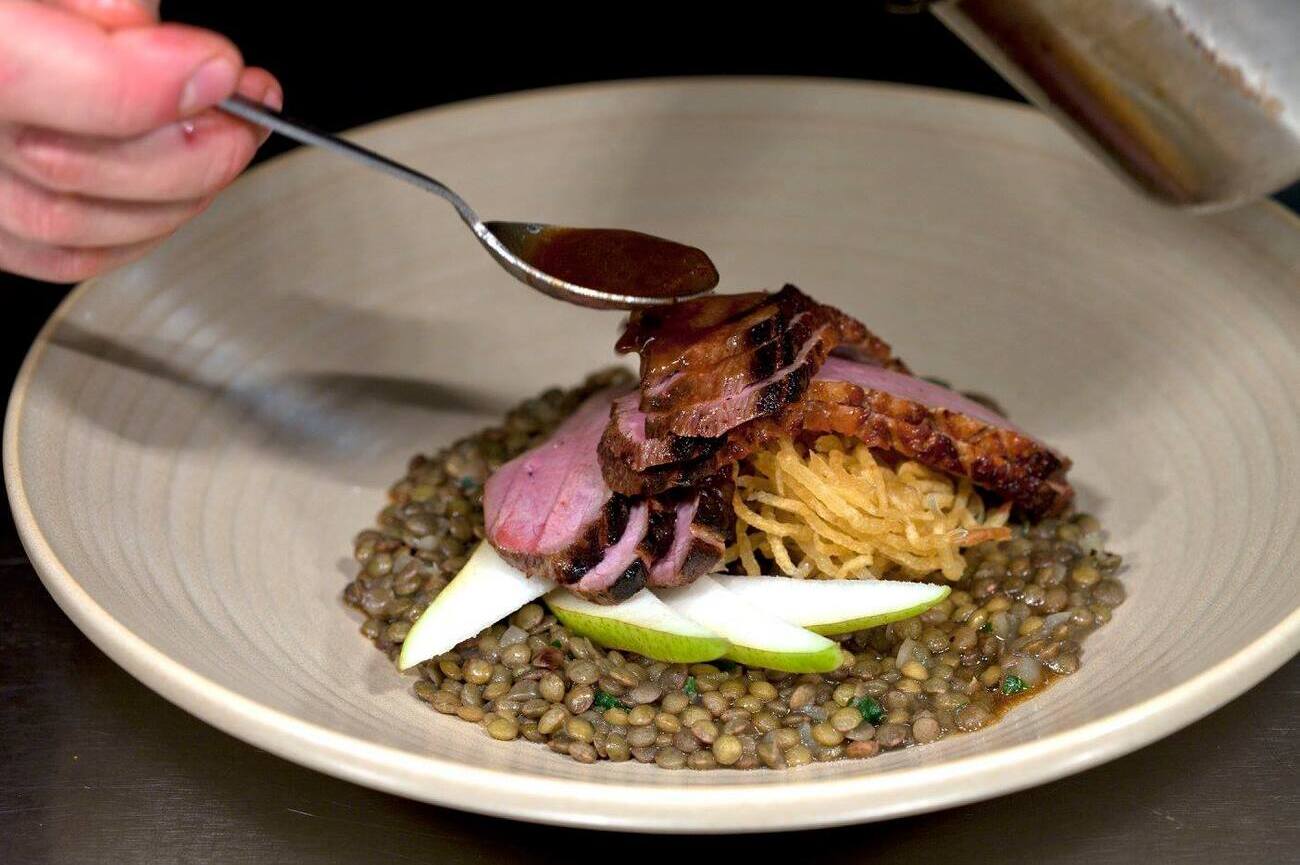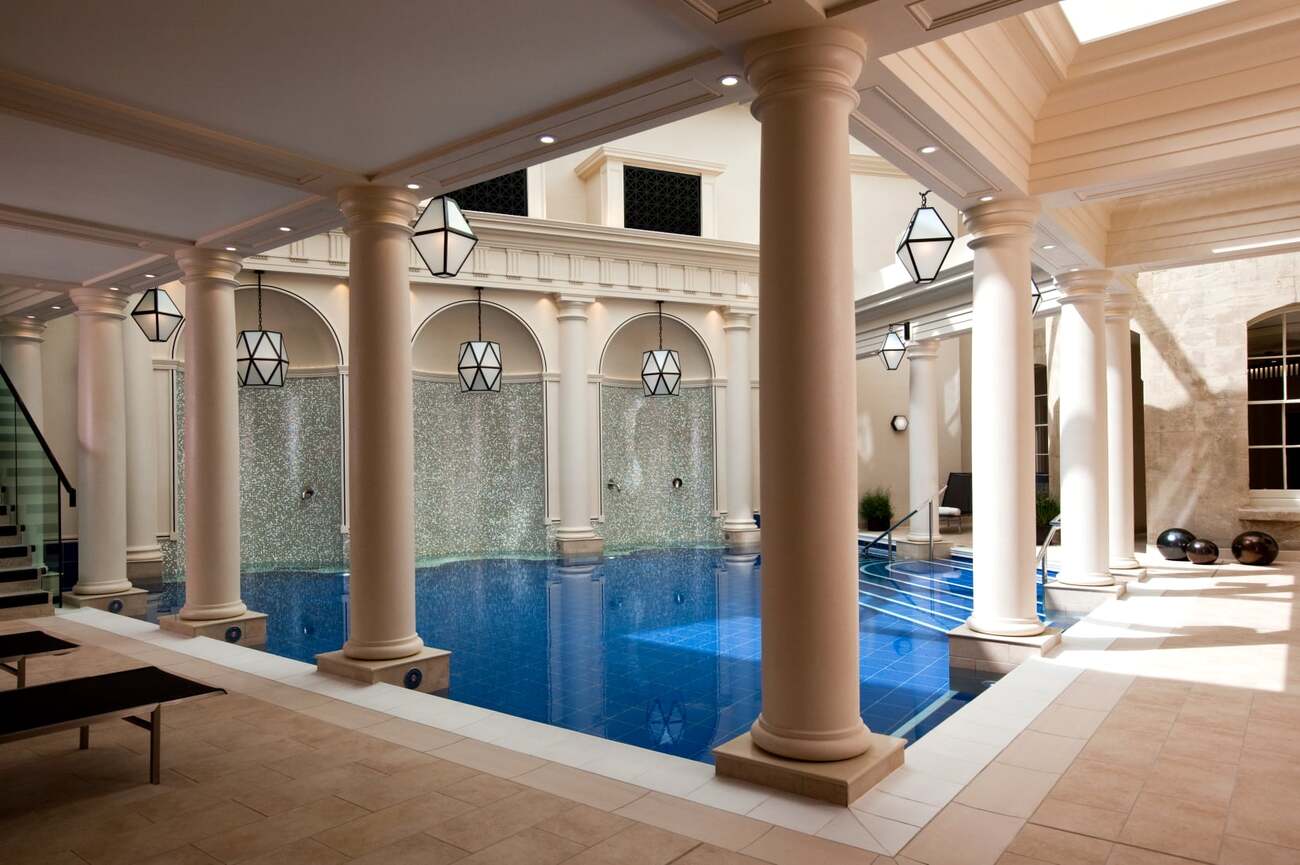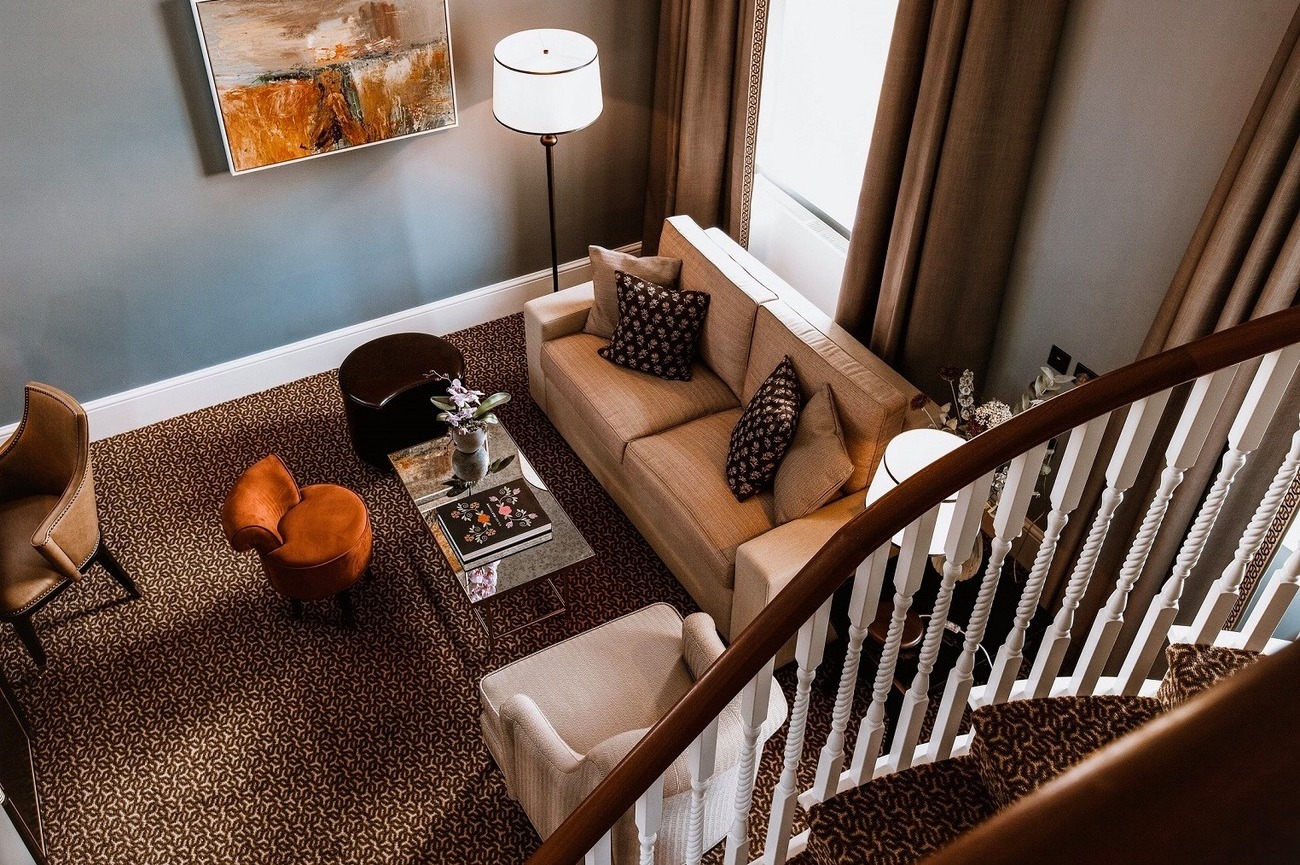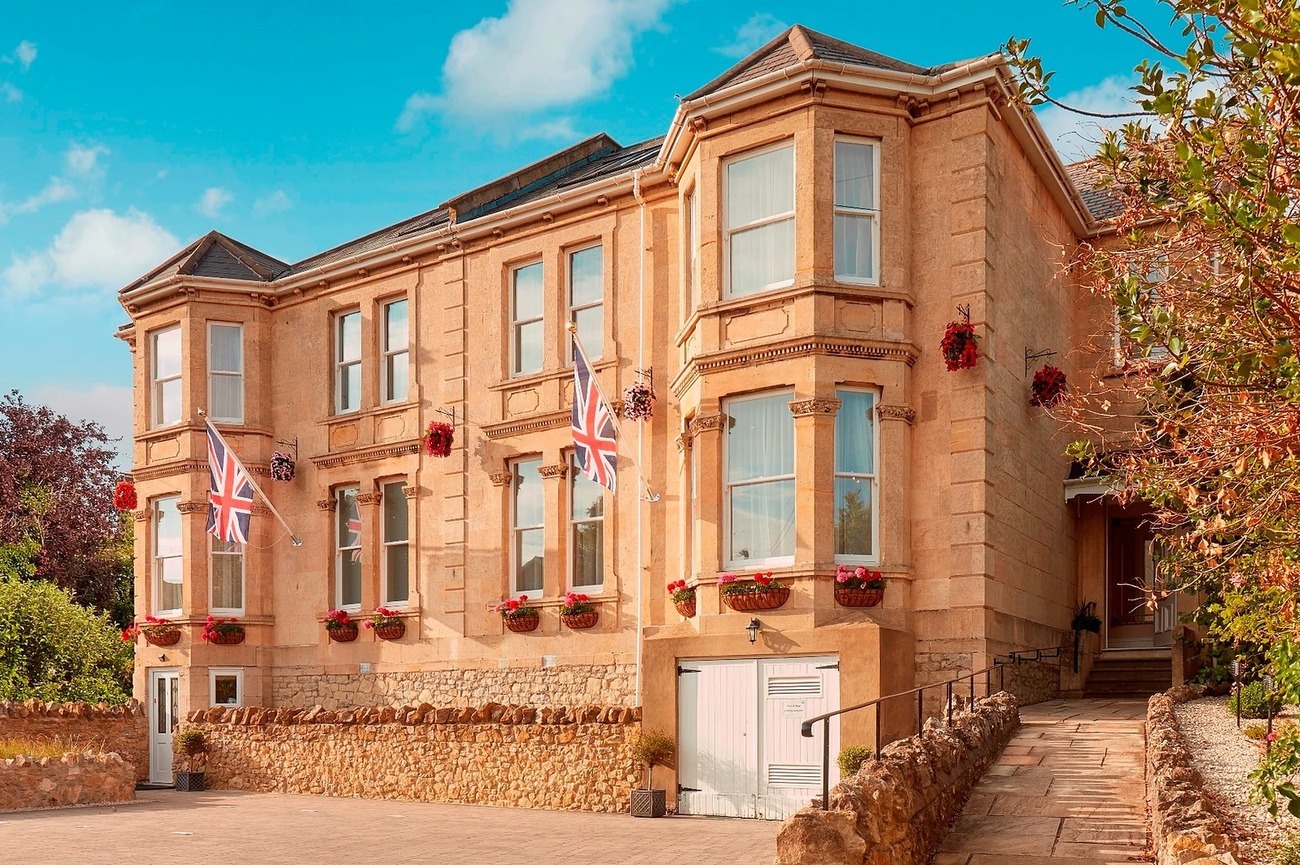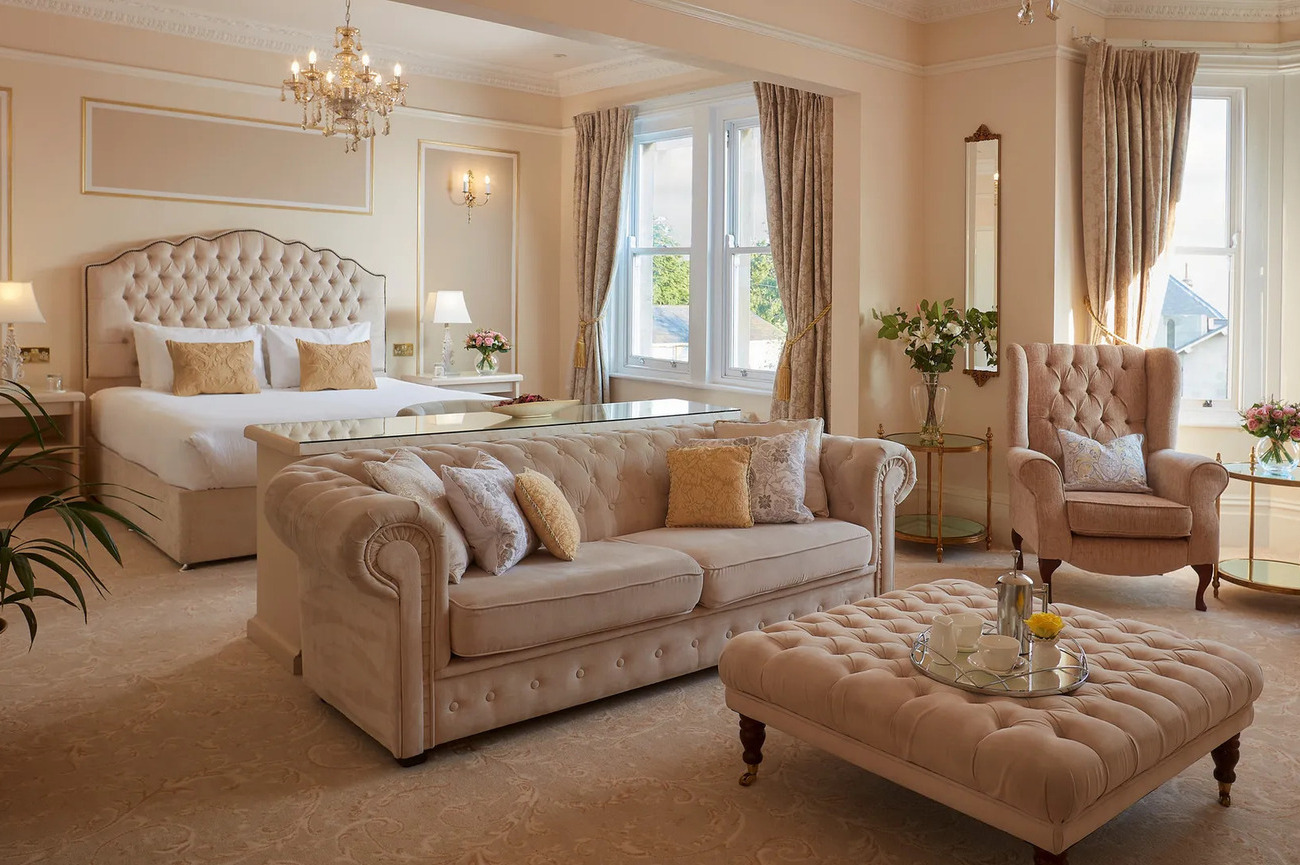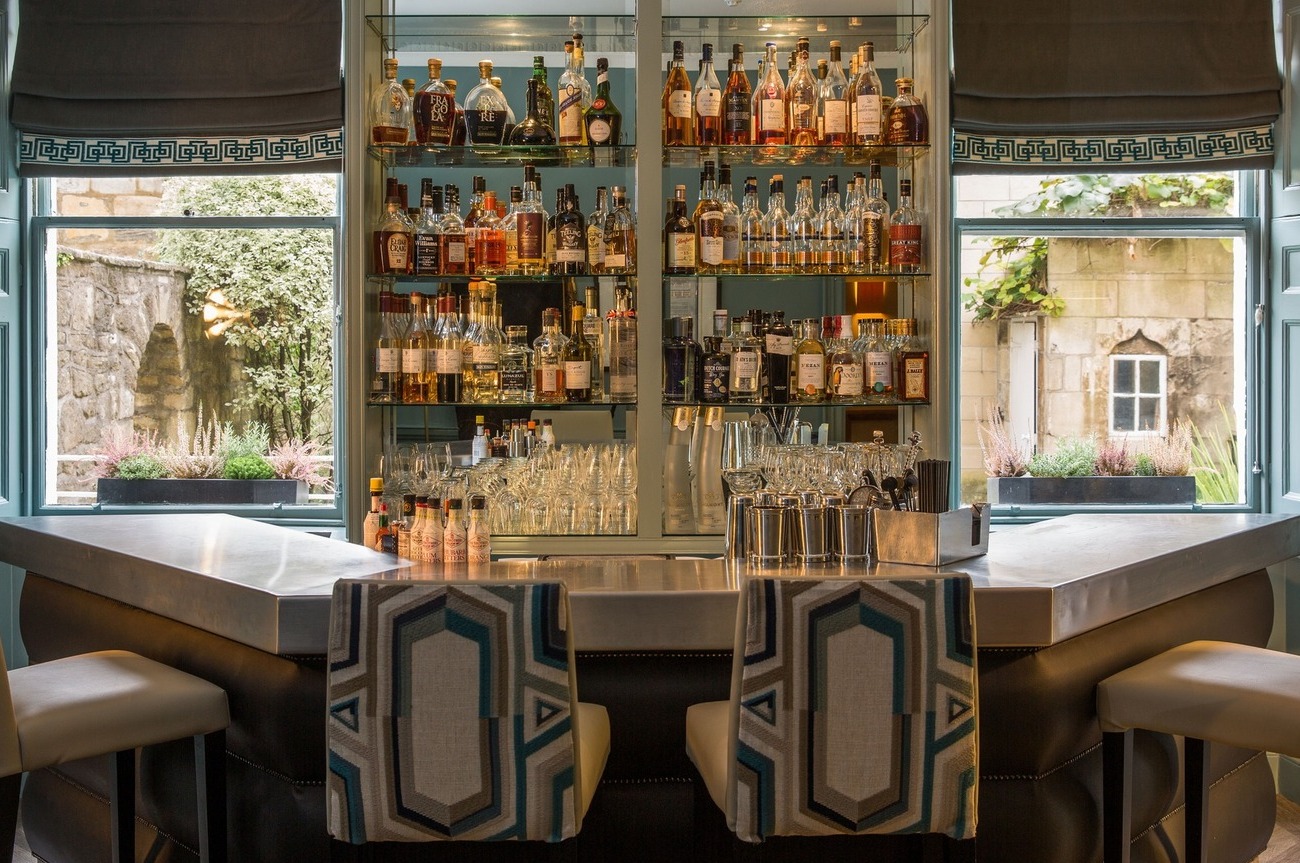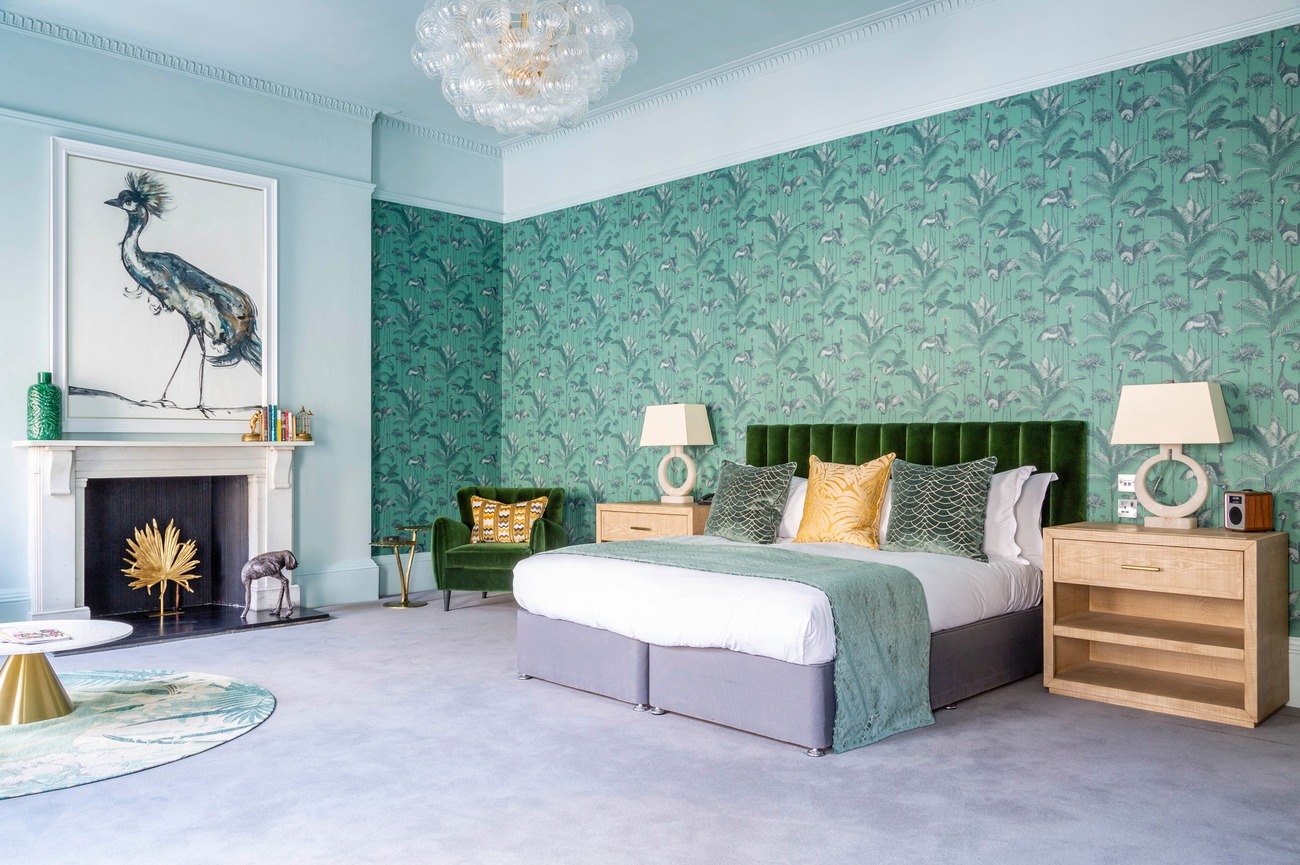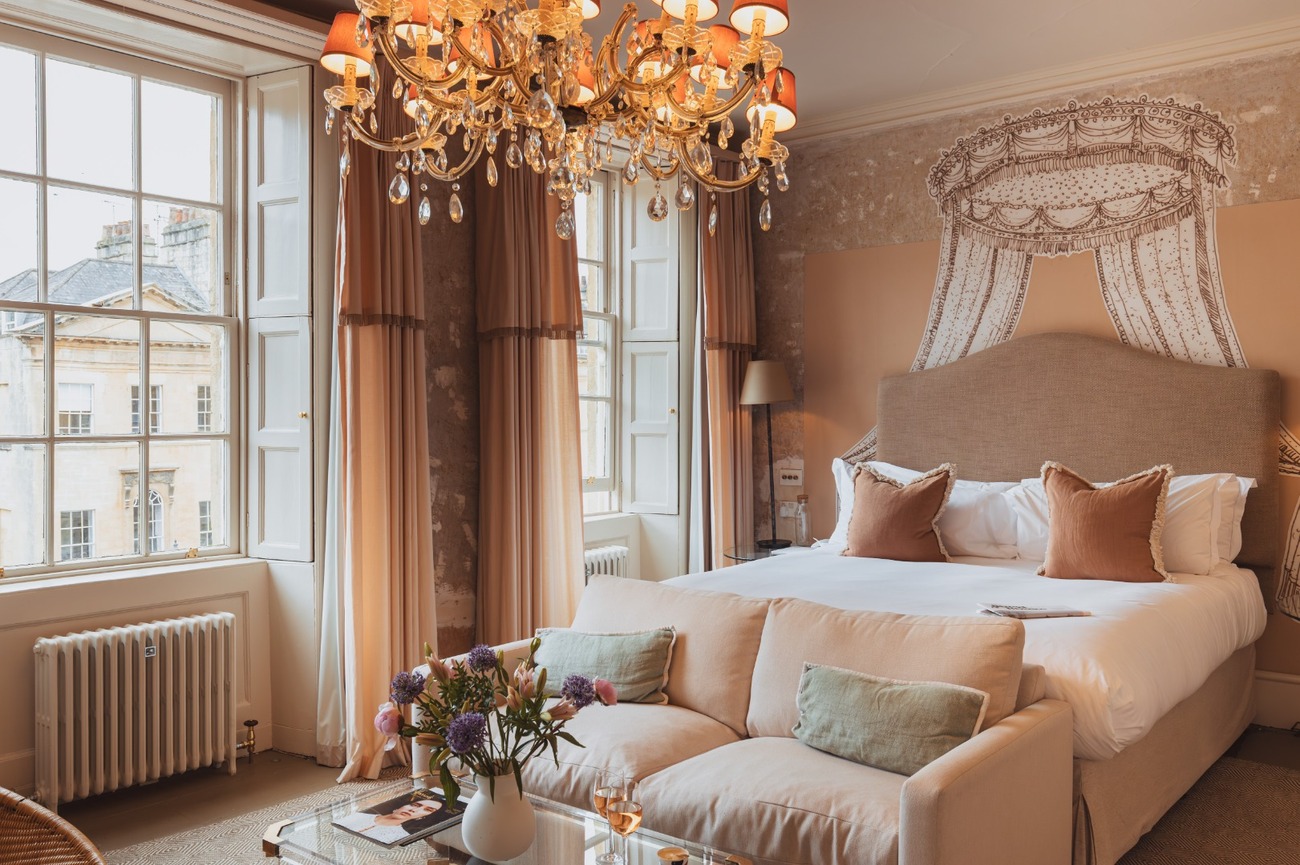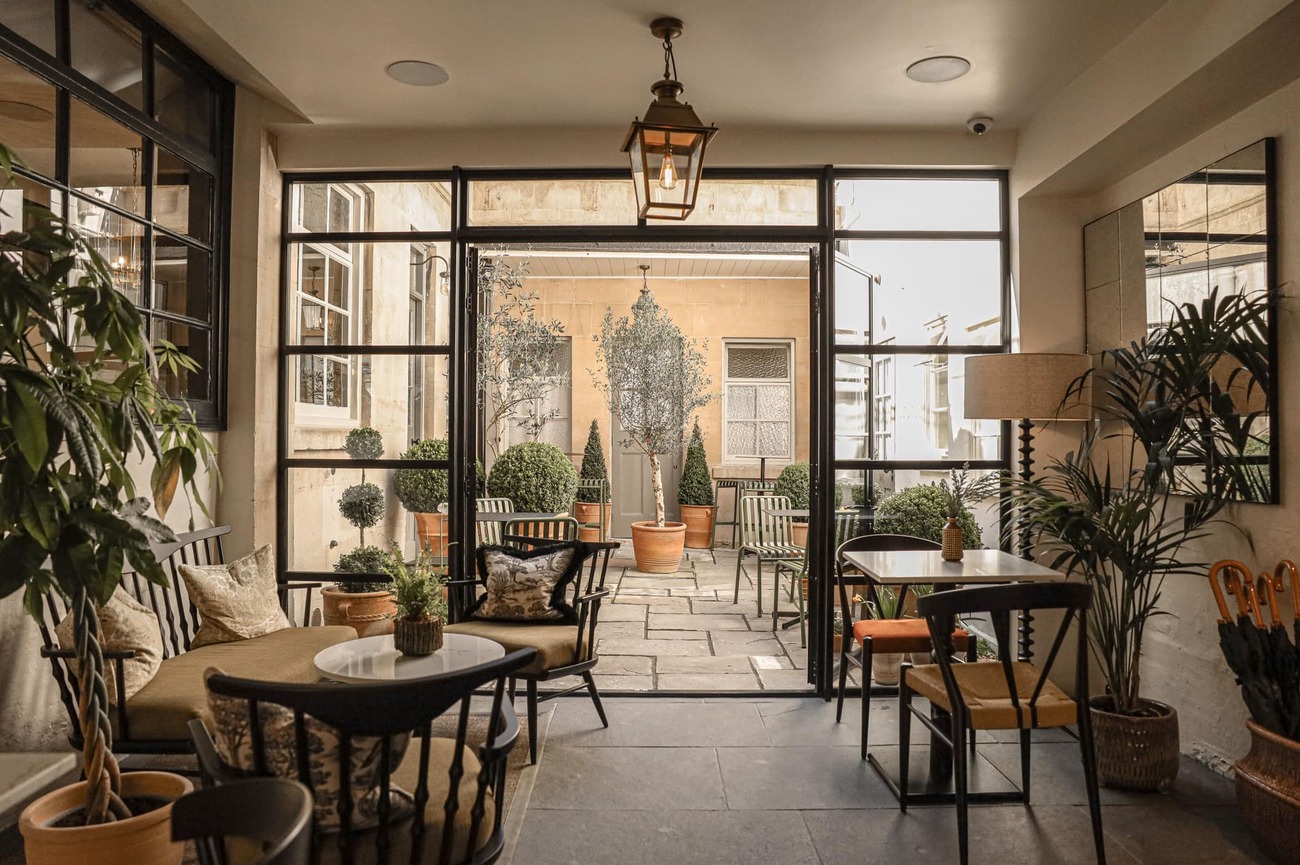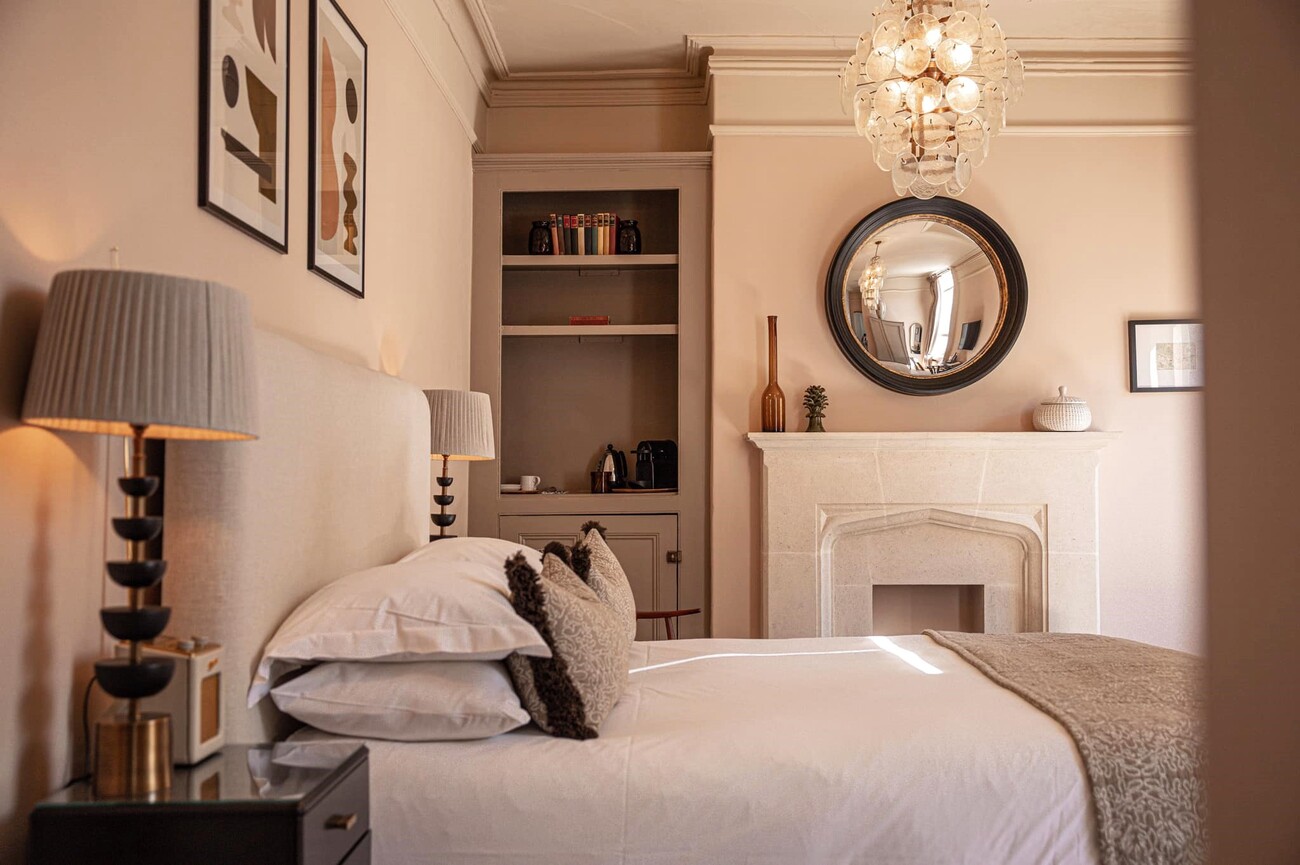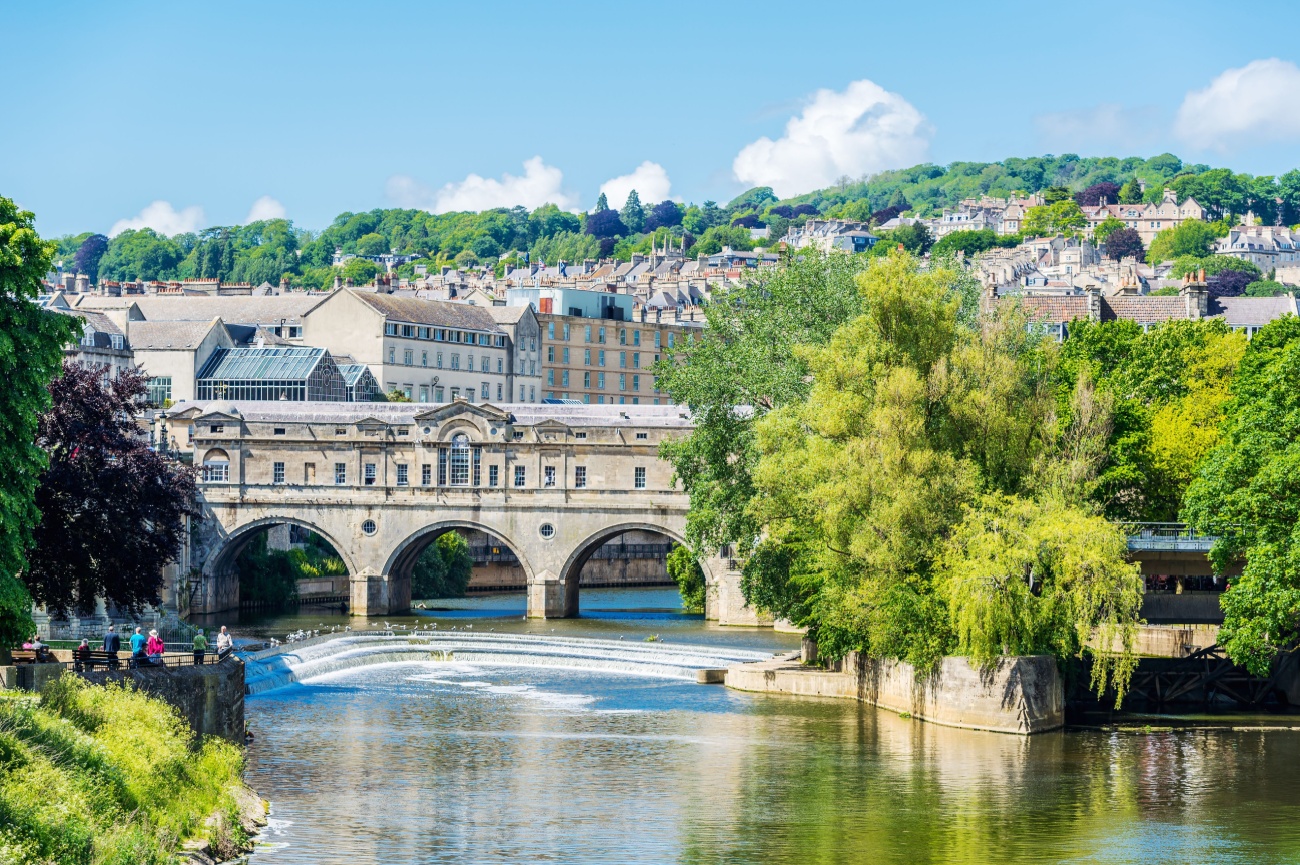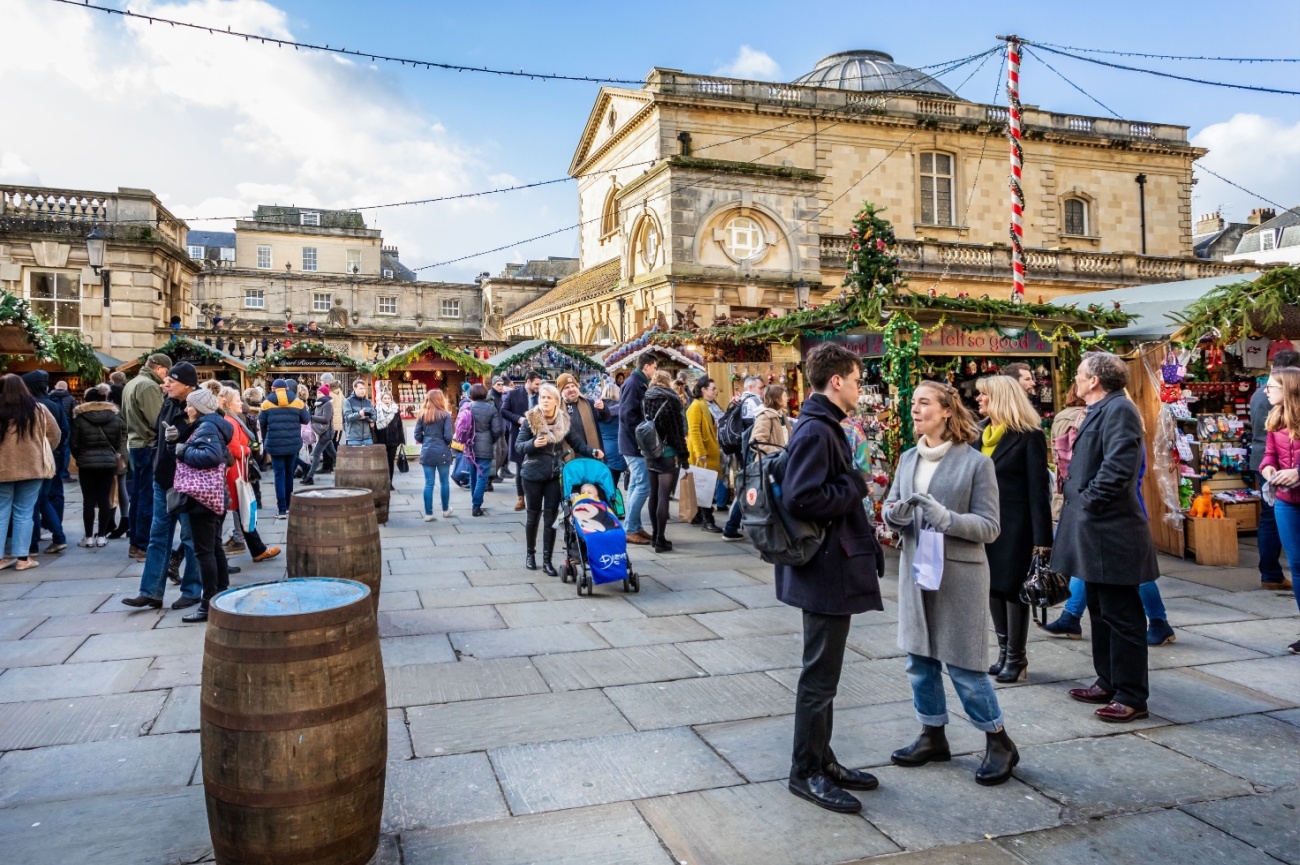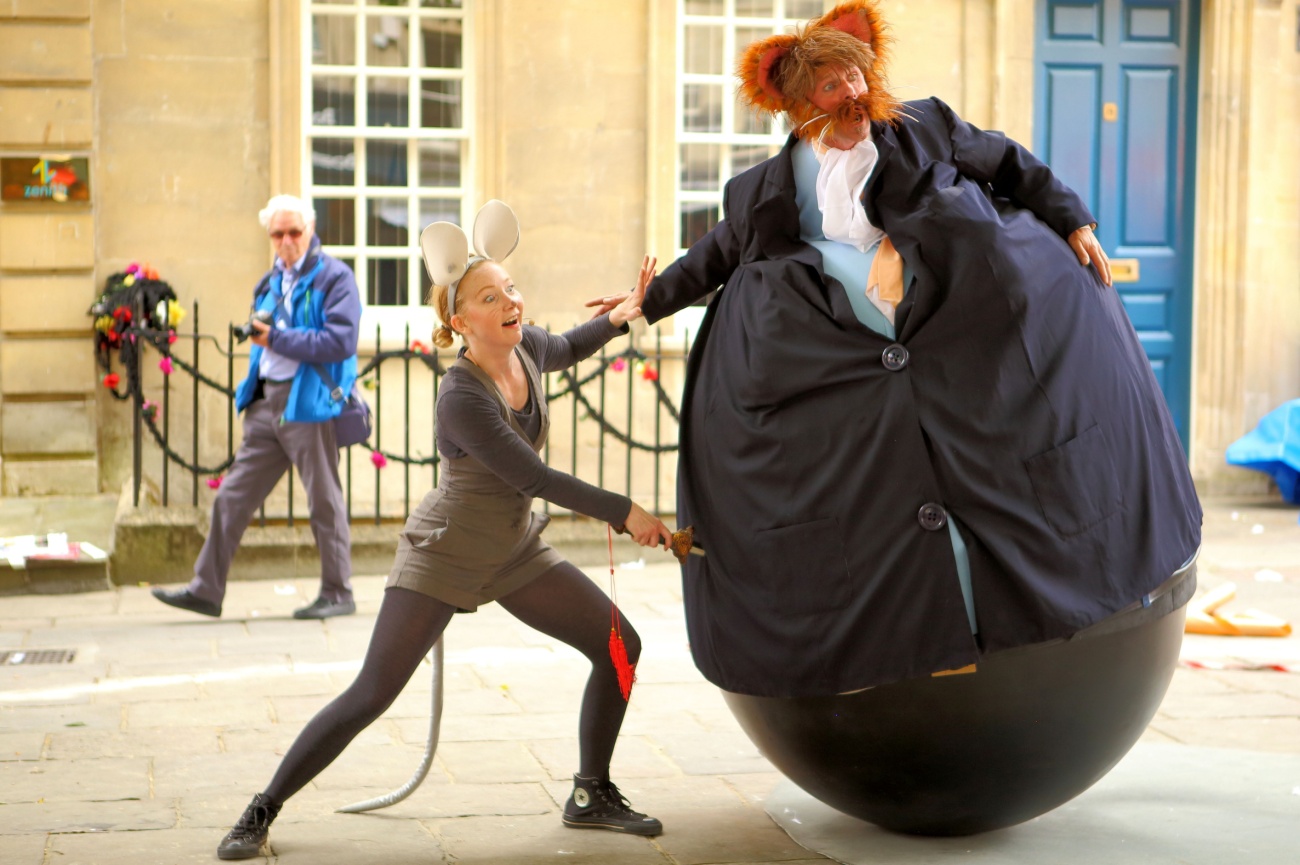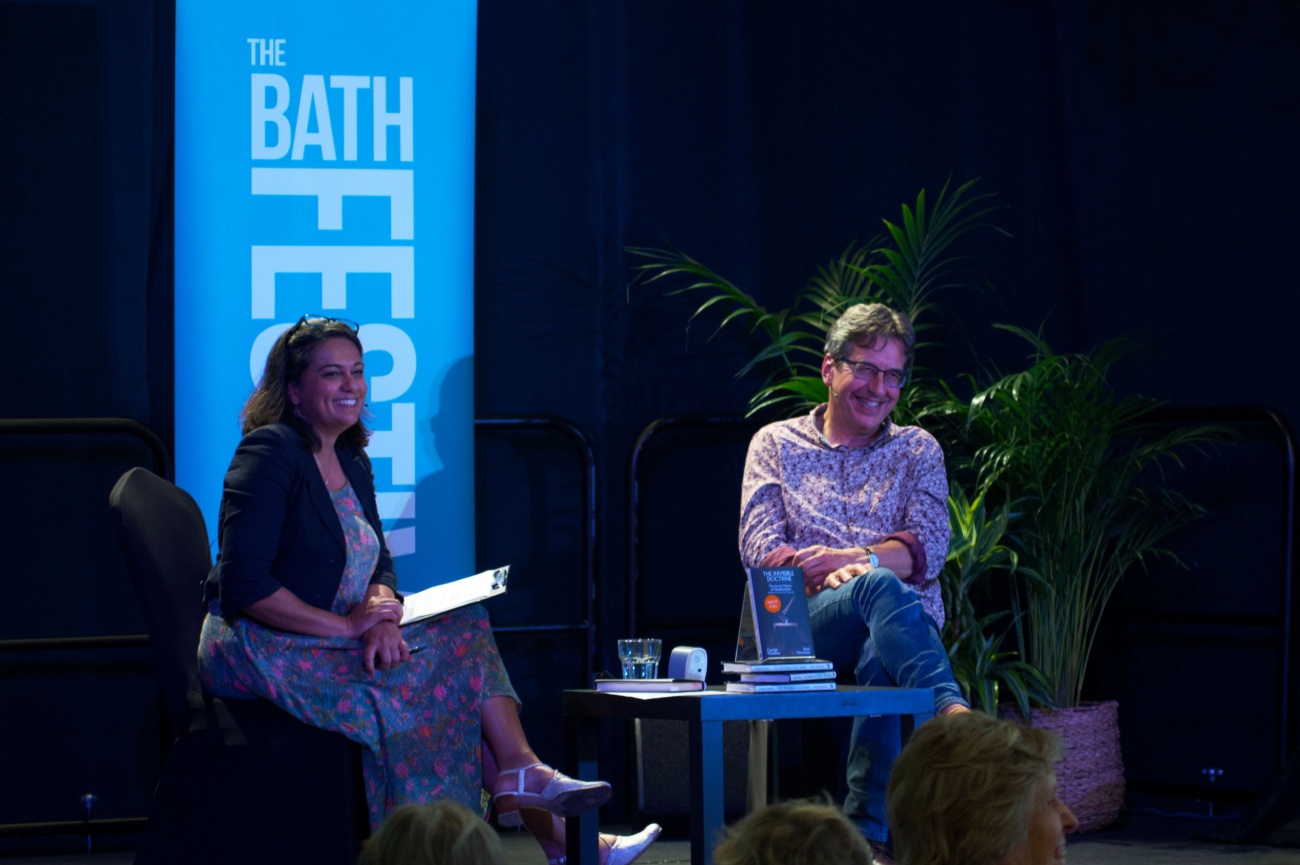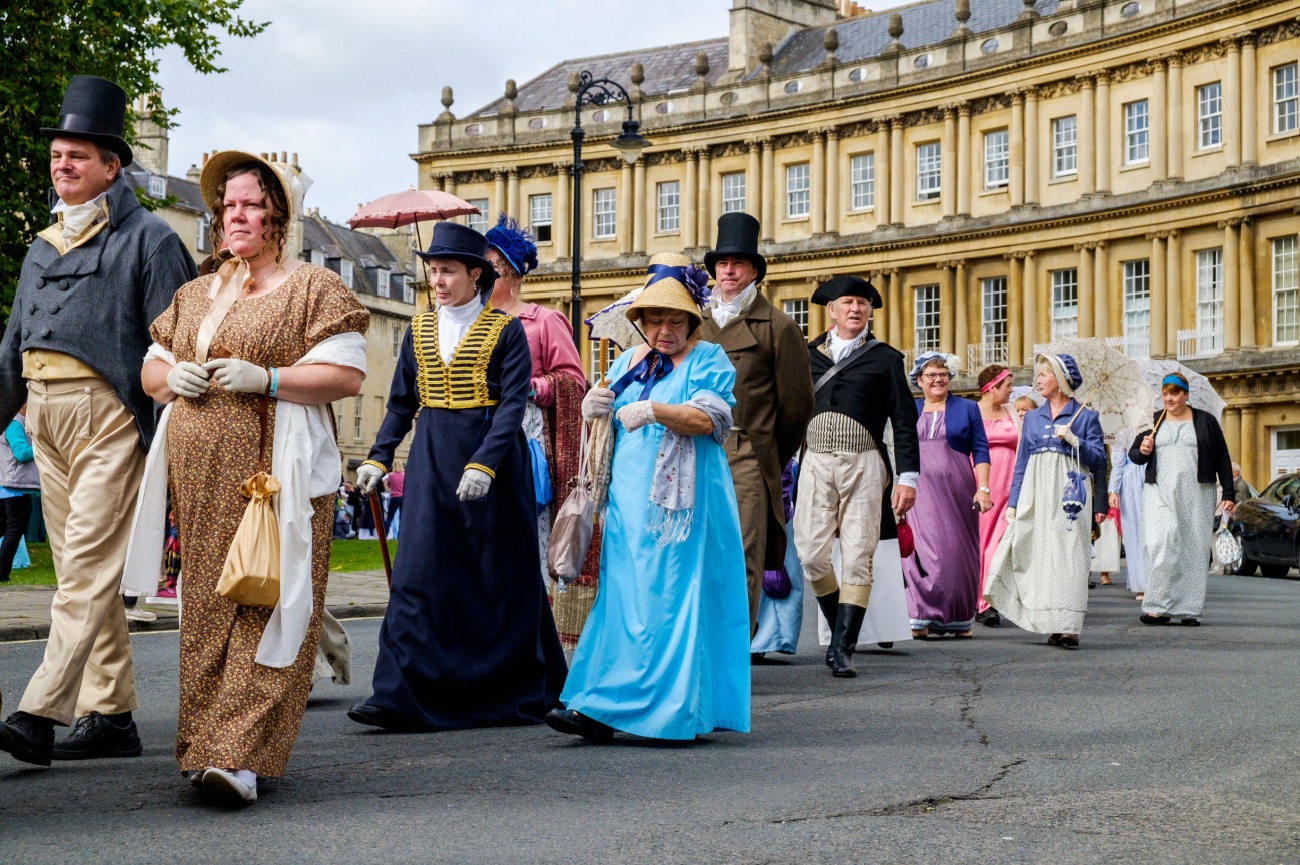Things to Do in Bath: 2-Day Itinerary
Bath is the only UK city designated a UNESCO World Heritage Site in recognition of the ancient Roman Baths and outstanding Georgian architecture. Its rich history, influence on literature, and Palladian-style honey-coloured buildings make it one of the UK's most romantic places to stay and visit.
Day 1

Morning: Roman Baths
The ancient Roman Baths are the most iconic landmark in the city of Bath. When the Romans discovered the natural hot springs in 70 AD, they built these beautiful bathhouses and a temple, which explains the origin of the city's name. Buried beneath the city for centuries, the site was accidentally discovered and excavated in 1878.
Explore the Sacred Spring reservoir, whose mystical waters are said to heal the sick. The spectacular condition of the Roman Baths and Victorian Pump Room make them one of the most popular attractions in the UK and are protected by the World Heritage Site of Bath. You can enjoy all its history and splendour in around two hours.
Bath Abbey
Right across the road from the Roman Baths is the imposing Gothic architecture of Bath Abbey. Upon approaching the grand doors of the West front, you will see the famous Jacob's ladder, which spans the entire colossal frame of the entrance. Take a moment to spot the intricately carved angels ascending and descending the ladder to heaven. Pass through these doors to purchase tickets before admiring the webbed vaulted ceiling. You can also join a guided tour to climb 212 steps up the Tower of Bath Abbey and see the city from a birds-eye view.
Pulteney Bridge
Head around the corner from Bath Abbey to find the Georgian-period Pulteney Bridge. Constructed in 1770, the bridge is a magnificent example of romantic design and engineering. The classical architecture features inspiration from the elegant buildings of Rome and Greece. Notice the symmetry of the bridge, the grand central window, and clean lines typical of Georgian-style facades. The Pulteney Bridge cost £10,000 to build, which equates to millions of pounds today. It is one of only four bridges in the world with shops and restaurants across its full span on both sides.
Day 1, Morning - Bath Tour Map
Afternoon: Herschel Museum of Astronomy
After lunch, visit the Herschel Museum of Astrology. It was once the home of the German-British astronomer William Herschel and his sister Caroline. From this home, William discovered the planet Uranus in 1781. Both the Herschels were talented musicians with William composing 24 symphonies. Browse the home and see what life looked like for them in the 18th century.
Queen Square
Stop briefly by the small quaint garden of Queen Square, just a few minutes walk from the Herschel Museum. The famous architect John Wood the Elder built the square in the Georgian period. An obelisk stands in the centre, erected in 1738 in memory of Frederick the Prince of Wales, who died before becoming the King of England. Surrounding the park are Grade I listed buildings with stunning Georgian architecture, including the Bath Royal Literary and Scientific Institution.
The Jane Austen Centre
Continue north of Queen Square to reach the Jane Austen Centre on Gay Street. The iconic author of Pride and Prejudice lived in Bath between 1801 and 1806 and it is at this exhibition, her literary work is celebrated. The exhibit tells the story of Jane and her writings, all of which, mention Bath. See actors play as Jane's characters, find out about the fashion and high society of the Regency period, and tuck into an afternoon tea.
The Circus
Follow Gay Street north a short distance until you reach The Circus. Three curved rows of historic Georgian townhouses form the magnificent ring. Standing in the centre is a green lawn with ancient trees over two hundred years old. The Grade I listed buildings are the design of Bath's legendary architect, John Wood the Elder. Inspired by the Roman Coliseum, The Circus facade is lined with Doric, Roman, and Corinthian columns and intricately stone-carved wreaths, acorns, nautical symbols, Masonic emblems, flowers, birds, and faces. Famous actors, artists, and celebrities have lived at this address including Hollywood's Nicolas Cage.
No. 1 Royal Crescent
Walk east on Brock Street to admire the Grade I listed building, the Royal Crescent. Five hundred feet long, the Royal Crescent is a stunning example of Georgian architecture, designed by John Wood the Younger, with the building completed in 1774. Its extravagant Palladian-style facade sweeps around into a curve, hence the name. Look out for a yellow-painted door at No. 22, a controversy caused by Miss Amabel Wellesly-Colley in the 1970s for defying the traditional white-door policy.
No. 1 Royal Crescent is the largest property on the Crescent and a townhouse museum. Restored, decorated, and furnished as it would have looked in 1776-1796, the house and original servant's quarters feature room displays, fine art, and a dressing room to see Regency-style costumes.
Royal Victoria Park
Stroll along the Crescent to reach Marlborough Buildings then left past the Royal Crescent Lawn. Notice the ha-ha, a long ditch in the lawn that was carefully designed to be invisible from far away and create the gentle slope of the parkland. During WWII the lawn was split into 72 allotments, earning the nickname "cabbage patch." It wasn't until 1956 that restoration transformed it to its former elegant glory.
Turn right on Marlborough Lane towards Royal Victoria Park to discover 57 acres of ornamental plants, evergreens, forest trees, wildflower meadow, beautiful landscaping, monuments, an obelisk dedicated to Queen Victoria's coronation, a large Victorian pond, a stone bridge, and oak-lined footpaths. A Grade I listed public park, Royal Victoria Park was designed as a pleasure park for carriage drives by architect Edward Davis. It is one of the earliest public parks built in the UK inspired by public parks in Paris and other continental cities. Royal Victoria Park was officially opened and toured by Princess Victoria in 1830. The Princess was only 11 years old at the time, shortly before she became Queen. The central park, known as Middle Common, is largely unchanged from its original design in the early 19th century.
Make sure to visit the secret woodland hideaway, the Great Dell, within the park. What used to be a stone quarry was transformed into a delightful sunken valley in 1839. Restored in 2015 following four years of closure, visitors can enjoy newly constructed aerial walkways and appreciate the beauty of the Dell from various viewpoints. The Great Dell is the home to unusual trees such as Monkey trees and Californian Redwood as well as a Grade II listed Shakespeare Monument and the Jupiter Head sculpture.
Royal Victoria Horticultural and Botanical Gardens
Created in 1839 and extended in 1887, the Botanical Gardens lie on the west side of Royal Victoria Park. Spanning nine acres, the Gardens were originally established following a large donation of 2,000 herbaceous plants and flowering shrubs from an outstanding local botanist. Later, more donations of plant collections, pine trees from the Himalayas, and limestone were given to enhance the gardens. A pool with cascades and a bridge were also added. Take a stroll past the Grade II listed Temple of Minerva, a Roman-style temple constructed in 1913.
Day 1 - Afternoon Bath Tour Map
Day 2

Morning: The Holburne Museum
Start the morning admiring the art collection at the Holburne Museum in Sydney Gardens. The museum houses a treasure trove of fine bronze sculptures, paintings, silver, and porcelain that were the personal collection of Sir William Holburne. The 5th Baronet of Menstrie in Scotland, Sir Holburne was born in 1793 and became a connoisseur of art after leaving the Navy and touring Europe. His collection was donated by his sister and since then an additional 2,000 Victorian items have expanded the collection, including portrait miniatures, embroideries, and oil artworks.
The Grade II listed building itself has a fascinating history. It was formally the Sydney Hotel, an attractive and elegant social venue popular in the 18th century. It was built in 1799 with tea rooms, card rooms, a concert room, and a ballroom. A tavern in the basement, the Sydney Tap, was used by the servants and sedan chairmen who carried the sedan carriages. The hotel was part of the Sydney Gardens, a much-loved pleasure garden, designed in an elongated hexagonal shape, and exclusive to polite society that could afford the entrance fee. The gardens and hotel were frequented by Bathonian resident Jane Austen, who mentioned her fondness of the park and its social events.
In its heyday, there were concerts, public breakfasts, spectacular firework displays, exotic trees, a Victorian grotto, a cascade, a watermill, an impressive labyrinth that measured half a mile, two bowling greens, an aviary, and swings. Sadly, Bath's canal and railway construction cut straight through the gardens, removing the adored labyrinth. Later, the hotel was sold separately and renovated to house the Holburne Museum.
Great Pulteney Street
Walk towards the centre of Bath along Great Pulteney Street, a stately boulevard constructed in 1789. A Georgian facade lines the residential homes on both sides, an interesting building technique that ensures uniformity of the buildings from the front. Individual homeowners purchased a plot of land for each house on the street. They then had the freedom to design and construct their home to their liking, which explains the diversity in architecture viewed from the back.
Sir William Pulteney, 5th Baronet and a Scottish lawyer commissioned the thoroughfare to connect the village of Bathwick to Bath. The Pulteney Bridge and Great Pulteney Street benefitted Sir William who had his estate on the east side of the River Avon. Before the bridge, a small ferry carried passengers to the centre of Bath.
Architect Thomas Baldwin planned for Great Pulteney Street to be part of a new and impressive expansion of Bath with grand streets similar to the main boulevard, majestic squares, and classical Renaissance architecture. Unfortunately, the plans were never accomplished due to the Napoleonic Wars and the French Revolution. In fact, Napoleon Bonaparte, Emperor Napoleon III of France, lived at 55 Great Pulteney Street with his wife and son for six weeks during his exile from France in 1846.
Boat Cruise
Make your Bath trip an experience to remember with a river cruise. Single and double-deck riverboats offer a tranquil river voyage with seats, drinks and snacks on board, blankets, weatherproof covers, and an informal live commentary of the local wildlife and the city's history. You can pay for tickets and board at Pulteney Weir at Pulteney Bridge, however, some operators require pre-booking. Depending on the operator, you can journey to the nearby village of Bathampton or take a 1-2 hour round trip upstream towards the Avon Valley.
Parade Gardens
Neighbouring the Pulteney Bridge are two-and-a-half acres of delightful gardens along the riverside. Still a subscription garden today, the park was initially built as a pleasure garden in 1709 to access and enjoy for a small fee. The immaculate lawns, beautiful borders of bedded flowers, and a sheltered spring walk were planned in the early 18th century to attract fashionable visitors to Bath. The park now also features a 19th-century domed ticket office, a circular pathway with the same diameter as the Stonehenge, monuments, Tuscan-style columns, a 19th-century octagonal bandstand, and spectacular exclusive views across the River Avon. It is open from April to September.
Victoria Art Gallery
Exit the Parade Gardens and walk north again to stop by the Victoria Art Gallery, near Pulteney Bridge. Entry to the permanent display is free, including 1,500 British paintings from the 17th century, sculptures, glass artwork, and marble busts. The small but grand Grade II listed building was designed in 1897 and was originally a public library until 1990. Notice the mahogany staircase, marble columns, marble hallway, domed ceiling, and embossed Zodiac signs. The art gallery was named in celebration of Queen Victoria's 60th jubilee.
Mary Shelley's Frankenstein Museum
Make your way past Queen Square to reach Mary Shelley's Frankenstein Museum - an immersive experience of Gothic horror, mystery, and true history. Set inside a Grade II listed building on Gay Street, the award-winning museum is spread across four fearsome floors to frighten and entertain. During her short time in Bath, the talented yet troubled writer Mary Shelley wrote the world's first science fiction novel, Frankenstein, in 1816. Two terrifying escape rooms, a giant monster head, displays with curious and vintage artefacts, chronicles of Mary's life, and costumed hosts make this a thrilling, imaginative, and memorable encounter.
Day 2 - Morning Bath Tour Map
Afternoon: National Trust Prior Park Landscape Garden
In the southern part of the city lies the 28-acre Prior Park Estate, a lavish expanse of 18th-century landscaped gardens with a steep-sided green valley overlooked by a stately Neo-Palladian mansion that sits at the top. A trio of lakes lie in the gardens with Serpentine Lake, just beside the mansion, flowing water to a cascade and underground to the two lower lakes at the bottom of the valley.
Prior Park sits on what was formally a Norman deer park owned by a bishop. One of the wealthiest men in the country, Ralph Allen, a self-made businessman from Cornwall, purchased the parkland and transformed it into an impressive Georgian landscape. He was instrumental in Bath's establishment as one of the UK's most fashionable resorts by providing building stones from his quarries. Allen hired Bath's most prestigious architect John Wood the Elder to design the Prior Park mansion, which is now a private school.
A major restoration project started when the National Trust took ownership of Prior Park Gardens in 1993. The conservation charity restored the gardens to their original beauty as intended when Ralph Allen was alive. Entrance to the Gardens allows you to amble through the woodlands and visit the curiosities of the grounds including The Cabinet, Sham Bridge, Ice House, Thatched House, a Victorian summerhouse, ruins of a mysterious Gothic temple, and fish ponds full of carp. Mrs Allen's secret Grotto is still under renovation.
Palladian Bridge
The Palladian Bridge at the foot of the Prior Park Estate is truly spectacular. It is one of four bridges of its kind worldwide. The bridge's classical design was inspired by the work of 16th-century Venetian architect, Andrea Palladio. Ralph Allen commissioned the architect Richard Jones for the bridge plans and its construction was completed in 1755.
Alexandra Park
Follow the steep hill down from Prior Park back towards the centre of Bath. Along the way, you will reach Alexandra Park, which sits at the top of Beechen Cliff. Covering 11 acres, Alexandra Park was opened in 1902 in honour of Queen Alexandra and to celebrate the coronation of King Edward VII. The public park is free to visit and is a wonderful place to see panoramic views of the city below. There's also a bowling green, petanque terrain, Jacob's Ladder, and outdoor table tennis.
Day 2 - Afternoon Bath Tour Map
Day Trips from Bath
- Longleat: The first safari park to open outside of Africa in 1966, Longleat is home to over 120 species of animals such as lions, giraffes, hyenas, koalas, monkeys, cheetahs, and gorillas. Explore a drive-through safari, a walking safari, an African village, a boat safari, the Elizabethan Longleat House, a railway, an adventure castle, and a maze. Take a whole day to enjoy the Longleat Estate and its 900 acres of landscaped gardens. Located 18 miles south of Bath, the park is accessible by car or train from Bath to Frome Station.
- Wookey Hole Caves: A day trip to Wookey Hole Caves is a must for adventurous tourists. The largest show caves in the UK, you can follow a guided tour through eight huge underground caverns and chambers. The prehistoric caves feature stalactites, stalagmites, mystical rock formations, and a "cave moon." Be amazed by circus performances, a museum, adventure golf, and a soft play area. Drive 40 minutes by car from Bath or take the bus.
- Cheddar Gorge and Caves: The Cheddar Gorge subterranean show caves are another spectacular site at The Cliffs of Cheddar in Somerset. Experience the deep caverns, two escape rooms, rock sports including climbing and caving, a 3-mile clifftop walk, a museum, Jacob's Ladder, and a 274-step lookout tower with incredible views across the Mendip Hills. It's a 45-minute drive from Bath by car and there are buses to the attraction.
- Aldwick Vineyard: An award-winning 11 acres of vines at Aldwick Estate makes it the largest vineyard and winery in Somerset. Book a 90-minute guided tour of the idyllic vineyards and sample the home-grown English wine. Drive 45 minutes to the Estate by car or take a combination of the train and bus from Bath.
- The Bird of Prey Project: Handle, feed, and fly an owl or a hawk at the Bird of Prey Project near Newton St. Loe. Watch a bird of prey display at the centre, shown twice daily. Meet over 20 species of majestic birds such as eagles and falcons that are protected and cared for. Experienced animal keepers will tell you everything you want to know about each bird of prey and their behaviours. Drive 10 minutes from Bath by car or take one of several buses.
- Bristol: A 40-minute drive from Bath, Bristol is a city steeped in history that dates back to the Romans, Saxons, and Normans, and was a major port in the 16th century. Stop by the pretty Bristol Harbour, the city centre marina for watersports surrounded by waterside museums and restaurants. It is also Banksy's hometown so keep your eyes peeled to catch sight of some of their original street art.
- Wells: England's smallest city is Wells in Somerset, a 40-minute drive southwest of Bath. It is a medieval city with an 800-year-old medieval bishop's palace, a 13th-century Norman cathedral, and Vicar's Close – a 14th-century intact residential street adorned by a cobbled road and ancient terraced cottages.
- Glastonbury: An hour's drive south of Bath leads you to Glastonbury. It is another medieval town with 7th-century Abbey ruins, the 14th-century St. Michael's Tower on a steep hill (rumoured to be the resting place of Sir Arthur), two mystical freshwater springs, and hippie shops and cafes.
- American Museum and Gardens: West of Bath in Claverton is the American Museum and Gardens, just a ten-minute drive from the city centre. It was established in the 1960s by an American couple to showcase American arts and culture. They believed the British only learned of the USA through Western films and that it might be educational to wow and surprise their audience with impressive artworks from across the Atlantic. There are replica rooms, artefacts, decorative arts, a wagon in the Victorian manor house, and 125 acres of formal gardens.
- Dyrham Park: A towering Baroque country house built by William Blathwayt in the late 17th century is open for public tours on the Dyrham Park Estate. It is a stunning piece of architecture set within 270 acres of ancient parkland just 25 minutes driving north of Bath. There is a deer herd, landscaped gardens with sweeping vistas of the Cotswold Ridge, orchard, vibrant formal planting, and an exhibition of fine art and Dutch ceramics.
- Iford Manor Gardens: The Grade II-listed Iford Manor House and surrounding Grade II Italianate gardens are the work of the Edwardian designer, Harold Peto. The house has some features dating back to the 15th century but most of it is 17th century Georgian. The romantic gardens are full of ornamental flowers, wisteria, blossom trees and Roman and medieval stones from Italian churches. The estate is a twenty-minute drive from Bath and remains the property of Peto's family, but it is now open to the public to enjoy.
- Lacock: The unspoilt beauty and charm of Lacock make it a place worth visiting less than 45 minutes away from Bath. Entirely protected by the National Trust, Lacock is a Cotswold village frozen in time, as the buildings date between the 13th and 18th centuries. No modern supermarkets or chain fashion brands are on the high street, or telephone poles above ground. Explore the village, Lacock Abbey, and famous streets used in film and TV.
- Corsham Court: Travel back in history with a visit to an Elizabethan mansion house, gardens, and fine art at Corsham Court. Near Chippenham, the estate is a 40-minute drive from Bath. The stately house was built in 1582 and has been remodelled over the years. The formal parkland features formal gardens and large arboretum designed by Capability Brown.
- Stourhead House and Gardens: Stourhead House is an 18th-century Palladian mansion near Mere, with 2,650 acres of landscaped parkland. It was described as a living work of art in the 1740s when it was first opened. The estate includes a lake, classical temples, a tower, farmland, inspirational views, a shop, and cafe.
Other Things to See in Bath
- Bath Aqua Glass: Watch glassblowing demonstrations by expert artisans and create your own glass masterpiece in a workshop. Bath Aqua Glass is a studio and shop just a minute walk from the centre. They use copper oxide to blow their glass, one of the main minerals in the Roman Bath spa waters.
- Bath Racecourse: Established in 1811, the racecourse is located at Lansdown, three miles northeast of Bath. Around twenty flat races are hosted each year. In 2016, the racecourse had a multi-million-pound renovation and has received several awards.
- Sally Lunn's Eating House and Museum: A kitchen museum with a curious baking legend is within Bath's oldest house, dating back to 1482. Here, Solange Luyon, a French Huguenot refugee, started baking the famous Bath Bun in 1680. She became known by her English name Sally Lunn. Today, visitors can see the original kitchen where she baked bread and taste the delicious and unique Bath Buns, similar to large fluffy brioche bread, in the tea room.
- Thermae Bath Spa: Dating back 2,000 years, the natural thermal waters in Bath are the only hot springs in the UK. Book a spa day at Thermae Bath Spa to enjoy the therapeutic and health benefits of the hot springs. The spa features an open-air rooftop pool, Roman steam room, Georgian steam room, infrared room, ice chamber, celestial relaxation room, and the mineral-rich Cross Bath.
- Bath Boating Station: Rent traditional rowing boats from 1894, punts, and wooden canoes at this Victorian boating station. On the bank of the River Avon near Sydney Gardens, the boating station also has a restaurant, tea gardens, and a picnic area.
- Bath Narrow Boats: Sightsee and soak up the tranquillity of the Bath waterways by hiring a narrowboat. Choose a half-day or full-day rental to cruise down the Kennet and Avon canals. Try a one-of-a-kind experience by staying aboard a narrowboat bed and breakfast.
- Theatre Royal: One of the most prestigious theatres in the country set within a Grade II-listed building in Bath. The theatre has been hosting dramas and performances since 1805.
- Museum of East Asian Art: Displaying works spanning a 7,000 year period, the museum is the only one in the country solely dedicated to East Asian Art. It holds a large collection of ancient Chinese art including translucent carved jade, rare bronzes, and ceramics adorned with shimmering handpainted dragons.
- Museum of Bath at Work: Those with a curiosity into Victorian England will be in their element at this museum on Julian Road. A reconstructed Victorian bottling factory spans an entire floor with original shop fittings, workshops, and offices. Another floor displays more Victorian artefacts from working Bath such as carriages and a reconstruction of Bath stone mine, as well as vintage cars.
- Beaux Arts Bath: A contemporary private art gallery established in 1979 in the centre of Bath. See or purchase art pieces from highly-esteemed and talented painters, sculptors, and ceramists. There are regular exhibitions to browse throughout the year.
- 44AD
Artspace: Admire modern artworks in various mediums at this small
independent art gallery and artists' studio. Located on Abbey Street, it is in
the perfect place to pop in and see the temporary exhibitions.
Things to Do with Kids in Bath
Bath is a family-friendly city with children's activities at most attractions. Children under five are usually free. Besides the museums, there are plenty of well-kept parks and gardens for kids to let off steam and run around Bath City Farm: Just three miles outside the city, Bath City Farm is free to access as the charity organisation accepts only donations. Across 37 acres of working farmland, children can see chickens, pigs, and ducks. The farm sells special food to have a go at feeding the pygmy goats. There's also a children's play area, woodland, wildflowers, nature trails, and a cafe.
- Avon Valley Adventure and Wildlife Park: Six-and-a-half miles from Bath is the Avon Valley Adventure Park in Keynsham. The park is full of fun amusements including a mini jeep safari, miniature railway, adventure play park, animal encounters, dinosaur valley, and quad bikes.
- Bath Skyline Family Discovery Trail: Just a short walk from the city centre is the Bath Skyline, managed by the National Trust. There are several free circular walking trails across the grassy slopes, woodland, and meadows to admire the views of the city below. The Family Discovery Trail is only two miles around Claverton Down. It's ideal for kids and there's a play area in the woods.
- Herschel Museum Family Trail: The "Amazing Astronomy Trail" at the museum is an interactive and educational exploration of the museum, just for kids. Children under 18 enter the museum for free with an adult and the trail map is £1.50.
- Prior Park: Families with youngsters can enjoy the "Nature Explorers Trail," the "Brass Rubbing Trail," and play dens at Prior Park. The beautiful gardens and forest are great for bug hunting, sword fighting with sticks, making natural art, looking for fish in the ponds, grass whistling, and having a picnic.
- Victoria Falls Adventure Golf: Take the kids to practise their putting skills in the centre of Bath. The adventure golf course features 18 holes along a fun route that will test their hand-eye coordination, sportsmanship, and patience. The course is surrounded by trees and plants, bridges, waterways, ponds, and flowers, which also light up at night for glow golf sessions.
- The Museum of Bath Architecture: Five minutes from The Circus is a museum dedicated to the history of Bath architecture. It is housed in the Countess of Huntingdon's Chapel, built in 1765 in a Gothic revival style, quite different to the Classical Georgian architecture everywhere else in Bath. The chapel was originally an evangelical place of worship but was purchased and restored by the Bath Preservation Trust.
Where to Eat in Bath
- Montagu's Mews: The highly-esteemed restaurant, bar, and outdoor terrace at the five-star Royal Crescent Hotel & Spa offers a menu with modern British cuisine and local seasonal produce. Try the six-course tasting menu, all-day dining, or the afternoon tea.
- The Chequers: In the city centre lies a popular pub with elaborate dishes such as steak au poivre, pan-fried duck breast, and Devonshire crab with yuzu. The food has been awarded the Michelin Bib Gourmand for quality food at moderate prices.
- Olive Tree: For an exquisite fine dining experience, reserve a table at the only Michelin-star restaurant in Bath. Part of the Queensbury Hotel on Russell Street, the restaurant earned its first Michelin star in 2018. Savour the delights from the tasting menus of three to nine courses.
- Upstairs at Landrace: This eatery is mentioned in the Michelin guidebook as an artisan bakery downstairs and a reputed restaurant upstairs. Wonderful and unique British and Mediterranean dishes, such as Westcombe veal chop with leeks, Cantabrian boquerones, and Amalfi lemon tart grace the menu.
- Henry's: Nestled in the heart of the old city, Henry's is a low-key chef-owned townhouse restaurant that serves gorgeous creative cuisine. Raving reviews from The Guardian, The Good Food Guide, and the Michelin Guide prove its high culinary esteem.
- The Pump Room: Constructed in 1789 and once the heart of the Georgian social scene, the Pump Room was where they first began drinking the thermal bath waters for health. The original King's spring water fountain still stands in the restaurant today. Visit this historic building for a sumptuous afternoon tea alongside live music from a talented trio and pianist.
- Wilks: An intimate and niche gastronomic restaurant, listed in the Michelin Guide with just five tables for dinner guests. The menu changes daily according to the fresh local produce of the morning. It is run by James Wilkins, an extraordinary chef who trained with Hans Schweitzer, Gordon Ramsay, and Stefano Cavallini.
Where to Stay in Bath
- The Gainsborough Bath Spa (5 stars): Stay in one of the luxurious and modern 99 bedrooms at the Grade II listed Gainsborough Bath Spa. It is named after one of the greatest British landscape painters of the 18th century, Thomas Gainsborough. Take a dip in the spa facilities, supplied by mineral water from the thermal natural spring, and stroll within the award-winning gardens.
- Bathen House (5 stars): A fairly new establishment is Bathen House, which opened in 2018. It was once an Edwardian manor house and is now an elegant boutique hotel in the western suburbs. Each of the 12 bedrooms is cosy and plush, complete with a marble ensuite bathroom and a bathtub. The restaurant offers excellent and sophisticated dining.
- The Queensberry Hotel (4 stars): The hotel in the city centre is full of character and charm. It is home to the only Michelin-star restaurant in Bath, making a foodie's choice. All 29 bedrooms feature stylish wallpapers from Divine Savages, Georgian fireplaces, and chandeliers. The drawing room and hidden courtyard garden are pleasant places to perch.
- No.15 by GuestHouse (4 stars): A unique stay awaits at this hotel with an underground spa. Situated on Great Pulteney Street, the grandest Georgian street in Bath, guests aren't far away from all the best sights and attractions. There are 36 ethereal bedrooms for the highest standards of deluxe and comfort. The underground British cuisine restaurant and free-to-raid pantry put this stay top on a traveller's list.
- The Yard (3 stars): Don't let the three stars fool you, this 18th-century coaching inn has been transformed into a chic designer hotel. A total of 14 bedrooms are tastefully and individually decorated with eclectic flair. The central location couldn't be better for wandering the city streets, parks, and museums.
Best Time to Visit Bath
May until September: To make the most of Bath, the drier and longer summer days in June to August are best for sightseeing until the sun goes down. The architecture and lush landscape gardens really sing in the sunshine. However, if you prefer to avoid the crowds, try visiting in the lower tourist season during spring and autumn. The month of May should see a little less rain than earlier in the year, meanwhile, it's warm enough to stay out all day ambling and getting good views from the surrounding hills. In September, you can enjoy the last of the summer heat without as much intensity and noise.
Winter closures: Be aware that certain attractions close during the winter months. The outdoor Great Bath at the Roman Baths is closed from November until February, in addition to Royal Victoria Park, Prior Park Landscape Garden, and Alexandra Park. The boating station, boat tours, guided walking tours, and sightseeing buses may also have reduced business hours.
Bath Festivals
- Bath Fringe Festival: During 17 days from the late May Bank Holiday, you can enjoy the annual multi-arts Fringe Festival in Bath. There are around 200 events including theatre, dance, spoken word, comedy, music, and visual art. The festival has its roots in the Roman era when sideshows and street fairs became popular amusements around temple festivals. This makes it one of the oldest festivals in England. It is now a renowned cultural event that fosters creativity and innovation in the arts.
- Bath Oktoberfest: In mid-October, the city welcomes the two-day Bath Oktoberfest - a taste of Germany in England. Head to Royal Victoria Park to try axe-throwing, beer tasting, German mulled wine, cider, traditional German oompah bands, mouth-watering authentic food, karaoke, Bavarian-style dances, and fancy dress competitions. Tickets can be purchased online.
- The Bath Festival: For ten days in May, music and books are celebrated at the oldest and biggest festival in Bath. There will be live music, talks by authors and poets, writing workshops, and walking tours. The whole city comes alive with jazz, classical, folk rock, swing, soul, and acoustic performances in cafes, museums, churches, pubs, bars, and shops as well as from outdoor stages in the parks during the opening night, "Party in the City."
- The Jane Austen Festival: Held in September every year, the Jane Austen Festival features Regency balls, walking tours, talks, theatricals, evening soirees, workshops, breakfasts, croquet games, and performances over ten days. It's the biggest Jane Austen gathering in the world. Fans of Austen's literary work and the Regency period will adore this festival full of well-organised events. Purchase tickets from the Jane Austen Centre website.
- Bath Comedy Festival: The largest comedy festival in South West England is a treat for anyone in need of a good laugh. Held around March or April each year, the festival includes stand-up comedians, improv shows, and comedy sketches. Over 250 performances take place in various venues around the city, so make sure to check the website for the details.
- Glastonbury: What started as a small hippie gathering in the 1970s has transformed into the world's largest outdoor greenfield music and performing arts festival. Located in Pilton, just 20 miles from Bath, the festival aims to stimulate youth culture with global music artists, theatre, circus acts, cinema, poetry, and painting. The extravaganza takes place in June.
Our offices:
